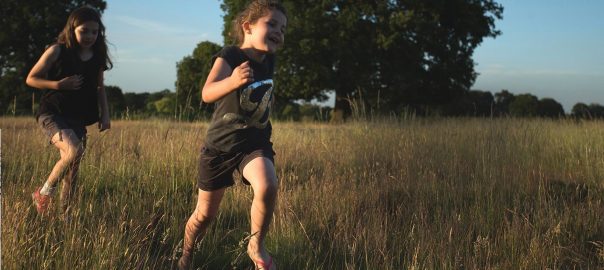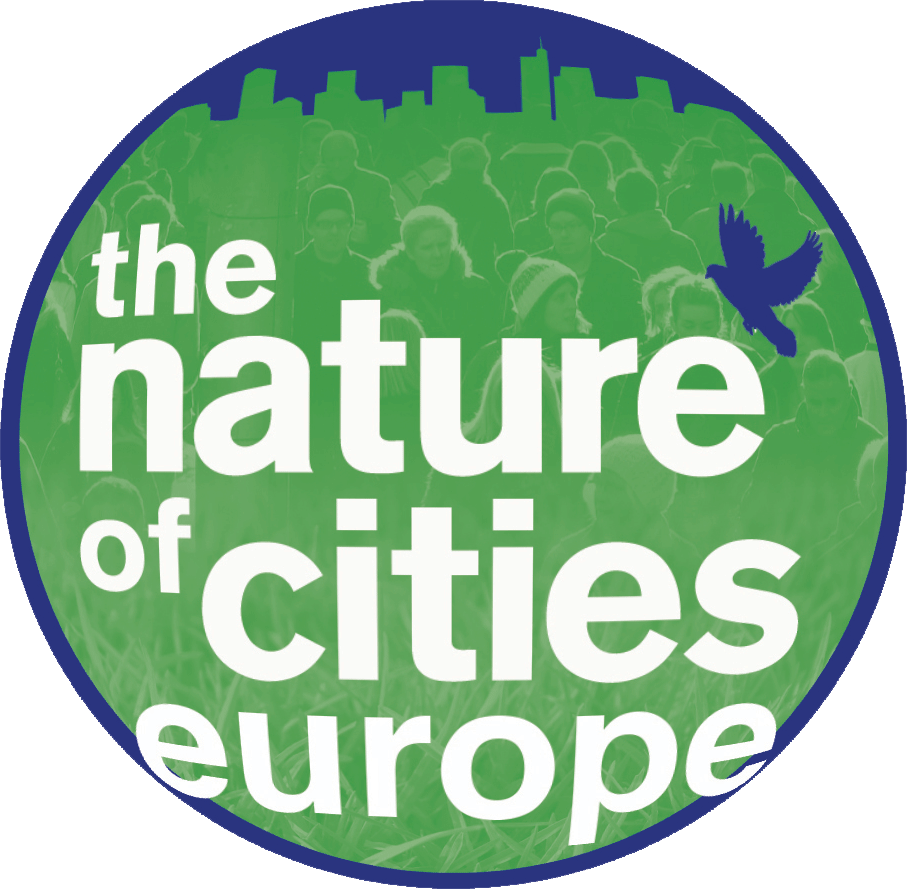The Nature of Cities—Europe is an independent partner organizations to TNOC—Global. TNOC-Europe is a Registered Charity in Ireland, formed in 2018 to work on projects specifically involving European cities.
The Nature of Cities—Europe co-published at our partner site: www.thenatureofcities.com.
Stay in touch: write us at: [email protected]
What We Do
 We support the creation and use of knowledge-based solutions that make cities better for both people and nature.
We support the creation and use of knowledge-based solutions that make cities better for both people and nature.
The mission of The Nature of Cities-Europe is to curate joined conversations about urbanism across ways of knowing and modes of action. We create transdisciplinary, publicly available, and widely disseminated programs, events, knowledge, and engagements for green city making. We strive for cities worldwide that are resilient, sustainable, livable, and just. We work to achieve this in several ways:
- Publish open access, web-based articles, essays, and discussion forums by writers, thinkers, creators, and activists, focusing on ideas that are transdisciplinary and at the frontiers where science, design, planning, and art meet. We crave creativity in all forms and from all sources.
- Create public symposia and transdisciplinary engagements designed to increase knowledge and citizen engagement in creative cultures, urban nature, planning, design, and placemaking. Recent events include TNOC Summit in Paris (June 2019) and the Food-Water-Energy public event in Sao José dos Campos, Brazil (September 2019), and a series of virtual Festivals. The next in-person TNOC event with be in Europe in 2024.
- Design outreach, educational, and research materials for urban communities, city managers, practitioners, and researchers on the subjects of urban ecosystems, green infrastructure, nature-based solutions, and biodiversity.
- Create programs that engage arts, culture, science, and action together in joined spaces. NBS (nature-based solutions) Comics is a project of TNOC-Europe, in collaboration with NetworkNature. As part of this project, we offer artist-led workshops on visual storytelling.
- Conduct place- and knowledge-based projects with partner organizations in Europe and on a global scale, integrating ways of knowing and modes of action. For example, TNOC-Europe is a partner in the NetworkNaturePlus consortium, funded by the European Commission; a a partner in the recently complete Belmont Forum project, IFWEN.
- Create specific language-based projects, such as TNOC Francophone.
- Stimulate, engage, and provoke citizens, artists, planners, designers, and scientists to explore new ways to envision better cities—cities that are sustainable, resilient, livable, and just.
- Conducting place-based projects with partner organizations in various countries.
Our Directors
TNOC—Europe is a Registered Charity in Ireland (No. 621611).
TNOC-Europe Directors (2018-2023):
- Marcus Collier, Dublin
- David Maddox, New York
- Siobhán McQuaid, Dublin
Members (governing board, 2023):
- Pippin Anderson, Cape Town
- Marcus Collier, Dublin
- Martha Fajardo, Bogotá
- David Haley, Whaley Island (Scotland)
- Mike Houck, Portland
- Robin Lasser, San Jose (California)
- Gilles Lecuir, Paris
- David Maddox, New York
- Siobhán McQuaid, Dublin
- Mary W. Rowe, Toronto
- Chantal van Ham, Brussels
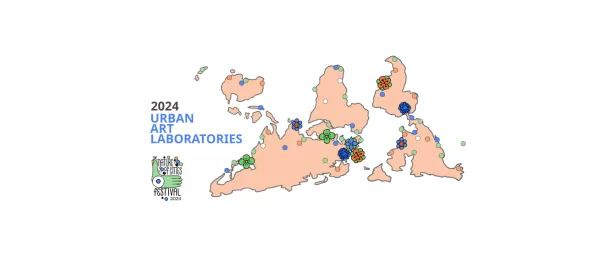 The Urban Art Laboratories: During The Nature of Cities Festival 2024, a series of conjunct artistic and ecological actions took place in various parts of the world. What happened?
The Urban Art Laboratories: During The Nature of Cities Festival 2024, a series of conjunct artistic and ecological actions took place in various parts of the world. What happened?
Carmen Bouyer, Paris Diana Wiesner, Bogota Baixo Ribeiro, São Paulo Patrick M. Lydon, Daejeon Suhee Kang, Tongyeong Matthew Jensen, New York Erica Mizutani, São Paulo Sophie Krier, Luxemburg Shaah Kamuruko, Den Haag Anna Andrejew, The Hague Floris Janssens, The Hague Elodie Seguin, Paris Juliette Ravel, Goa Jessica Taggart Rose, Margate Dilek Himam, Gömeç Leonardo Centeno, Bogotá
0 Comment(s)
Join our Conversation
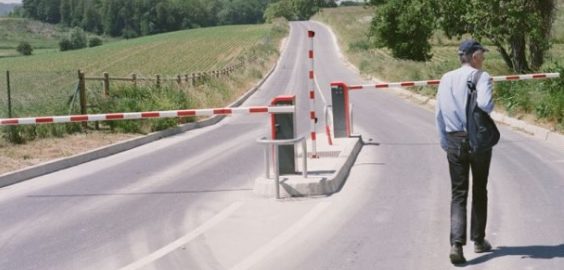 The Art of the Detour: An Invitation to Poetic and Political Drift
The Art of the Detour: An Invitation to Poetic and Political Drift
Victor Coutard, Paris
In a world where every route is optimized, where algorithms predict our movements, and speed becomes an unassailable norm, the detour stands out as an act of resistance. It is the assertion of reclaimed freedom, a refusal of systematic efficiency that reduces our experience of the world to a digital...
1 Comment(s)Join our Conversation
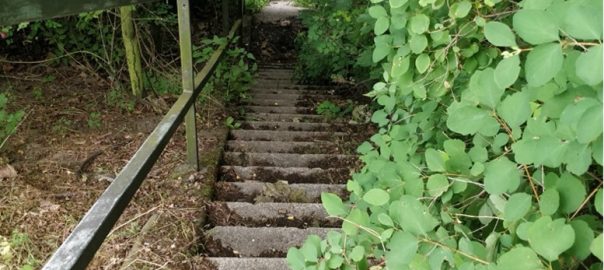 What does the more-than-human city look like?
What does the more-than-human city look like?
Ferne Edwards, Barcelona Lucia Alexandra Popartan, Girona Ida Nilstad Pettersen, Trondheim Lily Fillwalk, New Brunswick Audax M. Gawler, Victoria İdil Gaziulusoy, Espoo Giulia Gualtieri, Almere Gloria Lauterbach, Espoo Saba Mirzahosseini, Turin Clare Qualmann, London Trophica Lab, Bogotá D.C. Aylin Yildirim Tschoepe, Basel
0 Comment(s)
Join our Conversation
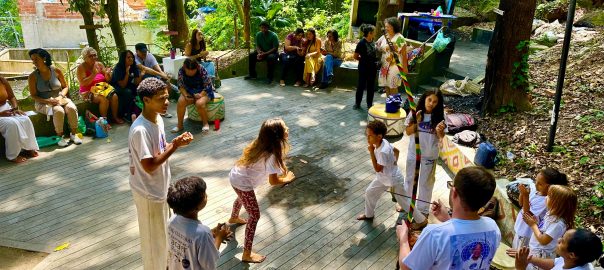 Rocinha’s Bio-Cultural-Spatial Uniqueness: Where Community and Forest Converge
Rocinha’s Bio-Cultural-Spatial Uniqueness: Where Community and Forest Converge
May East, Edinburgh
Places, much like nature, are in a constant state of change. This is especially true for Rocinha, Brazil’s most populous favela, home to approximately 200,000 people. Perched on steep hillsides in Rio de Janeiro’s Southern Zone, Rocinha is a vibrant, multi-layered community where life unfolds within a dense network of...
0 Comment(s)Join our Conversation
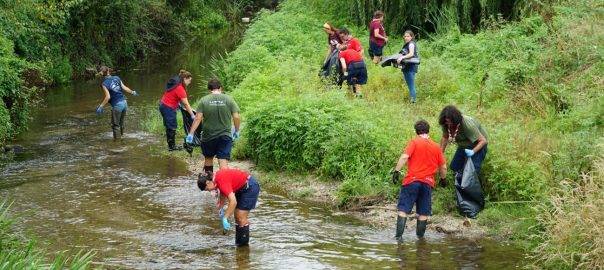 The Plastic Crisis: An Urgent Challenge For Our Rivers and Oceans
The Plastic Crisis: An Urgent Challenge For Our Rivers and Oceans
Ana Pinheira, Guimarães Carolina Rodrigues, Guimarães
The United Nations Environment Programme (UNEP) estimates that 19 to 23 million tonnes of plastic waste end up in lakes, rivers, and seas annually[1]. This staggering number highlights the urgent need to tackle plastic pollution. The growing production of waste, inadequate disposal methods, and the slow degradation of plastics significantly...
0 Comment(s)Join our Conversation
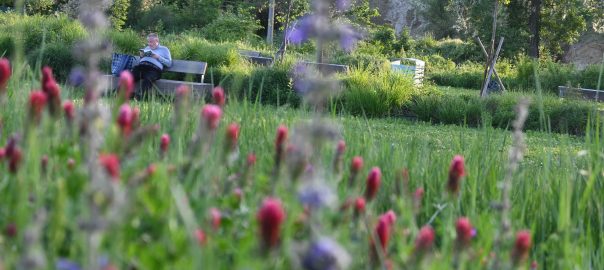 The EU Nature Restoration Law is here. Do we have what it takes to make it work?
The EU Nature Restoration Law is here. Do we have what it takes to make it work?
Bettina Wilk, Bilbao John Warren Tamor, Bonn Evelyn Underwood, Brussels Laure-Lou Tremblay, Brussels Ferenc Albert Szigeti, Budapest Adeline Rochet, Brussels Martin Grisel, The Hague Federica Risi, The Hague Silvia Quarta, Murcia Christos Papachristou, Dublin Anne-Sophie Mulier, Brussels Shane McGuinness, Dublin Goksen Sahin, Brussels Philipp LaHaela-Walter, Freiburg Gitty Korsuize, Utrecht Valerie Kapos, Cambridge Chris McOwen, Cambridge John Tayleur, Cambridge Opi Outhwaite, Cambridge Niki Frantzeskaki, Utrecht João Dinis, Cascais City Marta Delas, Madrid Jordi Cortina-Segarra, Alicante Humberto Delgado Rosa, Brussels Roby Biwer, Luxembourg Marta Mansanet Cánovas, Luxembourg Heather Brooks, Brussels Carlo Calfapietra, Porano Chiara Baldacchini, Viterbo Bogdan Micu, Bucharest Liviu Bailesteanu, Bucharest
1 Comment(s)
Join our Conversation
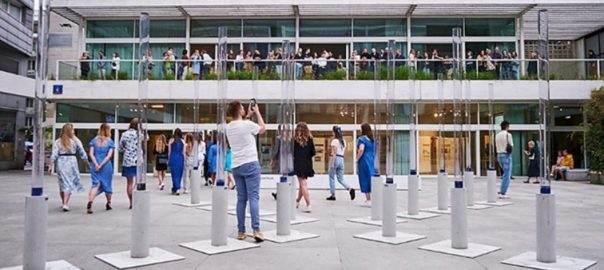 Highlights from The Nature of Cities 2024
Highlights from The Nature of Cities 2024
David Maddox, New York
Cities are, at their best, collaborative masterpieces, aren’t they? They emerge from the interplay of diverse professions, ways of knowing, modes of action, governments, and, most importantly, the people who call them home. They are cultural, ecological, human, and non-human. Together (ideally), these forces shape cities based on shared—and sometimes...
0 Comment(s)Join our Conversation
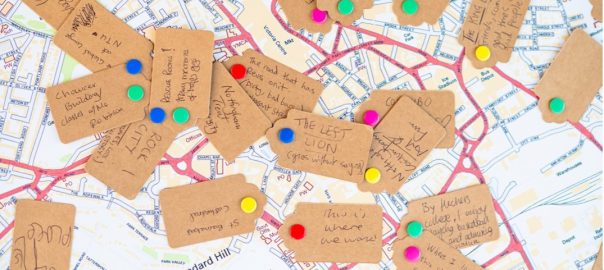 People Love Nature, Even When It Hurts
People Love Nature, Even When It Hurts
Katie Keddie, Nottingham Chris Ives, Nottingham
Love, a complex and profoundly influential emotion, has been widely explored in a variety of academic fields including sociology, psychology, anthropology, as well as human and physical geography. In geography, love is explored in several ways, including love of place and of nature (tophilia and biophilia) (see Tuan, 1974 and...
0 Comment(s)Join our Conversation
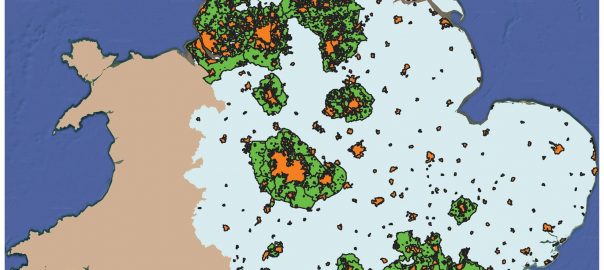 Re-envisioning the Green Belt for Biodiversity, Recreational Access, and Climate Resilience
Re-envisioning the Green Belt for Biodiversity, Recreational Access, and Climate Resilience
Lincoln Garland, Bath
The UK’s new Labour-led government has pledged to tackle the country’s long-standing housing crisis head-on, with a bold promise to deliver 1.5 million new homes in the next five years. This plan comes in response to the mounting pressures of soaring demand, limited housing supply, and ever-increasing prices that have...
2 Comment(s)Join our Conversation
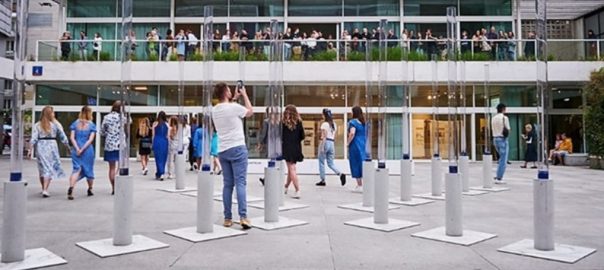 What can Nature-based Solutions and sustainability professionals learn from cultural institutions such as museums and botanical gardens? How can the synergies benefit both NbS and cultural institutions?
What can Nature-based Solutions and sustainability professionals learn from cultural institutions such as museums and botanical gardens? How can the synergies benefit both NbS and cultural institutions?
David Maddox, New York Carmen Bouyer, Paris Edith de Guzman, Los Angeles Lisa Fitzsimons, Dublin Todd Forest, New York Paola Lepori, Brussels Eleanor Ratcliffe, Surrey Susannah Drake, New York City Daniela Rizzi, Freiburg Meriem Bouamrane, Paris Thijs Biersteker, Paris Jan Chwedczuk, Warsaw Xavier Cortada, Miami Anna Cudny, Warsaw Jolly de Guzman, Los Angeles Artur Jerzy Filip, Warsaw Ewa Iwaszuk, Berlin Terry Hartig, Uppsala Magda Maciąg, Warsaw Baixo Ribeiro, São Paulo David Skelly, New Haven Ulrike Sturm, Berlin Thalia Tsaknia, Pallini Bettina Wilk, Bilbao Birgitta Gatersleben, Surrey
0 Comment(s)
Join our Conversation
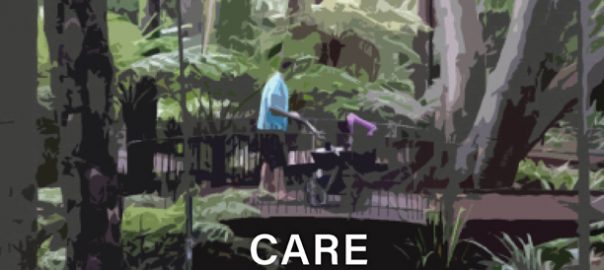 CARE: The Introduction to SPROUT Eco-Urban Poetry Journal Issue 4
CARE: The Introduction to SPROUT Eco-Urban Poetry Journal Issue 4
Kirby Manià, Vancouver Dimitra Xidous, Dublin
Each time our editorial team gathers to publish an issue of SPROUT, we reflect on the role of poetry to comment on the current state of the eco-urban. When we read through the submissions, we feel that our original vision and mandate for the journal is confirmed by the special...
0 Comment(s)Join our Conversation
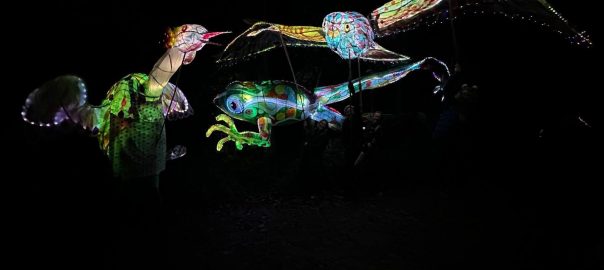 Whimsy. Is there a role for laughter, subversive curve balls, ironic romance and “oh wow that’s cool” moments in the mainstreaming of knowledge and action in sustainability, climate change, and biodiversity?
Whimsy. Is there a role for laughter, subversive curve balls, ironic romance and “oh wow that’s cool” moments in the mainstreaming of knowledge and action in sustainability, climate change, and biodiversity?
Molly Anderson, Cape Town Pippin Anderson, Cape Town Emmalee Barnett, Spokane Nic Bennett, Austin James Bonner, Glasgow Tam Dean Burn, Glasgow Bill McGuire, Glasgow Ian Douglas, Manchester Paul Downton, Melbourne Lisa Fitzsimons, Dublin Chris Fremantle, Ayrshire, Scotland Elizabeth Frickey, New York City Tony Kendle, Saint Austell Gareth Kennedy, Dublin David Maddox, New York Rob McDonald, Basel Gareth Moore-Jones, Ohope Beach Richard Scott, Liverpool Hita Unnikrishnan, Warwick Ania Upstill, New York Wendy Wischer, Connecticut Claudia Misteli, Barcelona Alastair McIntosh, Glasgow
1 Comment(s)
Join our Conversation
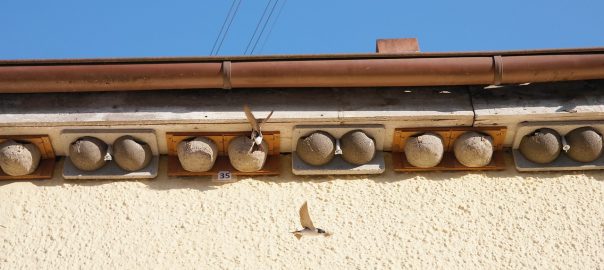 Soft Animal
Soft Animal
Andreas Weber, Berlin
Did you know that baby housemartins speak in their sleep? I did not ― until some nights ago in early July. I was walking down the deserted main road outside Varese Ligure, an old-fashioned Italian mountain town. It was the evening of the day I had arrived. Following the dimly...
0 Comment(s)Join our Conversation
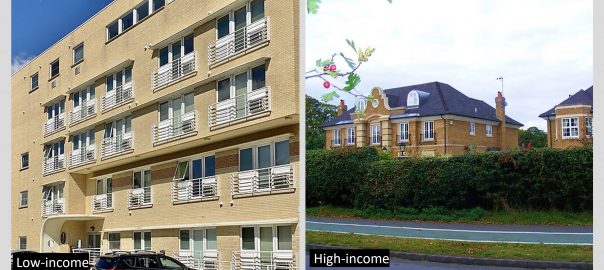 The Two Planets of Urban Heat
The Two Planets of Urban Heat
Rob McDonald, Basel
India is roasting, with some cities like Delhi pushing to almost 50 degrees C (122 degrees F). In India’s recent election, at least 33 poll workers died while doing mostly compulsory work to administer the election in sweltering polling places. All told, there have probably been thousands or tens of...
0 Comment(s)Join our Conversation
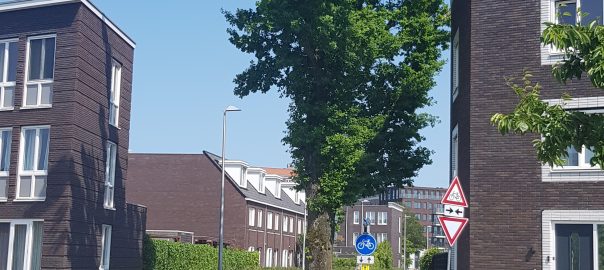 Fight Fire With Fire … and Standards With Standards ― Building blocks for nature
Fight Fire With Fire … and Standards With Standards ― Building blocks for nature
Gitty Korsuize, Utrecht
A biking lane should measure 4.20 meters at minimum in the city of Utrecht. Sidewalks need to be 1.20 meters wide to make sure pedestrians and a person in a wheelchair can pass each other. For each house we build we add 0.78 parking spaces in the public domain. In...
0 Comment(s)Join our Conversation
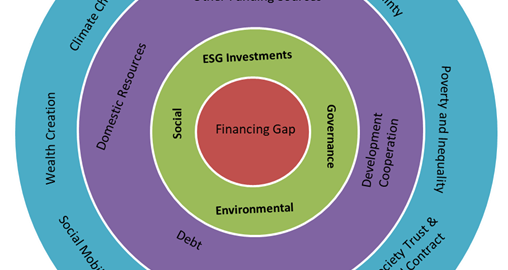 Environmental, Social, and Governance Investing for Inclusive Cities
Environmental, Social, and Governance Investing for Inclusive Cities
Fadi Hamdan, Athens
Background to the Sustainable Financing Gap Globally, challenges in making our cities resilient are multi-dimensional and are on the rise. According to the 2023 Sustainable Development Goals Report, over half of the global population currently resides in urban areas, a rate projected to reach 70% by 2050. Approximately 1.1 billion...
1 Comment(s)Join our Conversation
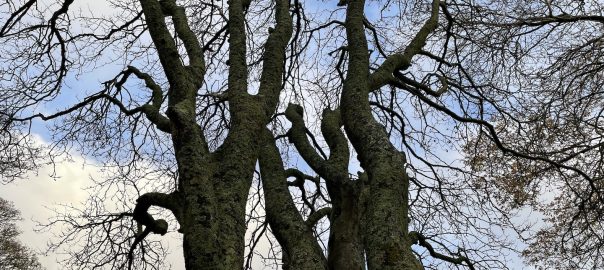 Talk in the Park: An inquiry into culture and creativity
Talk in the Park: An inquiry into culture and creativity
David Haley, Walney Island
Rightly, people recently have been valuing Indigenous cultures and writing about them. Not wishing to mimic or appropriate, but as an attempt to learn from such ways of thinking, this essay uses a form of circular storying[1] that becomes nonlinear. I stumbled upon ‘storying’ (the making and telling of stories)...
0 Comment(s)Join our Conversation
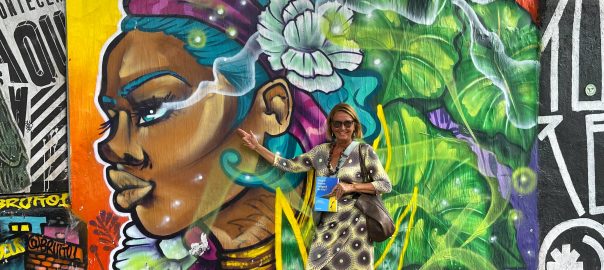 What if Women Designed the City? A Voyage from Brutalism to Biophilia
What if Women Designed the City? A Voyage from Brutalism to Biophilia
May East, Edinburgh
Nestled within the lively and restless Leith neighbourhood stands the iconic curved structure of Cables Wynd House, immortalised in Irvine Welsh’s novel “Trainspotting” and referred to by locals as the Banana Flats. Constructed in the 1960s, Cables Wynd is considered one of Britain’s greatest post-war buildings designed in the Brutalist...
1 Comment(s)Join our Conversation
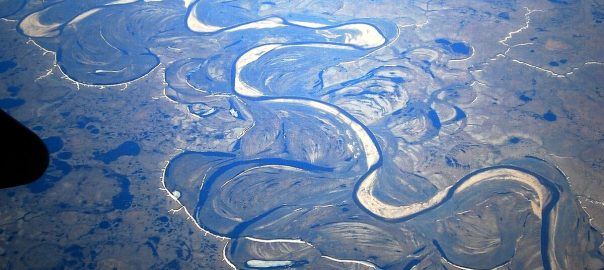 The goal is to mainstream Nature-based Solutions, by widening public acceptance and making it the standard and default practice of urban design. What will it take to get there?
The goal is to mainstream Nature-based Solutions, by widening public acceptance and making it the standard and default practice of urban design. What will it take to get there?
James Bonner, Glasgow Harriet Bulkeley, Durham Tam Dean Burn, Glasgow Stuart Connop, London Bryce Corlett, Norfolk Laura Costadone, Norfolk Olukayode Daramola, Preston McKenna Davis, Berlin Gillian Dick, Glasgow Loan Diep, New York City Niki Frantzeskaki, Utrecht Zbigniew Grabowski, Hartford Perrine Hamel, Singapore Mariem EL Harrak, Paris Cecilia Herzog, Rio de Janeiro Nadja Kabisch, Hannover Doris Knoblauch, Berlin Frédéric Lemaître, Paris Paola Lepori, Brussels Patrick M. Lydon, Daejeon David Maddox, New York Israa Mahmoud, Milan Timon McPhearson, New York Seema Mundoli, Bangalore Harini Nagendra, Bangalore Caroline Nash, London Neville Owen, Melbourne Mitchell Pavao-Zuckerman, College Park Eleanor Ratcliffe, Surrey Kassia Rudd, Freiburg Valentine Seymour, Surrey David Simon, London Takemi Sugiyama, Melbourne Morro Touray, Surrey Ibrahim Wallee, Accra
0 Comment(s)
Join our Conversation
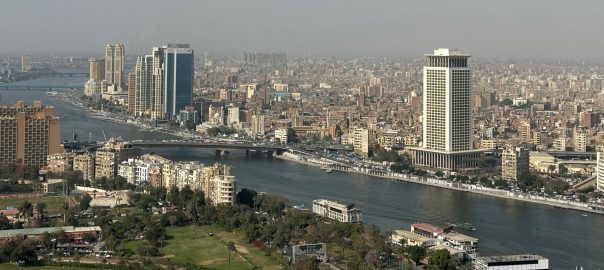 Solving the Global Water Crisis
Solving the Global Water Crisis
Chantal van Ham, Brussels
In 2010, the UN General Assembly explicitly recognized the human right to water and sanitation. Equal access to safe and clean water, however, requires a major change in how decisions over use and rights to water are made and needs appropriate legal frameworks to curb over-extraction and unsustainable behavior. Qanats...
0 Comment(s)Join our Conversation
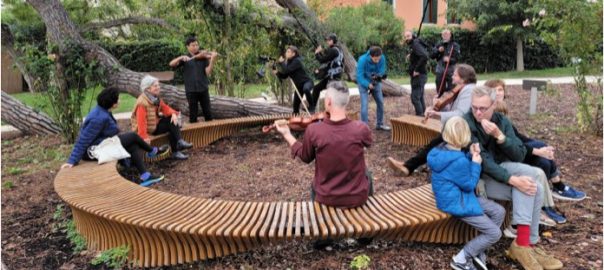 Plaidoyer for Transdisciplinarity, Local Agency, and Creative Co-Creation in Horizon Europe and the New European Bauhaus
Plaidoyer for Transdisciplinarity, Local Agency, and Creative Co-Creation in Horizon Europe and the New European Bauhaus
Mariana Dias Baptista, Sheffield Nathalie Blanc, Paris Carmen Bouyer, Paris Paul Currie, Cape Town Małgorzata Ćwikła, Freiburg Marta Delas, Madrid Marthe Derkzen, Arnhem/Nijmegen Tom Grey, Dublin Gitty Korsuize, Utrecht Patrick M. Lydon, Daejeon David Maddox, New York Geovana Mercado, Malmö Pascal Moret, Paris Peter Morgan-Wells, Devon Steward Pickett, Poughkeepsie Daniela Rizzi, Freiburg Mary Rowe, Toronto Sean Southey, New York Chantal van Ham, Brussels Tom Wild, Sheffield Dimitra Xidous, Dublin
0 Comment(s)
Join our Conversation
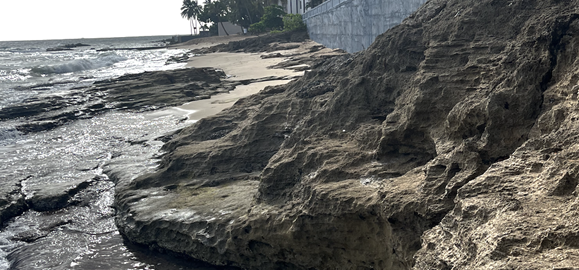 Steady Friction Between Nature-based and Engineered Solutions for Urban Coastal Flood Adaptation
Steady Friction Between Nature-based and Engineered Solutions for Urban Coastal Flood Adaptation
Zbigniew Grabowski, Hartford Laura Costadone, Norfolk Erich Wolff, Singapore Mariana Hernández, Sacramento Yuliya Dzyuban, Singapore Marthe Derkzen, Arnhem/Nijmegen Loan Diep, New York City
A view from the joint meeting of the San Juan ULTRA and the NATURA Early Career Network 1. Nature-based Solutions in the Context of San Juan, Puerto Rico On a sunny day in San Juan, Puerto Rico, life is good. Along the beaches, crabs scuttle in the riprap next to...
0 Comment(s)Join our Conversation
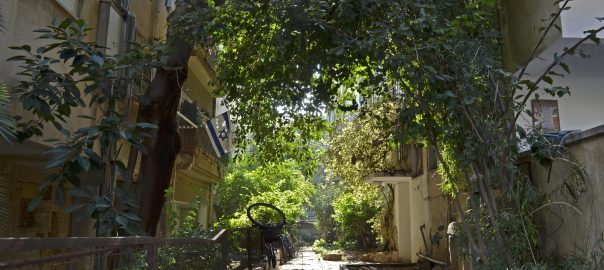 Tel Aviv Was Tartan Before It Was White: An Analysis of Patrick Geddes’s 1925 Town Plan
Tel Aviv Was Tartan Before It Was White: An Analysis of Patrick Geddes’s 1925 Town Plan
Joseph Rabie, Montreuil
The White City. Thus, Tel Aviv refers to itself, taking its cue from the many buildings built in the International Style in the 1930s by the avant-garde architects who had studied in Europe or come to Palestine to escape Nazi Germany. Some had studied at the Bauhaus, and the term...
2 Comment(s)Join our Conversation
 From Awareness to Action: Citizen Empowerment in Invasive Species Management
From Awareness to Action: Citizen Empowerment in Invasive Species Management
Ana Pinheira, Guimarães
Invasive species cause one of the greatest threats to biodiversity and ecosystems worldwide. Many species are introduced into environments different from their place of origin and can quickly proliferate, causing significant harm to the ecosystems, economy, and public health. Invasive species have the capacity to establish, reproduce, and spread uncontrollably,...
0 Comment(s)Join our Conversation
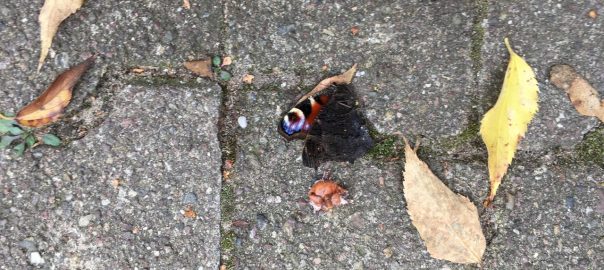 Sistine Blue
Sistine Blue
Andreas Weber, Berlin
[*]I’m on my way home from an errand one early June evening. As I walk, I look down on the granite-slabbed sidewalk. At its margin, a row of slender catsears raise their yellow heads towards the fading sky. They look a bit like skinny dandelions (who they are related to),...
0 Comment(s)Join our Conversation
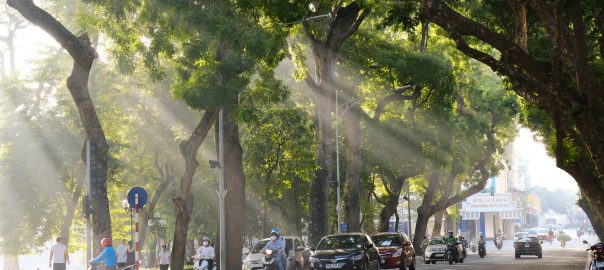 Green Urban Planning ― Along With the Idea of Objective Truth ― Is Losing the PR Fight
Green Urban Planning ― Along With the Idea of Objective Truth ― Is Losing the PR Fight
Rob McDonald, Basel
A core tenant of the environmental movement is under attack. Planning, and particularly the rational planning model, is seen as something suspect, an enemy of the people. The whole idea of rational, technocratic planning to achieve social goals is being rejected by some, as an elitist pursuit that must be...
0 Comment(s)Join our Conversation
 Shade: The Introduction to SPROUT Eco-Poetry Journal Issue 3
Shade: The Introduction to SPROUT Eco-Poetry Journal Issue 3
Kirby Manià, Vancouver Dimitra Xidous, Dublin
For SPROUT’s third issue, the editors were inspired by The Nature of Cities’ (TNOC) recent art exhibition, Shade, and invited contributors to draw on the exhibition’s virtual installation as a conceptual springboard to contemplate the theme of shade through a poetic lens. We asked poets to reflect on the role...
0 Comment(s)Join our Conversation
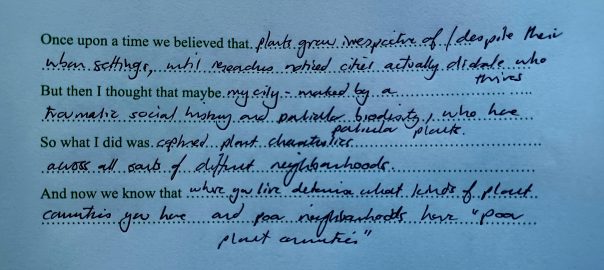 Story. Telling. If you had a project from science or practice and wanted to make it a better story — one that could reach into new audiences — what would you do?
Story. Telling. If you had a project from science or practice and wanted to make it a better story — one that could reach into new audiences — what would you do?
Pippin Anderson, Cape Town Lindsay Campbell, New York Marcus Collier, Dublin Paul Currie, Cape Town Bram Gunther, New York Madhusudan Katti, Raleigh Claudia Misteli, Barcelona Steward Pickett, Poughkeepsie Ania Upstill, New York Stéphane Verlet-Bottéro, Paris Ibrahim Wallee, Accra Skylar R. Bayer, Anchorage Priya Shukla, Davis Bethann Garramon Merkle, Laramie Evelyn Valdez-Ward, Kingston Nic Bennett, Austin Tim Lüschen, Berlin Daniela Rizzi, Freiburg Alice Reil, Munich Sarah Ema Friedland, New York City Paul Mahony, Manchester Tommy Cheemou Yang, New York City David Bunn, Vancouver
0 Comment(s)
Join our Conversation
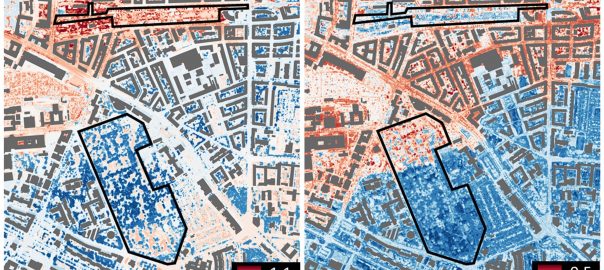 Urban Parks During Heat and Drought Conditions: A Case Study in Leipzig, Germany during the 2018 and 2019 Heat Periods
Urban Parks During Heat and Drought Conditions: A Case Study in Leipzig, Germany during the 2018 and 2019 Heat Periods
Roland Krämer, Leipzig Nadja Kabisch, Hannover
Assessing the cooling function of urban parks under heat and drought conditions Thanks to the cooling function of the vegetation, urban parks offer cool, pleasant places in cities during hot summer days. Urban parks are also places for recreation and social interaction. In parks, people go jogging or cycling, meet...
0 Comment(s)Join our Conversation
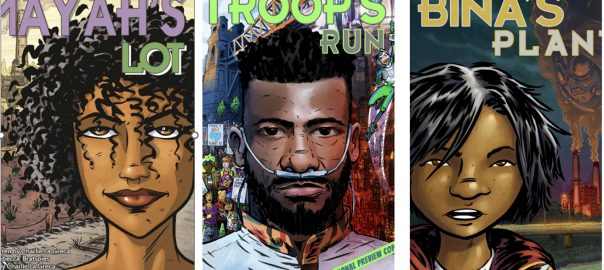 Visual storytelling: Can comics help us advance solutions to our social and environmental challenges? Yes
Visual storytelling: Can comics help us advance solutions to our social and environmental challenges? Yes
José Alaniz, Longbranch Steven Barnes, Los Angeles Emmalee Barnett, Spokane Rebecca Bratspies, New York Deianira D'Antoni, Catania Cecilia de Sanctis, Rome Marta Delas, Madrid Darren Fisher, Mödling Patrick M. Lydon, Daejeon Ivan Gajos, Manchester David Haley, Walney Island John Hyatt, Liverpool Charles Johnson, Seattle Eva Kunzová, Bratislava Charlie LaGreca Velasco, Milano Lucie Lederhendler, Brandon David Maddox, New York Joe Magee, Stroud Heeyoung Park, Strasbourg Mitchell Pavao-Zuckerman, College Park Mike Rosen, Portland Mark Russell, Portland Lucía Sánchez, Madrid Clifford Thompson, Brooklyn Chris Uttley, Stroud Shannon Wheeler, Portland Midori Yajima, Rome
0 Comment(s)
Join our Conversation
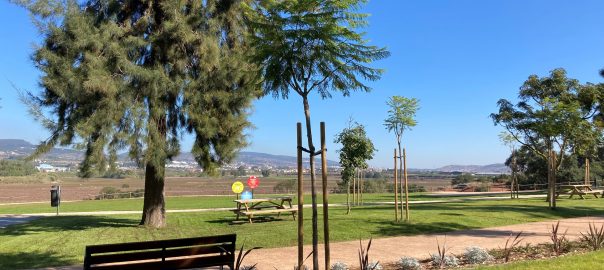 The Elephant and the Ant
The Elephant and the Ant
María Aragão,
As urbanization intensifies around the world, and the devastating effects of global warming are increasingly evident, it is vital to promote urban ecosystems as a tool to achieve ecological balance within the city. Urban ecosystems are the base to guarantee healthy and sustainable places to live, work and visit. Urban...
0 Comment(s)Join our Conversation
 Paying Attention to Make Art: Twenty-nine Reflections on the Harrisons
Paying Attention to Make Art: Twenty-nine Reflections on the Harrisons
Chris Fremantle, Ayrshire, Scotland Anne Douglas, Aberdeen
The Harrisons (Helen Mayer Harrison (1927-2018) and Newton Harrison (1932-2022)) are widely acknowledged as pioneers in bringing together art and ecology into a new form of practice. They worked for over fifty years with biologists, ecologists, architects, urban planners, and other artists to initiate collaborative dialogues. The works they made...
0 Comment(s)Join our Conversation
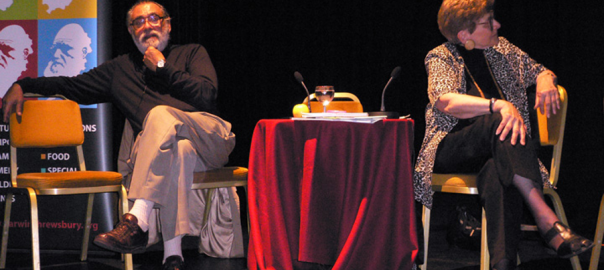 Paying Attention to Make Art: Twenty-nine voices on the legacy of Newton and Helen Mayer Harrison
Paying Attention to Make Art: Twenty-nine voices on the legacy of Newton and Helen Mayer Harrison
Salma Arastu, Berkeley Brandon Ballengée, Arnaudville Ruby Barnett, Santa Cruz Barbara Benish, Santa Cruz Lewis Biggs, Shanghai Reiko Goto Collins, Glasgow Tim Collins, Glasgow David Haley, Walney Island Janeil Engelstad, Tacoma Les Firbank, Leeds Cathy Fitzgerald, Hollywood forest Chris Fremantle, Ayrshire, Scotland Johan Gielis, Antwerpen Terike Haapoja, New York John Hyatt, Liverpool Petra Kruse, Bonn JoAnn Kuchera-Morin, Santa Barbara Aviva Rahmani, New York Simon Read, London Leslie Ryan, Santa Cruz Jamie Saunders, Leeds Richard Scott, Liverpool Ranil Senanayake, Davis Richard Sharland, Altarnun Beth Stephens, Santa Cruz Ruth Wallen, San Diego Mali Wu, Kaohsiung Yangkura, Kai Reschke, Bonn Anne Douglas, Aberdeen Tatiana Sizonenko, San Diego Helen & Newton Harrison,
2 Comment(s)
Join our Conversation
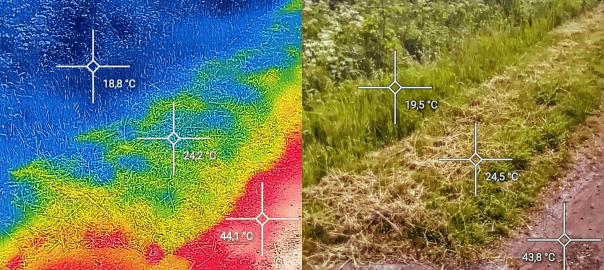 The Tale of Lawns: The Story of Class, Deserts, and Potential
The Tale of Lawns: The Story of Class, Deserts, and Potential
Alicja Wójcik, Brussels
What connects all upper-middle-class houses, public institutions’ buildings, stadiums, and golf fields? A hint: it is aesthetic, it is high-maintenance, and it is a prime example of a single species use. The answer is ― the lawn. The history of lawns goes back to the late Middle Ages, and is,...
0 Comment(s)Join our Conversation
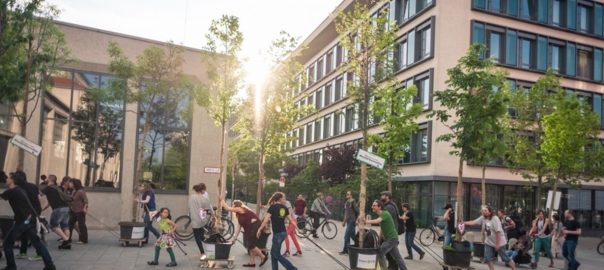 Greening the Streetscape: Tactical Urbanism in Munich
Greening the Streetscape: Tactical Urbanism in Munich
Leoni Vollmann, Brussels
Due to urban densification processes and increasing confrontation with climate change, cities face the need to organize their public space in efficient and sustainable ways that take current needs as well as those of future generations into account. The Green Infrastructure (GI) concept is a widely used concept, introducing various...
0 Comment(s)Join our Conversation
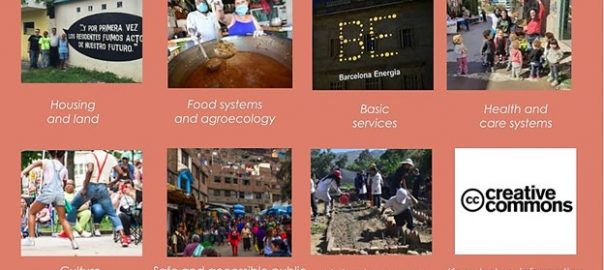 From Monopoly to Commonspoly: How Communities are Changing the Game
From Monopoly to Commonspoly: How Communities are Changing the Game
Lorena Zárate, Ottawa Sophia Torres, Barcelona
Playing games is a serious thing. Animals and humans learn how to relate with each other and with the world through games involving bodies and minds. Games provide a simplified way to understand complex issues, while at the same time broadening our perception of reality through multi-sensorial experiences. Playing...
0 Comment(s)Join our Conversation
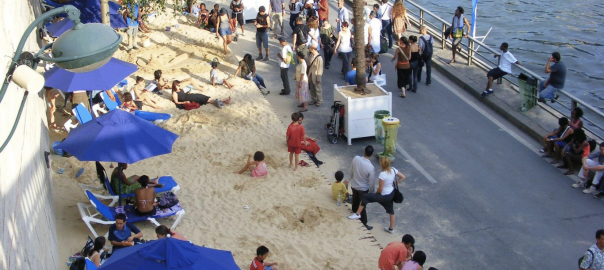 Ça Marche: Walking is Paramount to Human and Liveable Cities
Ça Marche: Walking is Paramount to Human and Liveable Cities
Francois Mancebo, Paris
Sometimes — for a day, a week, or a month — Paris turns into the very kingdom of walkers. That is, during transit strikes, when subway trains and buses stop running. Millions of walkers flood the streets, as the Métro and bus network release the load of crowded bodies it...
1 Comment(s)Join our Conversation
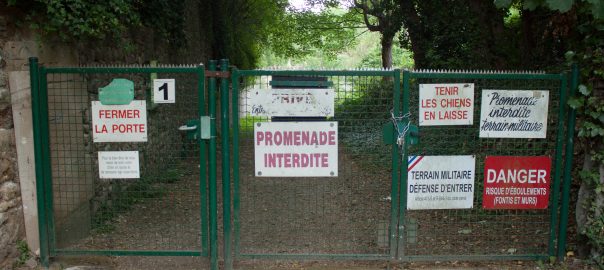 The Nature of Heritage: Rethinking Patrimonial Notions Towards Greener Urban Futures
The Nature of Heritage: Rethinking Patrimonial Notions Towards Greener Urban Futures
Fábio Gouveia, Brussels
Urban green spaces often become entangled in notions of heritage. Multiple factors explain this convergence, from the historical origins of so many major urban green spaces, to the range of values (cultural, spiritual, etc.) that are tied to these places (see Feng & Tan, 2017; Forrest & Konijnendijk, 2005) and...
0 Comment(s)Join our Conversation
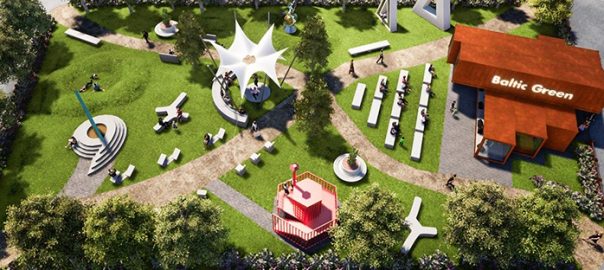 The Baltic Green: A Case Study of Children’s Access to Outdoor Play and Urban Nature in Liverpool City Centre
The Baltic Green: A Case Study of Children’s Access to Outdoor Play and Urban Nature in Liverpool City Centre
Alice Sparks, Brussels
“This is a crucial and much-neglected topic. If children are not designed into our cities, they are designed out. This means that they are deprived of contact with the material world, with nature, with civic life and with their own capacities.” George Monbiot (Arup, 2020, 15) 1 Where do children belong...
0 Comment(s)Join our Conversation
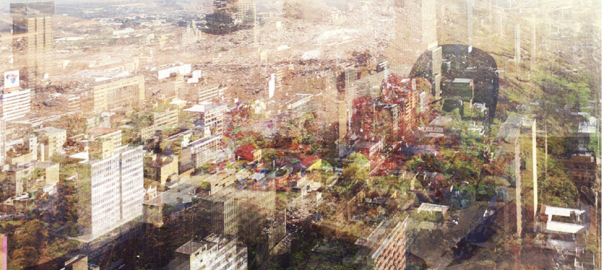 Highlights from The Nature of Cities 2022
Highlights from The Nature of Cities 2022
David Maddox, New York
Cities should be collaborative creations, no? Various professions, ways of knowing, modes of action, governments, and the people that live there, work together (we hope) to build their city from their shared and often contested values. And we need to find greener routes to built cities for them to be...
0 Comment(s)Join our Conversation
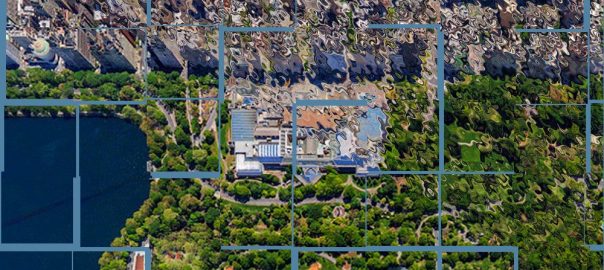 Highlights from Ten Years at The Nature of Cities
Highlights from Ten Years at The Nature of Cities
David Maddox, New York
The Nature of Cities was launched 10 years ago, in June 2012. I believe it has been a success, with over four million reads and around 1,000 contributors. I believe it has been valuable in framing and propelling dialogue in its promotion of collaboration and transdisciplinarity that are essential to...
0 Comment(s)Join our Conversation
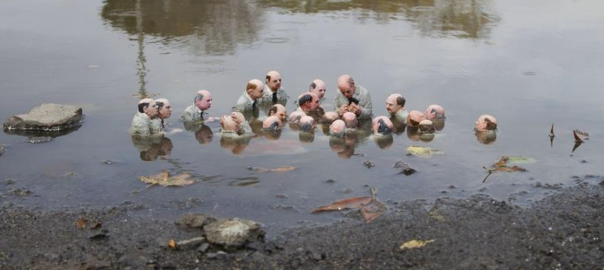 We have had trouble getting people’s attention about climate change. Some climate activists glued themself to a van Gogh painting (and others). Is this helpful?
We have had trouble getting people’s attention about climate change. Some climate activists glued themself to a van Gogh painting (and others). Is this helpful?
Marina Alberti, Seattle Carmen Bouyer, Paris Bibi Calderaro, New York M'Lisa Colbert, Montreal Marcus Collier, Dublin Tim Collins, Glasgow Stuart Connop, London Edith de Guzman, Los Angeles Ben Davis, Brandon Paul Downton, Melbourne Alysha Farrell, Brandon Chisai Fujita, Kyoto Sumetee Gajjar, Cape Town Nancy Grimm, Phoenix David Haley, Walney Island Cecilia Herzog, Rio de Janeiro Cathel Hutchison, Glasgow Pantea Karimi, San Jose Christopher Kennedy, San Francisco Robin Lasser, Oakland Lucie Lederhendler, Brandon Patrick M. Lydon, Daejeon Krystal C. Mack, Baltimore David Maddox, New York Claudia Misteli, Barcelona Nea Pakarinen, Freiburg Mitchell Pavao-Zuckerman, College Park Cristián Pietrapiana, New York Rob Pirani, New York Baixo Ribeiro, São Paulo Martin Rokitzki, Freiburg Andrew Rudd, New York City Tanya Te Miringa Te Rorarangi Ruka, Te Whānganui-a-Tara Peter Schoonmaker, Beirut Ania Upstill, New York Stéphane Verlet-Bottéro, Paris Domenico Vito, Milan
1 Comment(s)
Join our Conversation
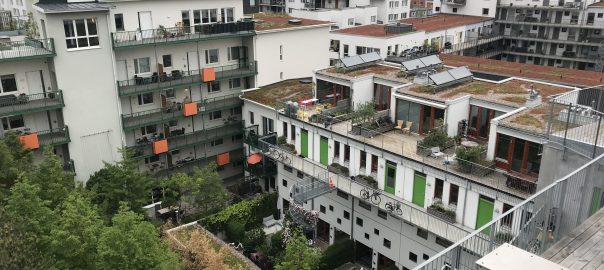 Urban Greening Factor Gains Momentum
Urban Greening Factor Gains Momentum
Gary Grant, London
What is it? City authorities around the world are looking for policies and tools to facilitate urban greening ― in particular, the process of bringing more soil, vegetation, and water into the built environment through the development planning system. In the UK, authorities are looking at the Urban Greening Factor...
2 Comment(s)Join our Conversation
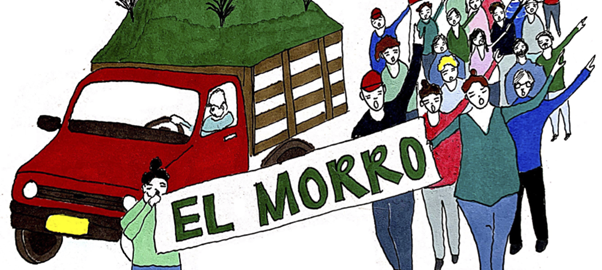 Nature for All: How can we uproot structural inequity in the provision of nature and its benefits to people?
Nature for All: How can we uproot structural inequity in the provision of nature and its benefits to people?
Samarth Das, Mumbai Marthe Derkzen, Arnhem/Nijmegen Joost Gerretschen, Arnhem/Gelderland Rob McDonald, Basel Praneeta Mudaliar, Mississauga Stephanie Pincetl, Los Angeles Rebecca Rutt, Copenhagen Henriette Steiner, Copenhagen Huda Shaka, Dubai Ebony Walden, Richmond María Mejía, Bogotá Steward Pickett, Poughkeepsie Rebecca Bratspies, New York
0 Comment(s)
Join our Conversation
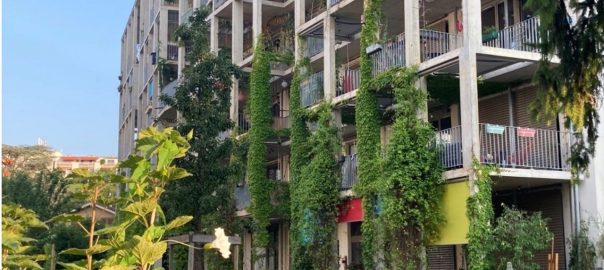 Greening Buildings and the Potential for More Biodiversity and Well-being in Switzerland
Greening Buildings and the Potential for More Biodiversity and Well-being in Switzerland
Nathalie Baumann, Zurich Anke Domschky, Zurich
Project study within the framework of the Swiss Biodiversity Strategy Action Plan Increasing building density is putting pressure on green spaces and thus on the living conditions for flora, fauna, and humans. However, the sixth IPPC report and the COVID-19 pandemic clearly show green spaces that enable recreation and the...
0 Comment(s)Join our Conversation
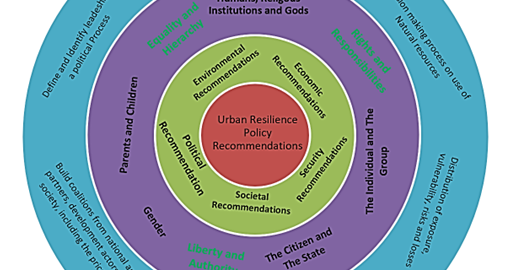 Eco-Urbanism and Urban Resilience Become More Critical Against a Background of a Global War
Eco-Urbanism and Urban Resilience Become More Critical Against a Background of a Global War
Fadi Hamdan, Athens
Russia’s invasion of Ukraine has exacerbated existing problems in global supply chains of two fundamental commodities, namely energy and food, which in turn are leading to soaring inflation. In response, several countries are abandoning their commitments made at the COP26 conference to reduce carbon emissions and instead going back to...
0 Comment(s)Join our Conversation
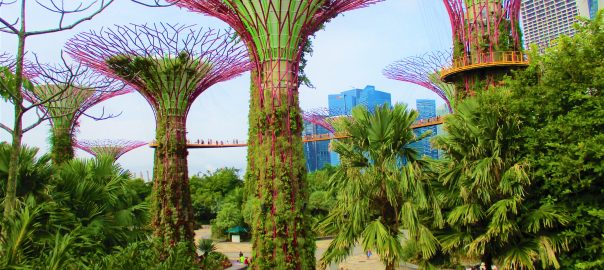 They Didn’t Pave “Paradise”, They Ploughed It
They Didn’t Pave “Paradise”, They Ploughed It
Lincoln Garland, Bath
The Year 2007 marked the arrival of the Urban Millennium when most of the world’s population became urban for the first time in human history (UNDESA, 2009). The proportion is now at least 55% and the global urban population is predicted to increase by 2.5 billion over the next 30...
0 Comment(s)Join our Conversation
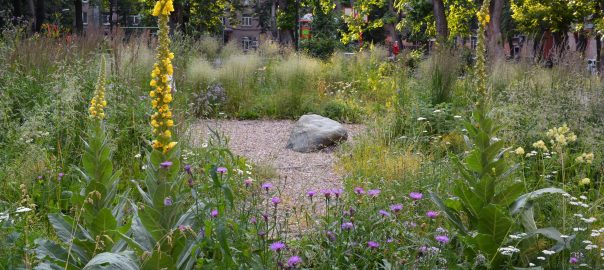 Natives in Exile—The Experience We Had Creating a Flower Garden Featuring Endemic Plant Species in the City
Natives in Exile—The Experience We Had Creating a Flower Garden Featuring Endemic Plant Species in the City
Nadezhda Kiyatkina, Moscow
Last year in spring, we came up with an idea of creating a flower garden that would only feature native plant species. Why is that both difficult and important? And what conclusions can we draw after a full year of watching the flower garden grow and seeing how both community...
2 Comment(s)Join our Conversation
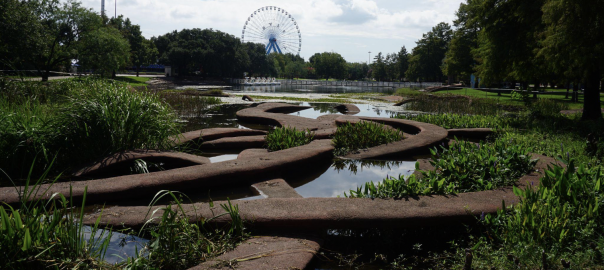 Artists and scientists that co-create regenerative projects in cities?
Artists and scientists that co-create regenerative projects in cities?Yes, please. But how?
Funmi Adeniyi, Cape Town Madhur Anand, Guelph Eduardo Blanco, Senlis Lindsay Campbell, New York Paul Currie, Cape Town Edith de Guzman, Los Angeles David Haley, Walney Island Carmen Bouyer, Paris Chris Fremantle, Ayrshire, Scotland Sarah Hines, Washington Keitaro Ito, Fukutsu City Dave Kendal, Hobart Christopher Kennedy, San Francisco Nikki Lindt, New York Patrick M. Lydon, Daejeon David Maddox, New York Daniel McCormick, San Francisco Bay Area Mary Miss, New York City Mary O’Brien, San Francisco Bay Area Marguerite Perret, Topeka Cristián Pietrapiana, New York Baixo Ribeiro, São Paulo Eric Sanderson, New York Wendy Wischer, Connecticut Ania Upstill, New York
4 Comment(s)
Join our Conversation
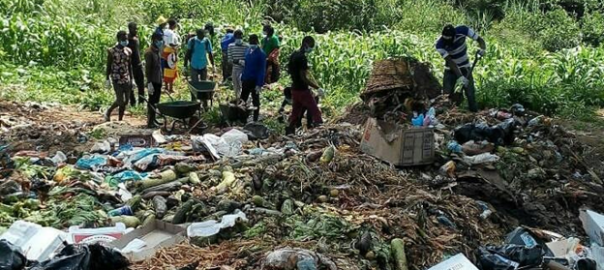 Challenges of Formal-Informal Collaboration in Lilongwe, Malawi
Challenges of Formal-Informal Collaboration in Lilongwe, Malawi
Andrew Hughes, Sheffield Jose Puppim, São Paulo
Informal organizational structures are commonly involved with greening efforts in cities, such as waste recycling and urban agriculture efforts. They are particularly relevant in cities of the Global South, where large percentages of the economy and labour are in the informal sector. Collaboration between the formal and informal sectors poses...
0 Comment(s)Join our Conversation
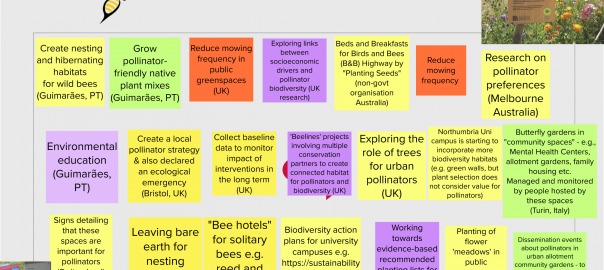 What Are the Cities Doing to Protect Pollinators and the Biodiversity?
What Are the Cities Doing to Protect Pollinators and the Biodiversity?
Ana Pinheira, Guimarães Guilherme Sequeira Braga, Guimarães
Biodiversity faces increasing challenges with the development of cities. Land-use change, intensive agricultural management and pesticide use, invasive alien species, diseases, climate change, and environmental pollution are threatening bees and other pollinators. Helping them to survive means ensuring food security and maintaining healthy ecosystems. Nature conservation and the improvement...
1 Comment(s)Join our Conversation
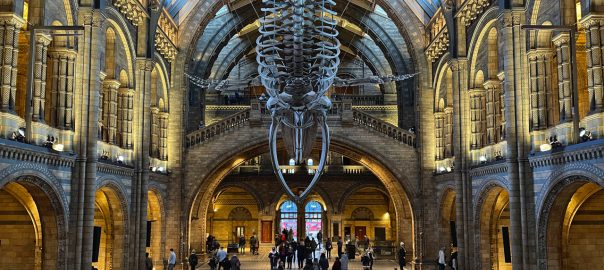 Charles Darwin and the Guy from Upstairs: A visit to the Natural History Museum
Charles Darwin and the Guy from Upstairs: A visit to the Natural History Museum
Joseph Rabie, Montreuil
At the end of November 2021, spending a few days in London, I paid a far too brief visit to the Natural History Museum. I had devoted the daylight hours to a survey of the skyscrapers burgeoning in the City’s business district and got to the museum just as the...
1 Comment(s)Join our Conversation
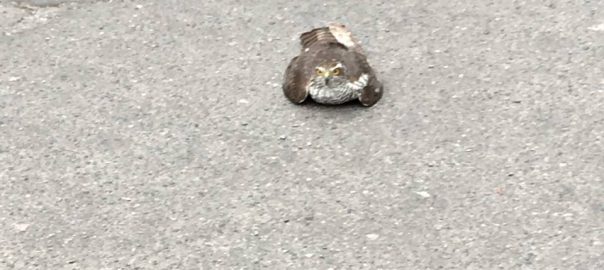 Then Came the Crash
Then Came the Crash
Andreas Weber, Berlin
I wasn’t in a good shape when I broke the sparrowhawk’s wings. A gray sky over Berlin, a cold eastern wind. An early March day that never had properly lighted up and already started to sink back into dawn. No rain, no snow, but this dry and uncomfortable wind. I...
0 Comment(s)Join our Conversation
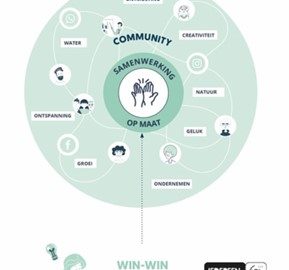 Three Lessons for Co-creating Nature-based Solutions: How Can We Build Natural Networks to Deliver the Deal With Stakeholders?
Three Lessons for Co-creating Nature-based Solutions: How Can We Build Natural Networks to Deliver the Deal With Stakeholders?
Shibeal McCann, Dublin Lodder Marleen, Rotterdam Paula Vandergert, London Kato Allaert, Rotterdam
More than half of the world’s population lives and works in diverse, bustling cities. And perhaps, if you are reading this blog, you have a desire to make these places we call home greener—it can be done with nature-based solutions! Quite often city-makers who want to implement nature-based solutions run...
0 Comment(s)Join our Conversation
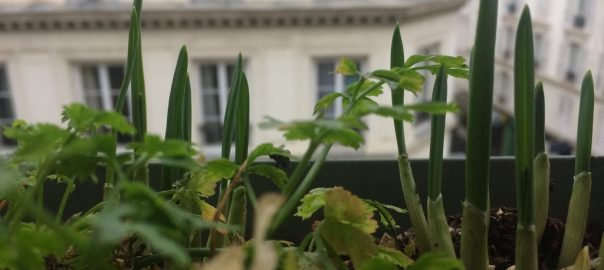 Can Permaculture Save the World?
Can Permaculture Save the World?
Lamiaa Biaz, Paris
Like seeds planted in my brain The first time I ever heard about permaculture was in 2016. I discovered this life philosophy in the French documentaries “The World of Tomorrow” (by Cyril Dion and Mélanie Laurent), and then in “A Quest for Meaning” (by Nathanaël Coste and Marc de la...
1 Comment(s)Join our Conversation
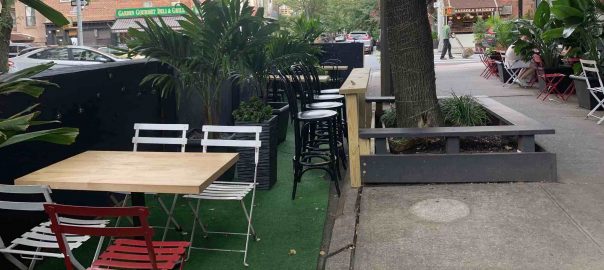 Urban Form and Urban Nature After the COVID-19 Pandemic
Urban Form and Urban Nature After the COVID-19 Pandemic
Rob McDonald, Basel
The COVID-19 pandemic is slowly receding and, while it still is a fatally serious problem in some places, it is possible to imagine it at least receding into an endemic disease. It is perhaps, therefore, a good time to reflect on what COVID-19 has meant and will mean for urban...
0 Comment(s)Join our Conversation
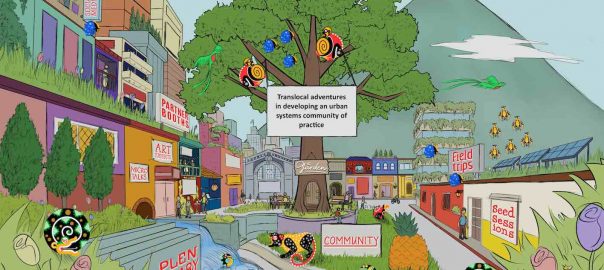 Translocal Adventures, Communities of Practice, and the TNOC Festival
Translocal Adventures, Communities of Practice, and the TNOC Festival
Duncan Crowley, Lisbon Giorgia Silvestri, Rotterdam Sara Silva, Lisbon
UrbanA, ECOLISE, and Communities for Future joined forces to lead an experimental seed session on the first day of the amazing The Nature of Cities Festival (with online discussions on the #TNOCFestival hashtag). About 25 people turned up from different corners of the planet, on Monday 22nd of February 2021,...
1 Comment(s)Join our Conversation
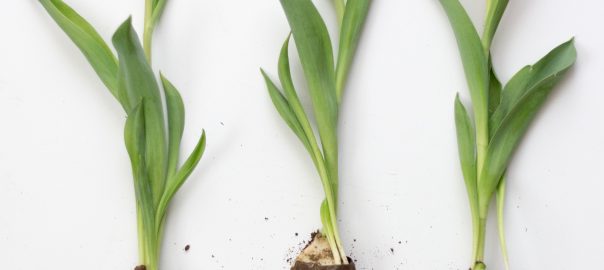 Can we enable better decision-making when it comes to urban plant selection and preparation? Does urban ecology and the horticulture industry need to be better engaged with each other?
Can we enable better decision-making when it comes to urban plant selection and preparation? Does urban ecology and the horticulture industry need to be better engaged with each other?
María Aragão, Timothy Blatch, Cape Town Amy Bowen, Lincoln Luis Camargo, Martha Fajardo, Bogota Andrew Grant, Bath Richard Hallett, Mark Hostetler, Gainesville Nikara Mahadeo, Cape Town Peter Massini, Darby McGrath, Lincoln Matthew Morrow, New York Max Piana, Amherst Ryan Plummer, St. Catharines Mohan Rao, Bangalore Keith Sacre, Cambridgeshire Georgia Silvera Seamans, New York City Ian Shears, Melbourne Audrey Timm, Chilton Ernita van Wyk, Cape Town Mike Wells, Bath
4 Comment(s)
Join our Conversation
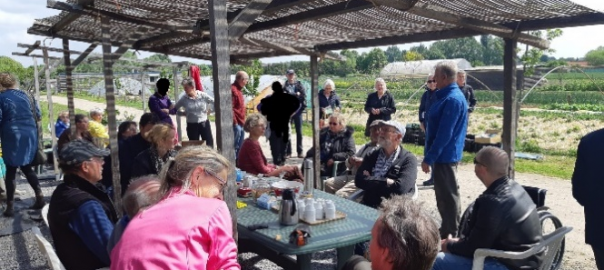 Growing Food Together Is Healthy
Growing Food Together Is Healthy
Marthe Derkzen, Arnhem/Nijmegen Berber Bergstra, Wageningen
Nature and greenery are good for you; we all know that by now. But is it also possible to improve your health by actively seeking out greenery or by getting involved in greenery yourself? That is, can you improve your health simply by taking an action? This is something Wageningen...
0 Comment(s)Join our Conversation
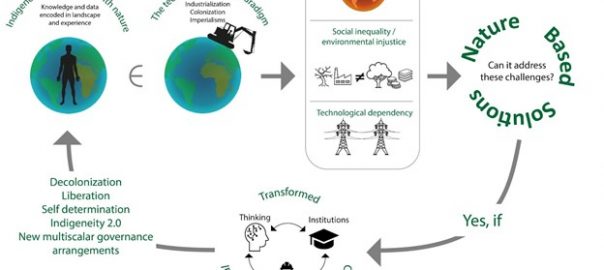 Embracing Diverse Concepts of Nature-based Solutions to Enact Transformational Change: A Perspective From the Early Career Working Group of the NATURA Network
Embracing Diverse Concepts of Nature-based Solutions to Enact Transformational Change: A Perspective From the Early Career Working Group of the NATURA Network
Zbigniew Grabowski, Hartford Ffion Atkins, Cape Town Lelani Mannetti, Atlanta Clair Cooper, Durham Danielle McCarthy, Belfast Robert Hobbins, Atlanta Matt Smit, University Park Yuliya Dzyuban, Singapore Charlyn Green, Atlanta Yeowon Kim, Ottawa Hopeland P, Tamil Nadu Pablo Cantis, New York Luis Ortiz, New York
Governments and communities around the world are embracing Nature-based Solutions (NbS) as a major climate adaptation strategy. Building off of pre-existing approaches to integrating ecological and built systems, NbS attempt to meet a wide array of social goals including improving urban quality of life, supporting transit and recreation, and mitigating...
2 Comment(s)Join our Conversation
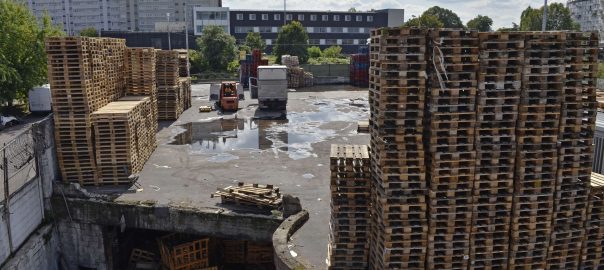 GENESIS 2.0
GENESIS 2.0
Joseph Rabie, Montreuil
In the end, Humankind reverse-engineered the heavens and the world. And while there had been some semblance of order before, Humankind turned it all inside out, night became muddled with day, and day with night. Humankind took the carbon lodged in the darkness of the earth and expelled it into...
1 Comment(s)Join our Conversation
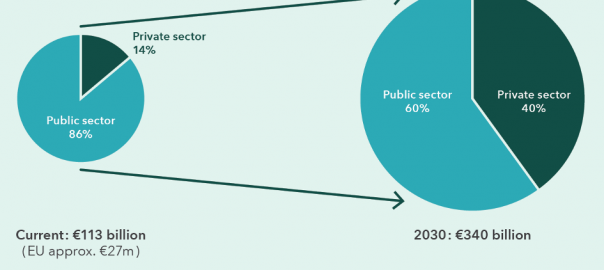 How can nature-based solutions (NBS) provide the basis for a nature-based economy?
How can nature-based solutions (NBS) provide the basis for a nature-based economy?
John Bell, Brussels Guilherme Castagna, São Paulo Emre Eren, London Susanne Formanek, Wien Tiago Fritas, Pico Rhoda Gwayinga, Kampala Simon Gresset, Freiburg Eduardo Guerrero, Bogotá Mamuka Gvilava, Tbilisi Cecilia Herzog, Rio de Janeiro Antonia Lorenzo, Málaga David Maddox, New York Rupesh Madlani, London Taícia H. N. Marques, Lima Ana Mitić-Radulović, Belgrade Hans Müller, Kornwestheim Isaac Mugumbule, Kampala David Simon, London Audrey Timm, Chilton Ellie Tonks, Amsterdam Naomi Tsur, Jerusalem Domenico Vito, Milan
0 Comment(s)
Join our Conversation
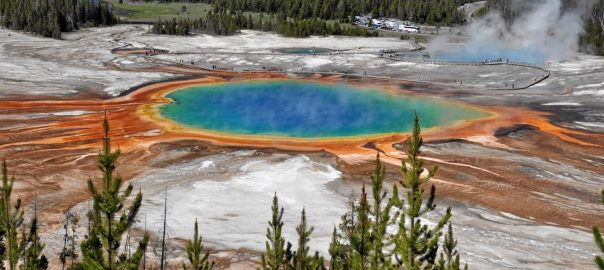 Repenser la protection de la nature dans le contexte des Objectifs du Développement Durable
Repenser la protection de la nature dans le contexte des Objectifs du Développement Durable Rethinking Nature Protection in the Context of the Sustainable Development Goals
Stéphanie Lux, Paris Elisabeth Chouraki, Paris Ingrid Coetzee, Cape Town
Read this in English. Repenser la protection de la nature dans le contexte des Objectifs du Développement Durable en articulant action locale et régionale avec les politiques nationales et internationales Un constat sans appel Sur la base des listes rouges produites par l’UICN, le Chief scientist de l’IUCN, Thomas Brooks...
0 Comment(s)Join our Conversation
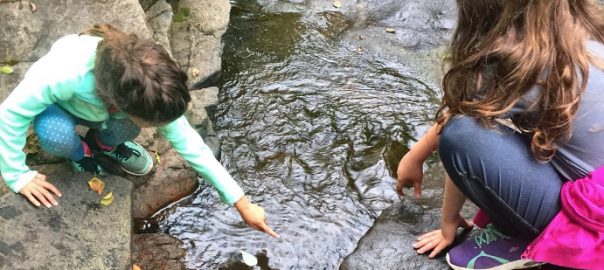 Innovations from the Post-COVID-19 City CoLab Challenge
Innovations from the Post-COVID-19 City CoLab Challenge
Amal al Balushi, Aachen Georgia Bertagna, Parma Thomas Beery, Kristianstad Charlotte Britton, Munich Jenna Cardinale, New York Davide Geneletti, Trento Eva Hoppmanns, Aachen Dana Johnston, Munich Vanessa Kucharski, Aachen Audrey Leung, Munich Mareeya Mitmana, Munich Siân Moxon, London Lea Schwab, Aachen Colm O’Driscoll, Dublin Anneliese Zausner-Mannes, New York
1 Comment(s)
Join our Conversation
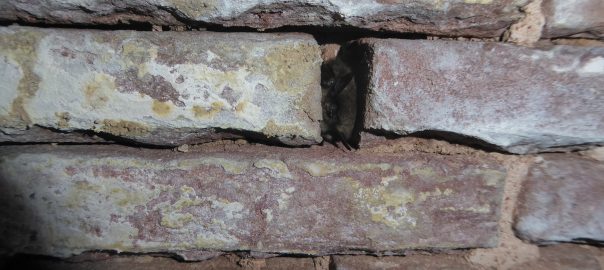 Bat Reputation
Bat Reputation
Gitty Korsuize, Utrecht
Bats — “they live in the dark, they eat your blood, they fly in your hair, and they spread diseases like Ebola”. At least that is what stereotypes have painted them to be Most people do not know much about bats. Since COVID-19, the reputation of bats is even worse...
0 Comment(s)Join our Conversation
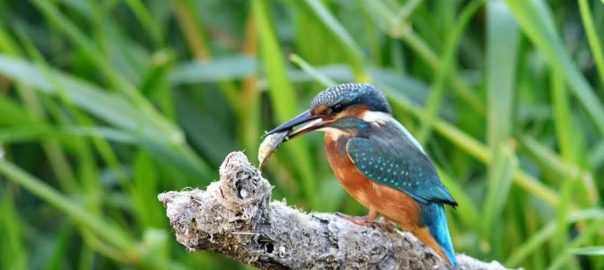 Auto-rewilding Birdlife Along the Bath River Line
Auto-rewilding Birdlife Along the Bath River Line
Lincoln Garland, Bath
The River Avon Most visitors to the city of Bath in the West of England come to enjoy its grandiose Georgian crescents, terraces, and squares, and Roman-built baths, which have been beautifully crafted from the locally mined honey-colored oölitic limestone. Indeed, the city’s magnificent architecture and Roman remains have been...
0 Comment(s)Join our Conversation
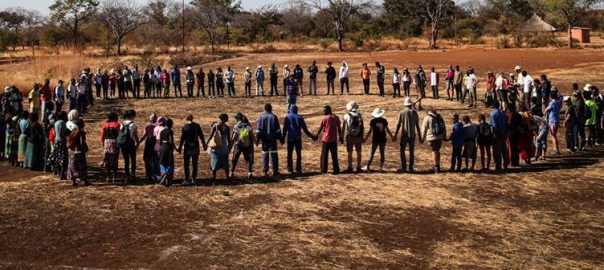 Beyond equity: What does an anti-racist urban ecology look like?
Beyond equity: What does an anti-racist urban ecology look like?
Julian Agyeman, Medford Isabelle Michele Sophie Anguelovski, Barcelona Anna Livia Brand, Berkeley Jean-Marie Cishahayo, Ottawa CJ Goulding, Teaneck Morgan Grove, Baltimore Derek Hyra, Washington Laura Landau, New York María Mejía, Bogotá Polly Moseley, Liverpool Amanda Phillips de Lucas, Baltimore Steward Pickett, Poughkeepsie Charles Prempeh, Accra Malini Ranganathan, Washington Baixo Ribeiro, São Paulo Amrita Sen, Bangalore Suné Stassen, Cape Town Abdallah Tawfic, Cairo Cindy Thomashow, Seattle Hita Unnikrishnan, Warwick Ebony Walden, Richmond Ibrahim Wallee, Accra Diana Wiesner, Bogota
2 Comment(s)
Join our Conversation
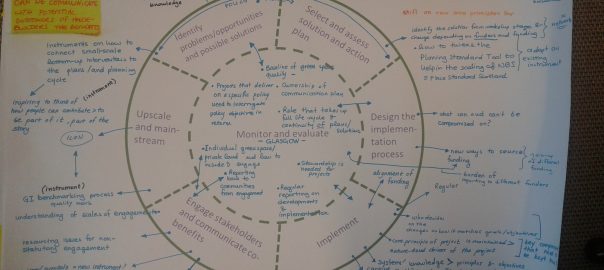 From Design to City Life: What It Takes to Bring Nature-based Solutions to Urban Reality
From Design to City Life: What It Takes to Bring Nature-based Solutions to Urban Reality
Niki Frantzeskaki, Utrecht Paula Vandergert, London Stuart Connop, London Karlijn Schipper, Rotterdam Iwona Zwierzchowska, Poznań Marcus Collier, Dublin Lodder Marleen, Rotterdam
Cities around the globe are seeing increased civic interest and appreciation of nature in the city. Pictures with citizens thronging to urban parks and urban waterfronts adhering to social distancing have flooded social media and traditional media alike in the past months. This appreciation and recognition of how important it...
0 Comment(s)Join our Conversation
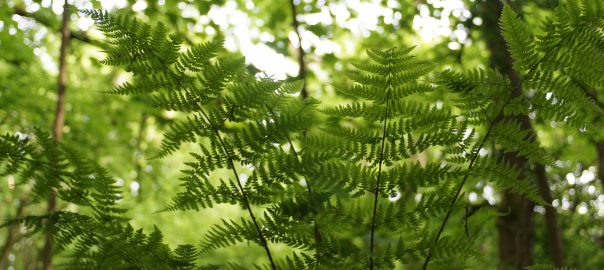 Financer des villes plus vertes pour l’avenir que nous voulons
Financer des villes plus vertes pour l’avenir que nous voulons Financing Greener Cities for the Future We Want
Ingrid Coetzee, Cape Town Elisabeth Chouraki, Paris
(Read this in English.) Pour des infrastructures respectueuses de la nature Le monde s’urbanise rapidement, exposant nos ressources naturelles à une pression croissante pour répondre aux demandes en infrastructures, terres, eau, nourriture et autres besoins vitaux. Selon le département des affaires économiques et sociales des Nations unies (UN DESA), 55...
0 Comment(s)Join our Conversation
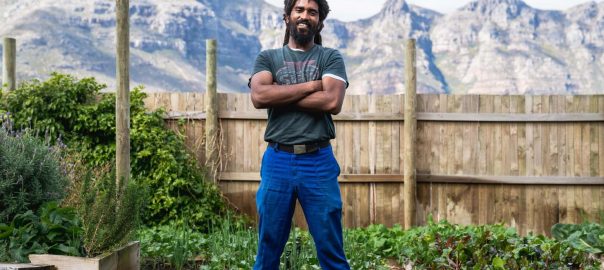 Mobilising Our Union for Ecological Urbanism
Mobilising Our Union for Ecological Urbanism
Russell Galt, Edinburgh
Things fall apart Standing at a crossroads, looking into the eye of a perfect storm, these are anxious days for humanity. The full social, humanitarian and economic fall-out of the COVID-19 pandemic may have barely come to pass but it already makes the 2008-09 global financial crisis look like child’s...
0 Comment(s)Join our Conversation
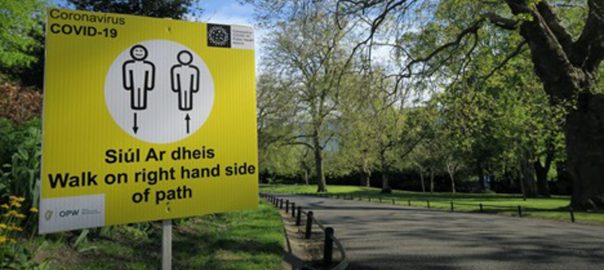 A Walk in the Park? Re-imagining Urban Environmental Conservation during the Coronavirus Pandemic
A Walk in the Park? Re-imagining Urban Environmental Conservation during the Coronavirus Pandemic
Kaja Aagaard, Middlebury Mika Mei Jia Tan, Los Baños Jennifer Rae Pierce, Vancouver
The COVID-19 pandemic has established a moment of immense global loss. In the midst of this public health crisis, our concerns for our families and communities necessarily take priority. Yet, addressing these concerns demands a look towards the future: to the reevaluation of global systems that may produce or obstruct...
1 Comment(s)Join our Conversation
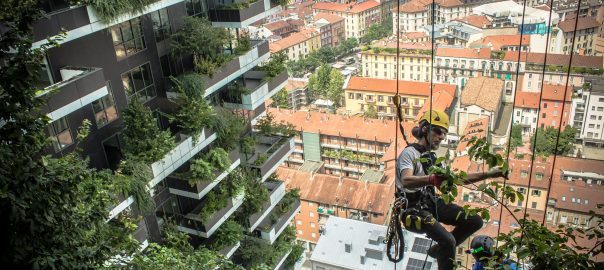 Vegetation is the Future of Architecture
Vegetation is the Future of Architecture
Gary Grant, London
Most of the inhabitable regions of the Earth were originally covered by forests, grasslands, and wetlands. These carbon-grabbing, biodiverse, spongy landscapes have been largely replaced by agriculture and urban development, which is drier, belches carbon, is erosive of soils, and which has lost most of its wildlife. Indeed, biodiversity declines...
2 Comment(s)Join our Conversation
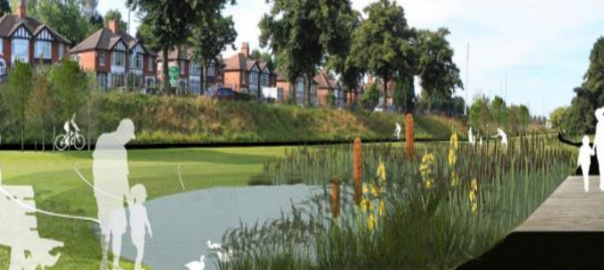 Knowledge Systems for Urban Renewal
Knowledge Systems for Urban Renewal
Chris Ives, Nottingham
“Science is meaningless because it gives no answer to our question, the only question important for us: ‘What shall we do and how shall we live?’ ” — Leo Tolstoy We know that our cities need to look and function differently. There is a wealth of scientific evidence showing that urbanisation...
1 Comment(s)Join our Conversation
 Highlights from The Nature of Cities 2020
Highlights from The Nature of Cities 2020
David Maddox, New York
Today’s post celebrates some of the highlights from TNOC writing in 2020. These contributions—originating around the world—were one or more of widely read, offering novel points of view, and/or somehow disruptive in a useful way. All 1000+ TNOC essays and roundtables are worthwhile reads, of course, but what follows will give you a...
0 Comment(s)Join our Conversation
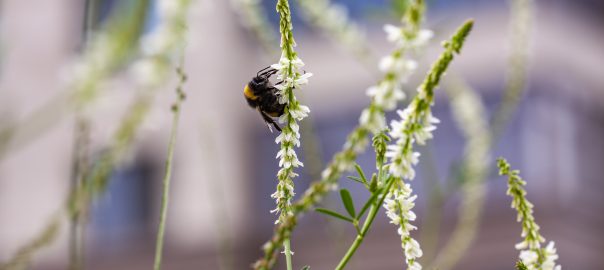 Why Would the Economy Need Biodiversity?
Why Would the Economy Need Biodiversity?
Nadezhda Kiyatkina, Moscow
And What Grassplots, Amur Leopard, and Mold Have in CommonWhat is biodiversity for? Some don’t need that question answered: you just adopt a philosopher’s perspective, and everything becomes clear—all living things have the right to dwell on the planet. For others, the question is confusing. Those trying to find a quantitative answer to...
0 Comment(s)Join our Conversation
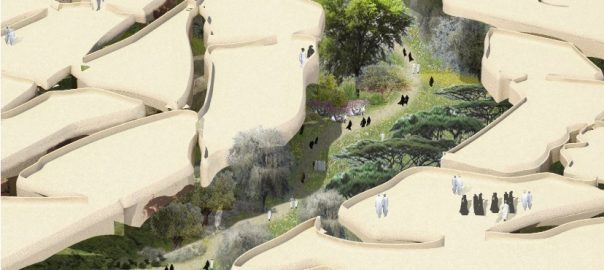 We Need an Ethical Code for Water
We Need an Ethical Code for Water
Gloria Aponte, Medellín Katherine Berthon, Melbourne Carmen Bouyer, Paris Paul Currie, Cape Town PK Das, Mumbai Meredith Dobbie, Victoria Casey Furlong, Melbourne Andrew Grant, Bath Gary Grant, London Juliana Landolfi de Carvalho, Curitiba Tom Liptan, Portland Sareh Moosavi, Brussels Harini Nagendra, Bangalore Diane Pataki, Salt Lake City André Stephan, Brussels Peter Schoonmaker, Beirut Naomi Tsur, Jerusalem Mario Yanez, Lisbon
2 Comment(s)
Join our Conversation
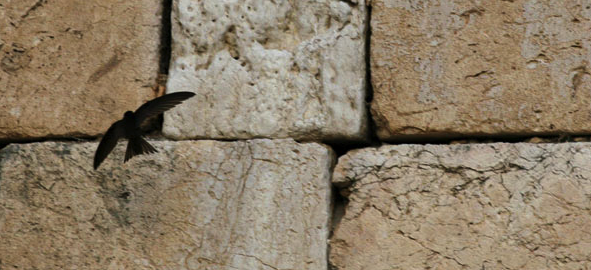 Stories of the Nature of Cities 1/2 Hour. Episode 3—Generations of Climate Change
Stories of the Nature of Cities 1/2 Hour. Episode 3—Generations of Climate Change
Ari Honarvar, San Diego Michael Harris Cohen, Sofia Laura Shillington, Montreal
Episode 3: Generations of Climate Change “A Child of the Oasis” by Ari Honavar, read by Nora AchratiA mother and daughter meet an undocumented refugee on their annual ride to the father’s Remembrance Wall. “Not Icarus” by Michael Harris Cohen, read by Dori LeggA grandmother defies social law by killing birds...
0 Comment(s)Join our Conversation
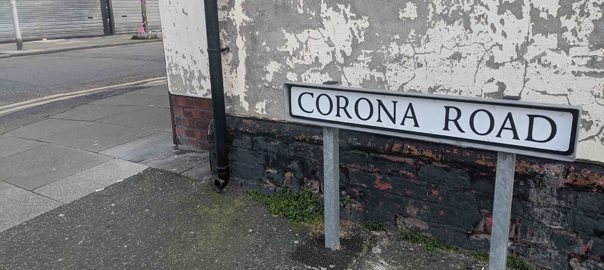 The Next “Normal” City Must Be a Sustainable Habitat for Healthy Humans
The Next “Normal” City Must Be a Sustainable Habitat for Healthy Humans
Matteo Giusti, Gävle
“Stay home!” This is the imperative that has echoed across the planet in the last months. Everyone is at, and a, risk to themselves and others. And so we did. We mostly stayed at home. After a few days, we began to notice that our house, our cities, and our...
0 Comment(s)Join our Conversation
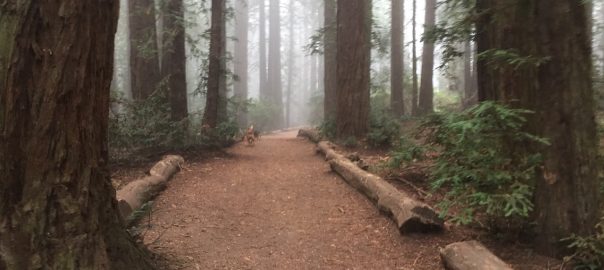 What’s Next? Learning From Nature During Lockdown
What’s Next? Learning From Nature During Lockdown
Elmaz Abinader, Oakland Jane Ingram Allen, Santa Rosa Carmen Bouyer, Paris Anne Brochot, Voulx Joyce Garvey, Dublin Leslie Gauthier, New York Frances Mezzetti, Dublin Munira Naqui, Portland
11 Comment(s)
Join our Conversation
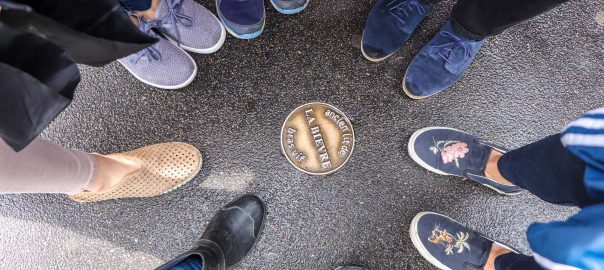 A Walk Along the Bièvre River
A Walk Along the Bièvre River
Carmen Bouyer, Paris
Since 1912 in Paris, the river Bièvre, once the city’s second-largest river, has disappeared from our landscape. It used to cross the whole left bank from south to north, flowing through the 13th and 5th arrondissements before reaching the Seine between “Le Jardin des Plantes”, our historical botanical garden, and...
0 Comment(s)Join our Conversation
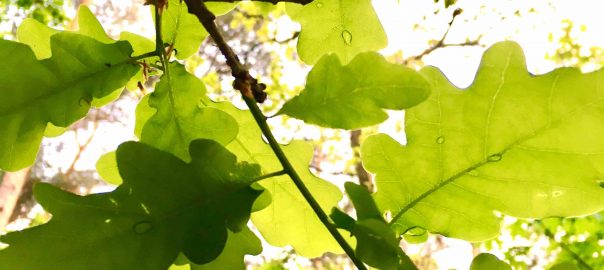 Family Tree
Family Tree
Andreas Weber, Berlin
Linden In early summer, after the crest of the first wave of the pandemics had broken and kids resumed to go to school and street cafés had opened again, I spent days alone writing on the balcony of a flat in a somewhat sketchy Berlin neighbourhood. Down in the street,...
2 Comment(s)Join our Conversation
 To Live in Companionship with Trees, Plants, Rivers, and Mountains
To Live in Companionship with Trees, Plants, Rivers, and Mountains
Martine Murray, Melbourne
We are gardening. Feeding our trees. We decide to cut the deadwood off the Fejoa tree. Afterwards it’s considerably squat and oddly shaped, but we agree it looks better. Or it feels better. Or it seems to us that it, the tree, feels better. It has just been liberated of...
1 Comment(s)Join our Conversation
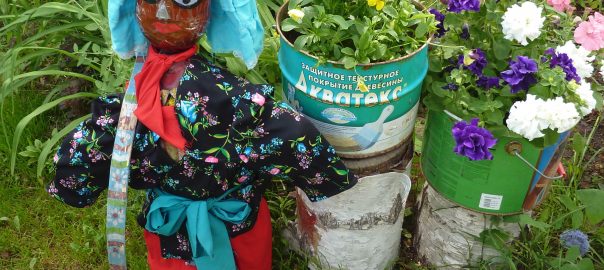 Crisis Reveals the Fault Lines of Gender in Environmentalism—How Do We Value Everyday Environments?
Crisis Reveals the Fault Lines of Gender in Environmentalism—How Do We Value Everyday Environments?
Nathalie Blanc, Paris Sandra Laugier, Paris Pascale Molinier, Paris Anne Querrien, Paris
These are times of crisis. One might even think that the COVID-19 crisis looks like a an alternative expression of crises that are already building, especially ecological ones. Harald Welzer in The Climate Wars shows that the feeling of crisis as well as fear is born in the face of...
0 Comment(s)Join our Conversation
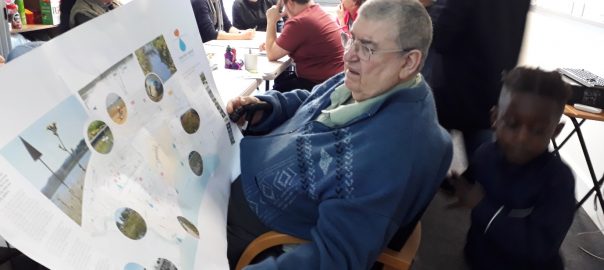 Getting to Know You: The Under-Appreciated Art (Science) of Slow Research and Arts-Led Community Engagement
Getting to Know You: The Under-Appreciated Art (Science) of Slow Research and Arts-Led Community Engagement
Paula Vandergert, London Susie Miller Oduniyi, London
Know the feeling when every project seems to require a huge amount of work in a short amount of time, for very little reward?? This seems to be the way of the world, whether you’re a practitioner, a researcher, or a community activist (or all three). I was prompted to...
1 Comment(s)Join our Conversation
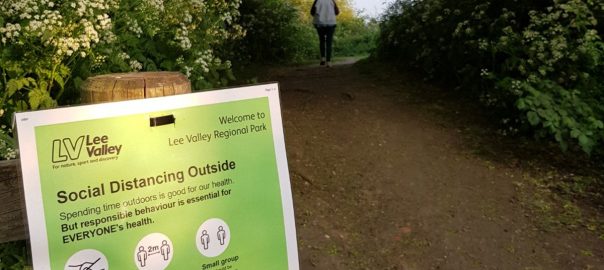 How is COVID-19 affecting caring for and researching urban ecology?
How is COVID-19 affecting caring for and researching urban ecology?
Christina Breed, Pretoria Mark Champion, Wigan Joy Clancy, Twente Ian Douglas, Manchester Pete Frost, Cardiff Lincoln Garland, Bath David Haley, Walney Island Jane Houghton, York Yun Hye HWANG, Singapore Christian Isendahl, Gothenburg Philip James, Salford Sarah Lindley, Manchester Patrick M. Lydon, Daejeon Nancy McIntyre, Lubbock Camilo Ordóñez, Melbourne Stephan Pauleit, Munich Joe Ravetz, Manchester Graham Rook, London Richard Salisbury, Manchester Alan Scott, London Richard Scott, Liverpool Monica Smith, Los Angeles Marcelo Lopes de Souza, Rio de Janeiro Miriam Stark, Honolulu Katalin Szlavecz, Baltimore Joanne Tippett, Manchester Piotr Tryjanowski, Poznan Tim Webb, London Mike Wells, Bath Phil Wheater, Manchester
0 Comment(s)
Join our Conversation
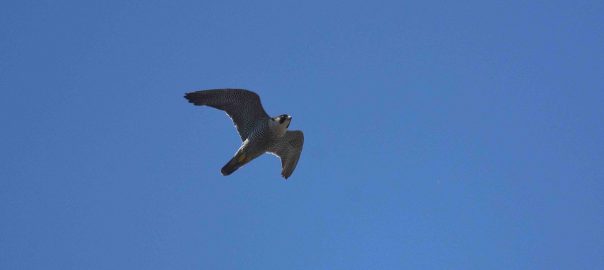 Depuis Ma Fenêtre / From My Window
Depuis Ma Fenêtre / From My Window
Maxime Zucca, Paris
Read this in English.J’ai fait les chroniques confinées quotidiennes pendant la quarantaine parisienne, et voici quelques observations récentes de notre maison à Pantin, dans la banlieue nord-est de Paris. Les Mésanges charbonnières qui ont élu domicile dans le trou du mur de mes voisins ont quitté leur nid ce matin. Des six jeunes, un a fini...
2 Comment(s)Join our Conversation
 What Nature Is Telling Us…
What Nature Is Telling Us…
Chantal van Ham, Brussels
Winter may seem a quiet season when it comes to bird sounds, but when we listen carefully we may hear the starling, one of the most cheerful whistlers in the world. Mozart had a starling for some time and enjoyed the delightful singing of his bird friend, who was able...
0 Comment(s)Join our Conversation
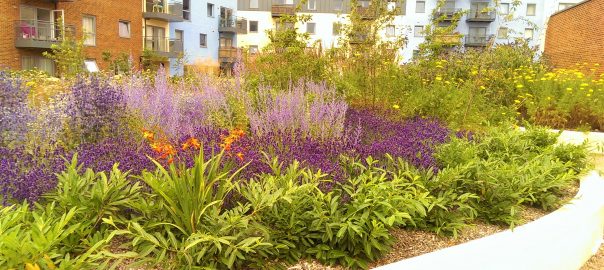 Native Versus Non-native: Which Plants are Best for Biodiversity?
Native Versus Non-native: Which Plants are Best for Biodiversity?
Lincoln Garland, Bath
When evaluating or seeking to enhance the biodiversity interest of an urban greenspace, a key attribute to consider is its floral composition. Floral composition can be native, non-native or a variable mix of the two. A species is defined as native to a given region or ecosystem if its presence...
4 Comment(s)Join our Conversation
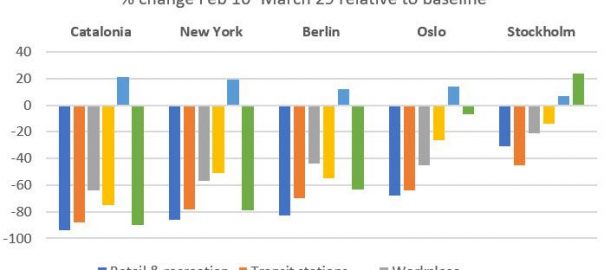 Enabling Access to Greenspace During the Covid-19 Pandemic—Perspectives from Five Cities
Enabling Access to Greenspace During the Covid-19 Pandemic—Perspectives from Five Cities
David Barton, Oslo Dagmar Haase, Berlin André Mascarenhas, Berlin Johannes Langemeyer, Barcelona Francesc Baro, Barcelona Christopher Kennedy, San Francisco Zbigniew Grabowski, Hartford Timon McPhearson, New York Norun Hjertager Krog, Oslo Zander Venter, Oslo Vegard Gundersen, Oslo Erik Andersson, Stockholm
There is now plenty of evidence on the benefits of local access to greenspace and greenviews on physical health and mental well-being. Lockdowns and social distancing advisories have placed restrictions on citizen normal access to public spaces. Google community mobility statistics from February-March revealed varied patterns of reaction to Covid-19 in...
1 Comment(s)Join our Conversation
 Covid has upended all the normal routines in our lives and work. How do you imagine you might be changed by it, both professionally, but also personally as you negotiate a new post-virus “normal”?
Covid has upended all the normal routines in our lives and work. How do you imagine you might be changed by it, both professionally, but also personally as you negotiate a new post-virus “normal”?
Pippin Anderson, Cape Town Isabelle Michele Sophie Anguelovski, Barcelona Janice Astbury, Buenos Aires Lindsay Campbell, New York Sarah Charlop-Powers, New York Katrine Claassens, Montreal M'Lisa Colbert, Montreal Carmen Bouyer, Paris Marcus Collier, Dublin Paul Currie, Cape Town Samarth Das, Mumbai Gillian Dick, Glasgow Paul Downton, Melbourne Emilio Fantin, Milan Todd Forest, New York Andrew Grant, Bath Eduardo Guerrero, Bogotá Bram Gunther, New York Dagmar Haase, Berlin Annegret Haase, Leipzig Fadi Hamdan, Athens Cecilia Herzog, Rio de Janeiro Alex Herzog, Rio de Janeiro Matthew Jensen, New York Panagiota Kotsila, Barcelona Gilles Lecuir, Paris Nina-Marie Lister, Toronto Kevin Lunzalu, Nairobi Patrick M. Lydon, Daejeon Yvonne Lynch, Riyadh David Maddox, New York Antonia Machado, Portland Francois Mancebo, Paris Rob McDonald, Basel Brian McGrath, New York Siobhán McQuaid, Dublin Ragene Palma, London Diane Pataki, Salt Lake City Mitchell Pavao-Zuckerman, College Park Steward Pickett, Poughkeepsie Mary Rowe, Toronto Andrew Rudd, New York City Eric Sanderson, New York Olivier Scheffer, Bordeaux Huda Shaka, Dubai Laura Shillington, Montreal Elisa Silva, Caracas David Simon, London Mary Hall Surface, Washington Erika Svendsen, New York Abdallah Tawfic, Cairo Christine Thuring, Vancouver Naomi Tsur, Jerusalem Stéphane Verlet-Bottéro, Paris Andreas Weber, Berlin Diana Wiesner, Bogota Darlene Wolnik, New Orleans Xin Yu, Shenzhen Carly Ziter, Montreal
4 Comment(s)
Join our Conversation
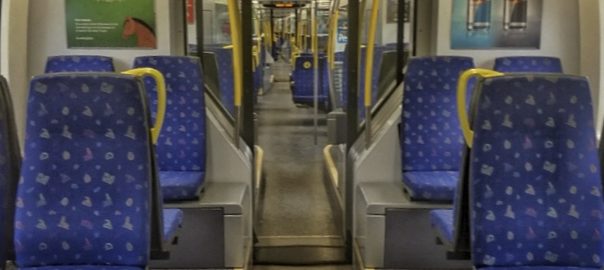 Stunting Our Immediate Future: A Teenage Perspective on Covid-19 and Its Challenges
Stunting Our Immediate Future: A Teenage Perspective on Covid-19 and Its Challenges
Vishisht Singhal, Delhi
The lessons learnt by teenagers today will assist us as global leaders of tomorrow, to make better and more informed decisions to prevent any such future epidemics. The Covid-19 crisis and widespread epidemic has infected more than a million people and is increasingly causing agony to billions. While the severity...
0 Comment(s)Join our Conversation
 TNOC Summit Dialogue: How can professors help mobilize knowledge?
TNOC Summit Dialogue: How can professors help mobilize knowledge?
Thomas Elmqvist, Stockholm Nina-Marie Lister, Toronto David Maddox, New York Francois Mancebo, Paris
0 Comment(s)
Join our Conversation
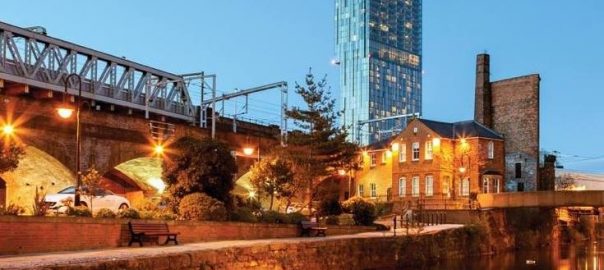 Design with Nature is not about Financial Return—It is a Recognition that Humans Rely on Nature.
Design with Nature is not about Financial Return—It is a Recognition that Humans Rely on Nature.
Stephanie Pincetl, Los Angeles
There is no doubt that cities, especially since the industrial revolution, have by and large been built overriding local ecologies, obliterating topography, soils, streams, altering soils, ignoring seasons, breezes, sunlight. Nature based solutions, urban ecosystem services, however they are called, have emerged to try to remediate this historical modernist hubris...
0 Comment(s)Join our Conversation
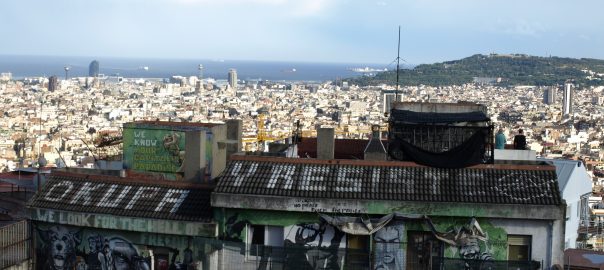 Common Trends and Conundrums in Nature-Based Solutions: Greening at the Intersection of Urban Densification and Urban Sprawl
Common Trends and Conundrums in Nature-Based Solutions: Greening at the Intersection of Urban Densification and Urban Sprawl
Filka Sekulova, Barcelona Isabelle Michele Sophie Anguelovski, Barcelona Francesc Baro, Barcelona Bernadett Kiss, Lund
Traditional chinampa cultivation as a way to restore water-stressed ecosystem services in Mexico City’s artificial wetland areas conquered from the sea in Tianjin Harbour … a network of bug-friendly bushes and patches of green along cycling routes in Scotland … an urban forest strategy in Melbourne promoting the plantating of...
0 Comment(s)Join our Conversation
 TNOC Summit Dialogue: How can we provide living space for people?
TNOC Summit Dialogue: How can we provide living space for people?
Samarth Das, Mumbai Elisa Silva, Caracas David Simon, London Xin Yu, Shenzhen
0 Comment(s)
Join our Conversation
 A Fractal Solution to Regional Complexity and Governance
A Fractal Solution to Regional Complexity and Governance
Mathieu Hélie, Montréal
Could we construct a new image of what the political boundaries of an urban landscape could take shape as? Instead of the hierarchical approach that is commonplace, with cities governed by layers of neighborhood, urban, regional, and state-provincial levels through different electoral or appointed bodies, I propose to approach the...
0 Comment(s)Join our Conversation
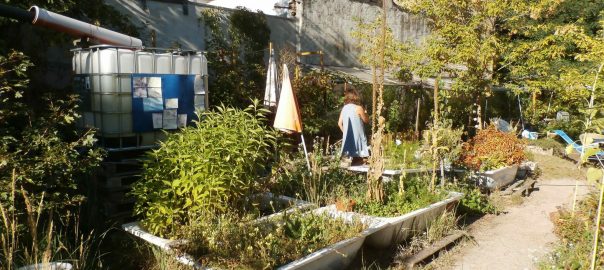 Placing Equity at the Center of the Urban Greening Agenda
Placing Equity at the Center of the Urban Greening Agenda
Peleg Kremer, Princeton Annegret Haase, Leipzig Dagmar Haase, Berlin
Equity and Sustainability: a history of ideological convergence vs. practiced indifference The idea that equity is an important and indispensable part of sustainable development has been there from the early days. The intellectual basic for and actions taken towards sustainability are thought to be fundamentally fair and just—a world in...
0 Comment(s)Join our Conversation
 And, Now What? Exploring what happens after a 16,000-kilometer walk across two continents
And, Now What? Exploring what happens after a 16,000-kilometer walk across two continents
Jennifer Baljko, Barcelona
Those last few days in June, we could see Barcelona’s shape in the distance. The three chimneys from the old power plant. The slanted roof of the Forum. The towers from the Olympic village. The long stretch of beach reaching to the glass sail that is the W hotel. The...
0 Comment(s)Join our Conversation
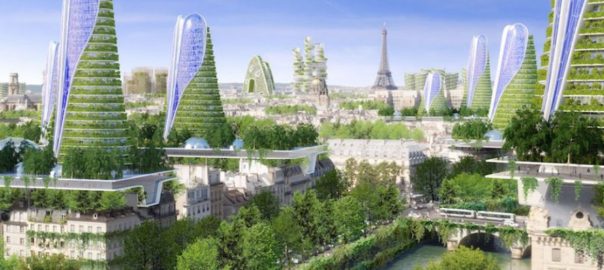 Highlights from The Nature of Cities in 2019
Highlights from The Nature of Cities in 2019
David Maddox, New York
Today’s post celebrates some of the highlights from TNOC writing in 2019. These contributions—originating around the world—were one or more of widely read, offering novel points of view, and/or somehow disruptive in a useful way. All 1000+ TNOC essays and roundtables are worthwhile reads, of course, but what follows will give you a...
0 Comment(s)Join our Conversation
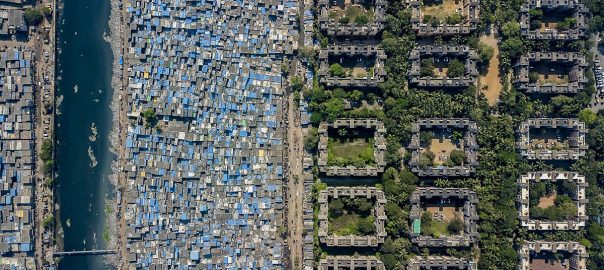 TNOC Summit Dialogue: Demanding access to green space as a right for everyone
TNOC Summit Dialogue: Demanding access to green space as a right for everyone
Isabelle Michele Sophie Anguelovski, Barcelona Adrian Benepe, New York Samarth Das, Mumbai David Maddox, New York
0 Comment(s)
Join our Conversation
 A Storm in a Bioswale: Breaking Down Barriers to Nature-Based Solutions
A Storm in a Bioswale: Breaking Down Barriers to Nature-Based Solutions
Stuart Connop, London Caroline Nash, London
Nature-based solutions are emerging as a key mechanism for renaturing cities, yet barriers around evidence and effectiveness still stand in the way of widespread rollout across our urban landscapes. More by luck than design, we learned that a straightforward technical test of a Sustainable Drainage System (SuDS) retrofit scheme in...
0 Comment(s)Join our Conversation
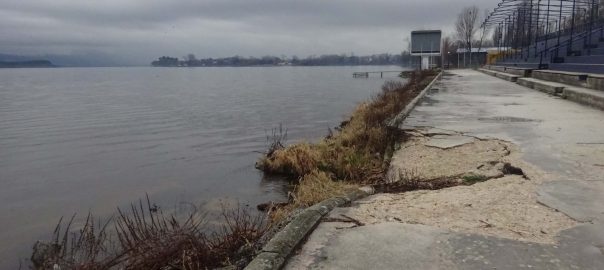 Is Experimenting Natural in Cities? The Nature of Experiments and the Experiments with Nature
Is Experimenting Natural in Cities? The Nature of Experiments and the Experiments with Nature
Niki Frantzeskaki, Utrecht
Experimentation is a way to bring new solutions or approaches to cities. As a researcher on sustainability and sustainability transitions, I believe that, if solutions are to be adopted and scaled to improve human and ecological conditions in our world, they require testing in the field, beyond closed-door labs but...
0 Comment(s)Join our Conversation
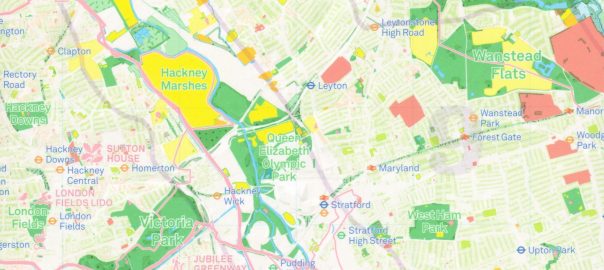 National Park City: What if your city were a National Park City, analogous to what London created? What it would be like? What would it take to accomplish?
National Park City: What if your city were a National Park City, analogous to what London created? What it would be like? What would it take to accomplish?
Alison Barnes, London Méliné Baronian, Versailles Maud Bernard-Verdier, Berlin Ioana Biris, Amsterdam Timothy Blatch, Cape Town Geoff Canham, Tauranga Samarth Das, Mumbai Gillian Dick, Glasgow Luis Antonio Roman Diez, Merida Eduardo Guerrero, Bogotá Sue Hilder, Glasgow Mike Houck, Portland Sophie Lokatis, Berlin Aletta Bonn, Berlin Scott Martin, Louisville Sebastian Miguel, Buenos Aires Gareth Moore-Jones, Ohope Beach Rob Pirani, New York Daniel Raven-Ellison, London Tom Rozendal, Breda Snorri Sigurdsson, Reykjavík Lynn Wilson, Vancouver
0 Comment(s)
Join our Conversation
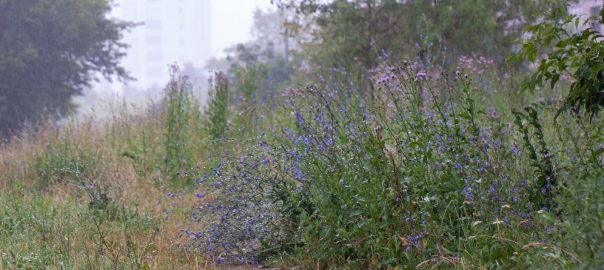 Inspiring District Residents, Specialists, and Government Officials to Work Together to Create a Park That Would Sustain Biodiversity and Meet People’s Desires
Inspiring District Residents, Specialists, and Government Officials to Work Together to Create a Park That Would Sustain Biodiversity and Meet People’s Desires
Nadezhda Kiyatkina, Moscow
Этот текст также можно прочитать на русском языке. For the last two years our interdisciplinary team has been working on the Cherished Meadow (Zapovedniy lug, in Russian) project. This is an unprecedented happening, as it is the first project of its kind in decades that involves building a city park...
1 Comment(s)Join our Conversation
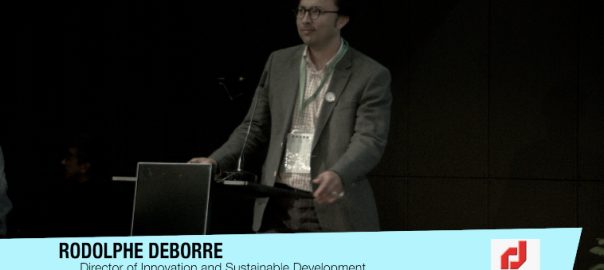 Free to Live Beautiful Lives
Free to Live Beautiful Lives
Rodolphe Deborre, Lille
Good evening. I’m quite moved by the fantastic show we just had. So, I’m going to be experimental as well, because it’s going to be the first time in my life that I think in French, I try to speak in English, and it’s going to be translated back in...
0 Comment(s)Join our Conversation
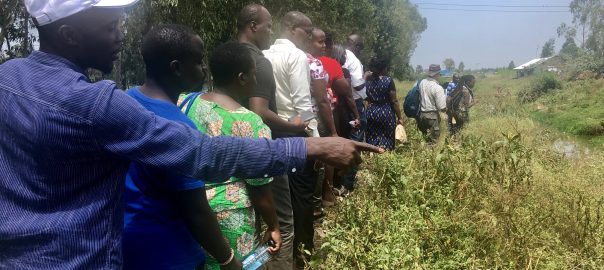 Why are we doing walking tours in African cities? To help us see and engage with small scale urbanism and urban tinkering.
Why are we doing walking tours in African cities? To help us see and engage with small scale urbanism and urban tinkering.
Pippin Anderson, Cape Town Celestine Collins, Kisumu Julie Goodness, Stockholm Jessica Kavonic, Cape Town Odhiambo Ken K'oyooh, Kisumu Viveca Mellegård, Stockholm Benard Ojwang, Kisumu Aiuba Oliveira, Nacala Semakula Samson, Entebbe Ellika Hermansson Torok, Stockholm Thandeka Tshabalala, Cape Town
0 Comment(s)
Join our Conversation
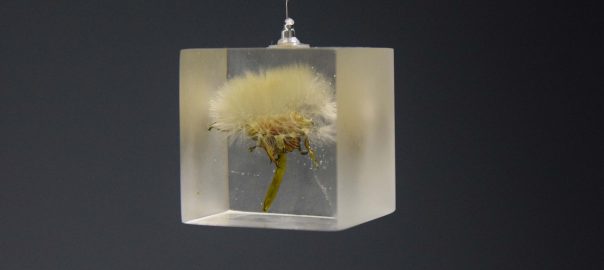 Can Artistic Knowledge Bring Us Closer to Encountering the Co-influence of all Living Organisms?
Can Artistic Knowledge Bring Us Closer to Encountering the Co-influence of all Living Organisms?
Audrey Yeo, Edinburgh
“the knowing self is partial in all its guises, never finished, and can thus only develop in combination with others.” — Donna Haraway in Situated Knowledges: The Science Question in Feminism and the Privilege of Partial Perspective, p586 I grew up in Singapore. I heard stories from my father about when...
0 Comment(s)Join our Conversation
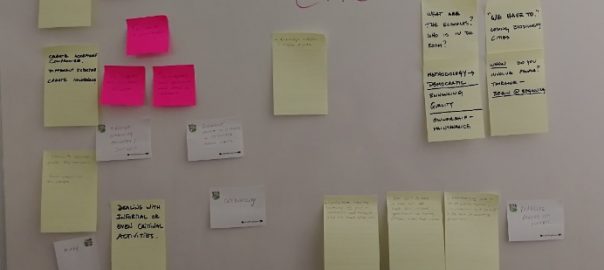 Co-creating Inclusive Green Cities: European Examples and Global Learning Opportunities
Co-creating Inclusive Green Cities: European Examples and Global Learning Opportunities
Katharina Hölscher, Rotterdam Alice Reil, Munich
“Co-creation” has garnered much buzz as a promising enabler of greener and better cities for all. During a hands-on session (“Co-creating inclusive green cities: European examples and global learning opportunities”) at the Nature of Cities Summit in Paris (June 4-7, 2019) with co-creation experts and cities—co-organised by Connecting Nature partners...
0 Comment(s)Join our Conversation
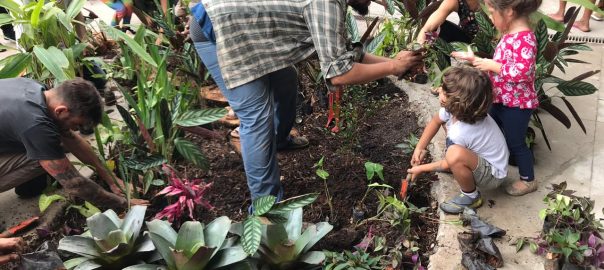 How is the concept of “stewardship” and “care for local environments” expressed around the world?
How is the concept of “stewardship” and “care for local environments” expressed around the world?
Nathalie Blanc, Paris Lindsay Campbell, New York Zorina Colasero, Puerto Princesa City Kirk Deitschman, Waimānalo Johan Enqvist, Cape Town Emilio Fantin, Milan Artur Jerzy Filip, Warsaw Carlo Gomez, Puerto Princesa City Cecilia Herzog, Rio de Janeiro Michelle Johnson, New York City Kevin Lunzalu, Nairobi Patrick M. Lydon, Daejeon Romina Magtanong, Puerto Princesa City Heather McMillen, Honolulu Ranjini Murali, Bangalore Harini Nagendra, Bangalore Ferus Niyomwungeri, Kigali Ragene Palma, London Beatriz Ruizpalacios, Huda Shaka, Dubai Erika Svendsen, New York Abdallah Tawfic, Cairo Diana Wiesner, Bogota Xin Yu, Shenzhen
1 Comment(s)
Join our Conversation
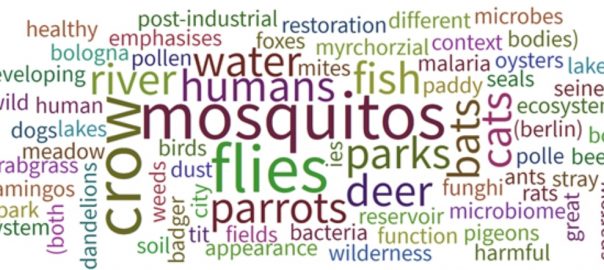 WILD STRAY CARE: Exploring multiple ways people co-exist with urban nature
WILD STRAY CARE: Exploring multiple ways people co-exist with urban nature
Ferne Edwards, Barcelona Amy Hahs, Ballarat Yun Hye HWANG, Singapore
Human relationships with nature are highly complex and variable. Particularly now when the human connection to nature has been highly disrupted, and the sense of custodianship or stewardship has been displaced. Yet at the same time, there is a growing awareness and movement of the need to reconnect people and...
2 Comment(s)Join our Conversation
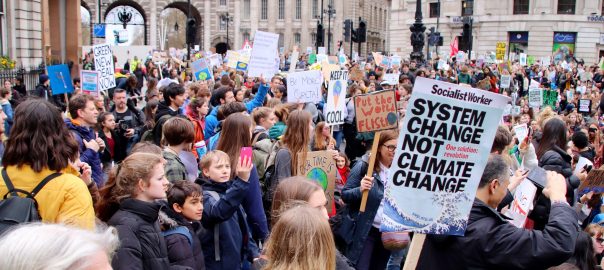 Can Cities be Greta?
Can Cities be Greta?
Peleg Kremer, Princeton Raz Godelnik, Princeton
On the last week of September millions of people participated in climate strike marches around the world, protesting against global inaction on climate change. Led by teen climate activist Greta Thunberg, the youth climate strike movement and other social movements such as the Sunrise Movement in the U.S. and Extinction Rebellion...
0 Comment(s)Join our Conversation
 Smart vs Green: Technology Paradigms Battle it Out for the Future City
Smart vs Green: Technology Paradigms Battle it Out for the Future City
Sarah Hinners, Salt Lake City
Vision A—The Smart City: The city is an intricate network of digital communications, computations, and connections. Data are being collected everywhere, at all times, and feed into computing systems that work to coordinate functions like power availability and traffic to optimize efficiency in real time. Autonomous vehicles navigate the streets...
2 Comment(s)Join our Conversation
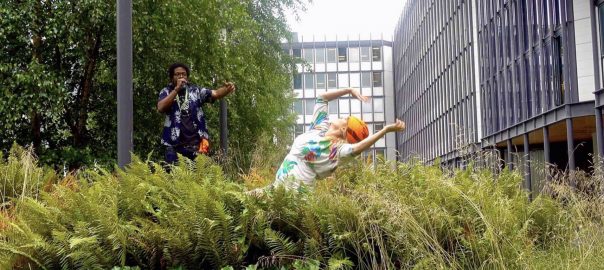 One Minute of Dance a Day, at TNOC Summit
One Minute of Dance a Day, at TNOC Summit
Nadia Vadori-Gauthier, Paris
One of the One Minute of Dance a Day project. This dance was performed on the Sorbonne campus during the TNOC Summit, outside the main auditorium venue. Beats by 3’z. There are over 700 dances, and you can search them by Paris neighborhood, site type, nature element, and more.
0 Comment(s)Join our Conversation
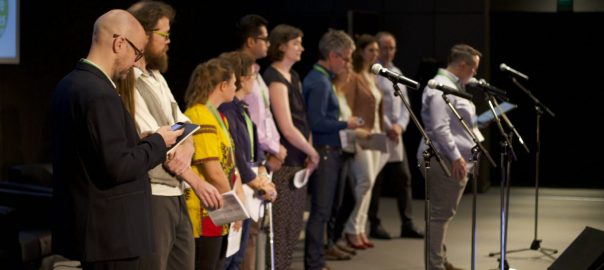 The spirit of Dada welcomes you to TNOC Summit: What is the nature of the city of our dreams?
The spirit of Dada welcomes you to TNOC Summit: What is the nature of the city of our dreams?
Carmen Bouyer, Paris Lindsay Campbell, New York Marcus Collier, Dublin Katie Coyne, Austin Samarth Das, Mumbai Gillian Dick, Glasgow Thomas Elmqvist, Stockholm Cecilia Herzog, Rio de Janeiro Jessica Kavonic, Cape Town Patrick M. Lydon, Daejeon Timon McPhearson, New York Andrew Rudd, New York City Chantal van Ham, Brussels
0 Comment(s)
Join our Conversation
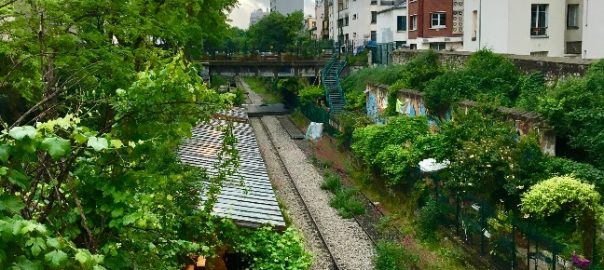 From City of Light to Ville Verte: How a Comprehensive Approach to Climate Change Adaptation is Making Paris the World’s Green Innovator
From City of Light to Ville Verte: How a Comprehensive Approach to Climate Change Adaptation is Making Paris the World’s Green Innovator
Adrian Benepe, New York
On a recent visit to Paris after an absence of more than a dozen years, I was struck by the comprehensive and visionary approach to urban resilience and livability that is transforming Paris into the global leader in innovative urban greening. Since my childhood, I have been entranced by the...
1 Comment(s)Join our Conversation
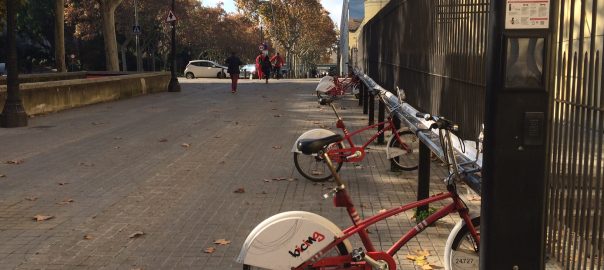 Oh, For the Love of Bicycles! A Walking Reflection about Moving on Two Wheels through Urban and Rural Areas
Oh, For the Love of Bicycles! A Walking Reflection about Moving on Two Wheels through Urban and Rural Areas
Jennifer Baljko, Barcelona
Walking may be my main form of transportation these days, but I often daydream about wheels…bicycle wheels…and the way they move people through urban and rural spaces. Most of our 14,000-kilometer journey to date is speckled with memories of two-wheeled riders, and my longing to join them in their pedaling...
0 Comment(s)Join our Conversation
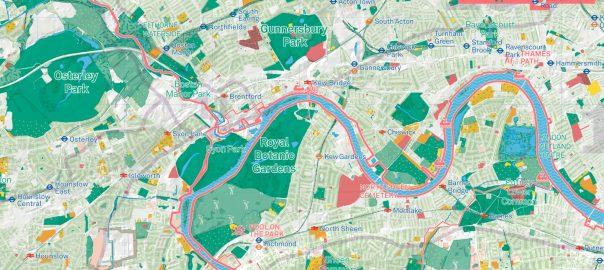 London National Park City is a Reality
London National Park City is a Reality
David Goode, Bath
During the past week the eyes of the world have been on London, to see a new Prime Minister installed at Westminster. But the week has also seen a momentous decision made for a sustainable and liveable future for London. The city was designated as a National Park City, the...
0 Comment(s)Join our Conversation
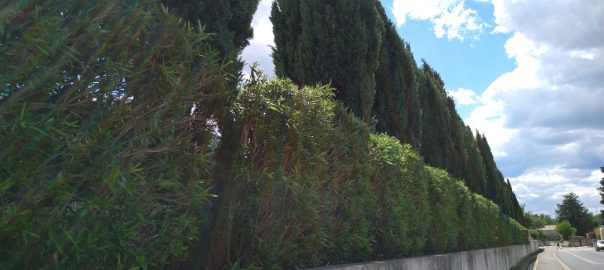 Closer to Home, Higher the Walls
Closer to Home, Higher the Walls
Jennifer Baljko, Barcelona
We noticed an extraordinary thing walking across Asia and Europe since January 2016: the absence and presence of fences. It may not be extraordinary in the “I climbed Everest” kind of way. But, for us, it’s extraordinary in the “I walk slow enough to see how fences change” kind of...
0 Comment(s)Join our Conversation
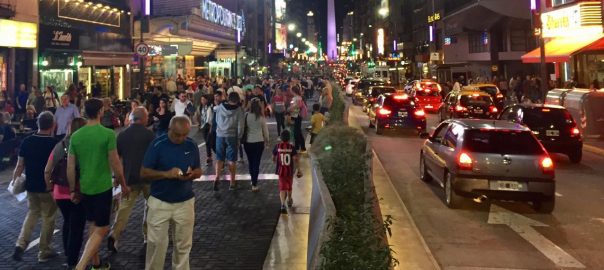 What prevents us from creating cities that are better for people and nature? It doesn’t seem like a lack of knowledge—don’t we have enough research knowledge to act on better policy? So, what is the impediment?
What prevents us from creating cities that are better for people and nature? It doesn’t seem like a lack of knowledge—don’t we have enough research knowledge to act on better policy? So, what is the impediment?
Adrian Benepe, New York Paul Downton, Melbourne Ana Faggi, Buenos Aires Sumetee Gajjar, Cape Town Russell Galt, Edinburgh Rob McDonald, Basel Huda Shaka, Dubai Vivek Shandas, Portland Philip Silva, New York Naomi Tsur, Jerusalem
7 Comment(s)
Join our Conversation
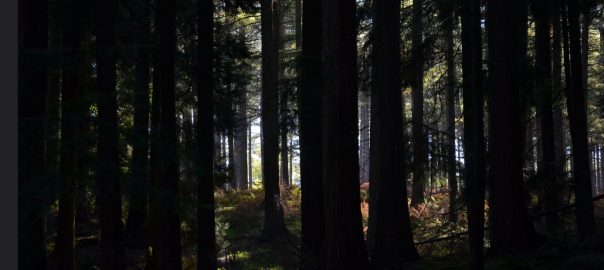 The Singing Air
The Singing Air
Andreas Weber, Berlin
“…as if refusing to be caught / In any singular vision of my eye / Or in the nets and cages of my thought, / They tower up, shatter, and madden space / With their divergences, are each alone / Swallowed from sight.”— Richard Wilbur, An Event (excerpt) In the last...
0 Comment(s)Join our Conversation
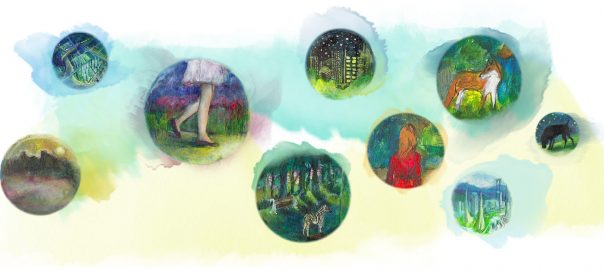 Imagining Future Cities in an Age of Ecological Change
Imagining Future Cities in an Age of Ecological Change
Ursula Heise, Los Angeles
The guidelines of the prompt were very simple. Stories had to be set in a city in the distant future (i.e. in or near the year 2099), be 1,000 words or less, and have as significant plot points both nature and people. With this framework The Nature of Cities launched...
2 Comment(s)Join our Conversation
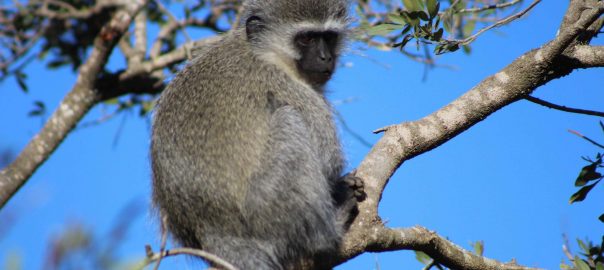 On Paschal Mysteries, Primates and Conflagration: Notre Dame and the Ecological Disenfranchisement of Western Civilization
On Paschal Mysteries, Primates and Conflagration: Notre Dame and the Ecological Disenfranchisement of Western Civilization
Keith Tidball, Ithaca
I was vacationing in Florida, taking advantage of Spring Break, and Easter week, writing and reading and escaping the administrivia that accompanies the end of the spring semester when I saw a short report on the television behind the bar at the local pub. It was Notre Dame. It was...
2 Comment(s)Join our Conversation
 What Cities Can Learn from Human Bodies
What Cities Can Learn from Human Bodies
Nadina Galle, Amsterdam
At any one moment, trillions of chemical reactions take place in the human body: a myriad of connections, enzymes, and processes that together make up our human metabolism. You might recognise this concept from health and fitness clickbait headlines that promise things like: “10 easy ways to increase your metabolism”;...
4 Comment(s)Join our Conversation
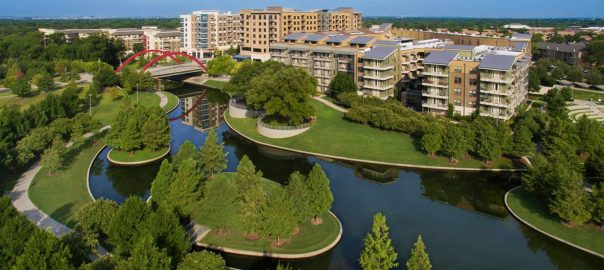 Proposals for the Environment and the Future of Cities
Proposals for the Environment and the Future of Cities
Kevin Sloan, Dallas-Fort Worth
A Brief History of Climate Change Issued in November of 2018 by a collection of 13 government agencies known as the U.S. Global Change Research Program, the environmental assessments of The Fourth National Climate Assessment (NCA4) present a deeply disturbing forecast and polarizing confrontation to most anyone reading the report....
1 Comment(s)Join our Conversation
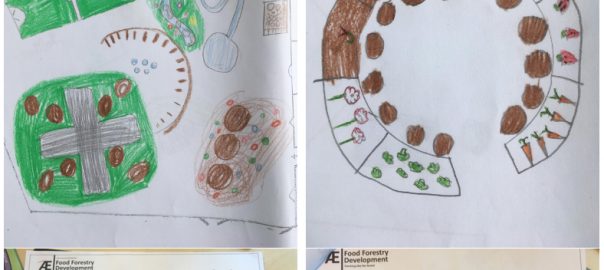 From Wet Feet to a Tiny Food Forest—How These 4th Graders Transformed Their Schoolyard into a Tiny Food Forest
From Wet Feet to a Tiny Food Forest—How These 4th Graders Transformed Their Schoolyard into a Tiny Food Forest
Marthe Derkzen, Arnhem/Nijmegen
A Tiny Food Forest? As in, an edible forest? At school? Driven and designed by a bunch of 4thgraders? Absolutely. This project became a reality thanks to a dedicated team of enthusiastic individuals (children, teachers, directors, policymakers, nature educators, parents, neighbors, designers, and scientists) in the mid-sized town of Ede...
1 Comment(s)Join our Conversation
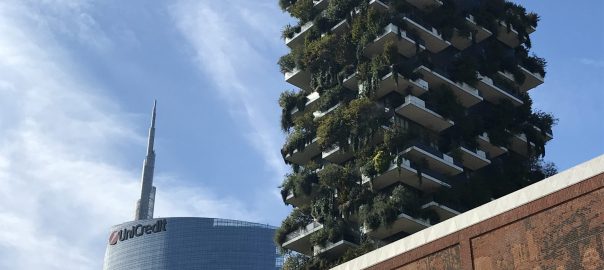 Vegetating Tall Buildings
Vegetating Tall Buildings
Gary Grant, London
In 1883, a rooftop garden theatre opened in New York City. The idea was to escape the city summer heat, whilst enjoying some evening entertainment, without actually leaving NYC. A decade later, the New York Times announced that, “New York is fast becoming a city of roof gardens”. In 1935,...
3 Comment(s)Join our Conversation
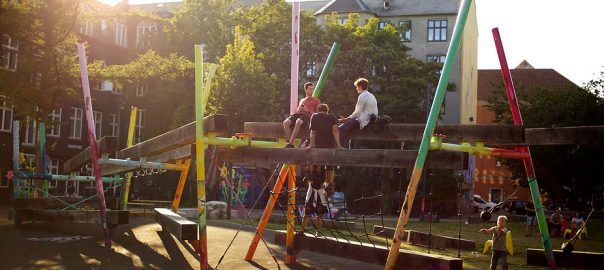 Whose Park? The Forty-Year Fight for Justice in ‘The People’s Park’ under Copenhagen’s Evolving Urban Managerialism
Whose Park? The Forty-Year Fight for Justice in ‘The People’s Park’ under Copenhagen’s Evolving Urban Managerialism
Rebecca Rutt, Copenhagen Stephanie Loveless, Barcelona
In the last three decades, Copenhagen has shifted from an obscure Nordic capital to a leading global city. It is known for progressive environmental policies, an enviable public transportation and cycling network, and numerous public green spaces, earning it the European Green Capital Award in 2014. Moreover, Denmark is repeatedly...
0 Comment(s)Join our Conversation
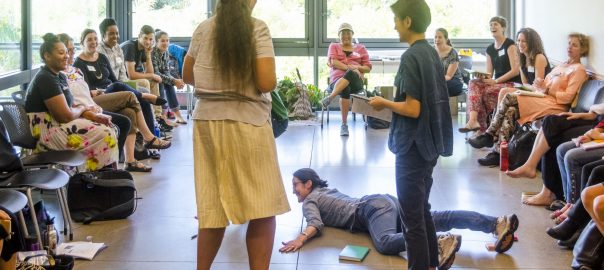 What I mean when I talk about collaboration. What is a specific experience collaborating on a project with someone from a different discipline or “way of knowing”?
What I mean when I talk about collaboration. What is a specific experience collaborating on a project with someone from a different discipline or “way of knowing”?
Pippin Anderson, Cape Town Carmen Bouyer, Paris Lindsay Campbell, New York Gillian Dick, Glasgow Lonny Grafman, Arcata Eduardo Guerrero, Bogotá Britt Gwinner, Washington Keitaro Ito, Fukutsu City Madhusudan Katti, Raleigh Jessica Kavonic, Cape Town Yvonne Lynch, Riyadh Mary Mattingly, Brooklyn Brian McGrath, New York Tischa Muñoz-Erickson, Río Piedras, Puerto Rico Ragene Palma, London Diane Pataki, Salt Lake City Wilson Ramirez Hernandez, Bogotá Bruce Roll, Portland David Simon, London Tomomi Sudo, Fukuoka Dimitra Xidous, Dublin
3 Comment(s)
Join our Conversation
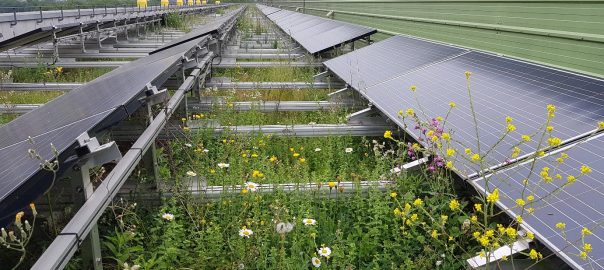 Mosaic Management: The Missing Ingredient for Biodiversity Innovation in Urban Greenspace Design
Mosaic Management: The Missing Ingredient for Biodiversity Innovation in Urban Greenspace Design
Stuart Connop, London Caroline Nash, London
With a new stream of studies adding to evidence revealing disturbing declines in global populations of insects (Hallmann et al. 2018, Lister & Garcia 2018, Sánchez-Bayo and Wyckhuys 2019) and reports of an ecological catastrophe on the scale of a sixth mass extinction, there is an urgent need to do more...
3 Comment(s)Join our Conversation
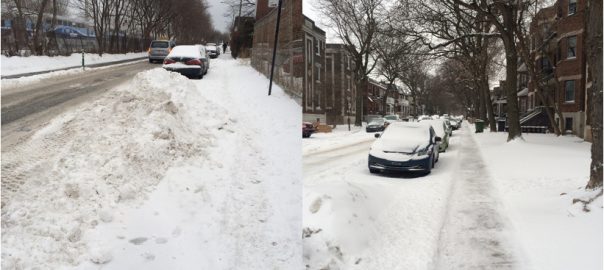 The Winter City: Ecologies of Snow, Ice and Cold
The Winter City: Ecologies of Snow, Ice and Cold
Laura Shillington, Montreal
But it was all The Fear of Snow —Leonard Cohen, The Best The city in winter invokes diverse imaginaries—from romantic, beautiful, and magical to cold, dark, dirty, and hazardous. A quick Google search reproduces the first three imaginaries: romantic, beautiful, and magical (Figure 1). Yet winter is often depicted as...
2 Comment(s)Join our Conversation
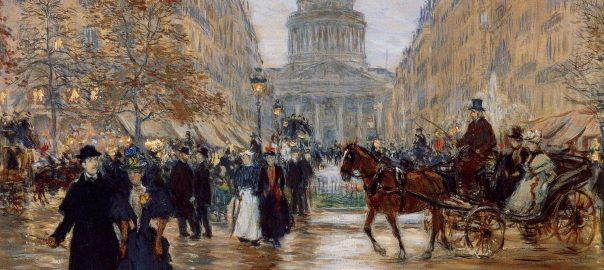 French Landscape Painters and the Nature of Paris
French Landscape Painters and the Nature of Paris
Patrick M. Lydon, Daejeon
A review of Masterpieces of French Landscape Paintings from the Pushkin State Museum of Fine Arts Moscow, an exhibition at the National Museum of Fine Art in Osaka, Japan. If we learn anything from an exhibition such as “Masterpieces of French Landscape Paintings”, it might be that French landscape painters have...
0 Comment(s)Join our Conversation
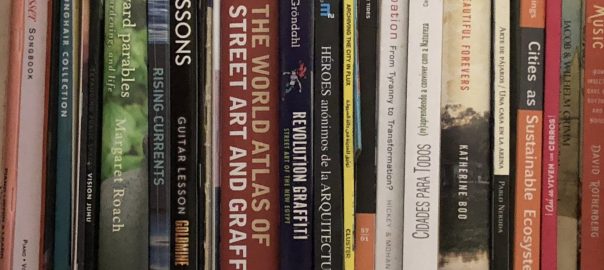 What did you read in 2018 that moved you?
What did you read in 2018 that moved you?
Isabelle Michele Sophie Anguelovski, Barcelona Marc Barra, Paris Katie Coyne, Austin Samarth Das, Mumbai Marcelo Lopes de Souza, Rio de Janeiro Artur Jerzy Filip, Warsaw Claudia Luna Fuentes, Saltillo Russell Galt, Edinburgh Ursula Heise, Los Angeles Toby Kent, Melbourne Patrick M. Lydon, Daejeon Pascal Mittermaier, Boston Steward Pickett, Poughkeepsie Huda Shaka, Dubai David Simon, London Jay Valgora, New York Chantal van Ham, Brussels
0 Comment(s)
Join our Conversation
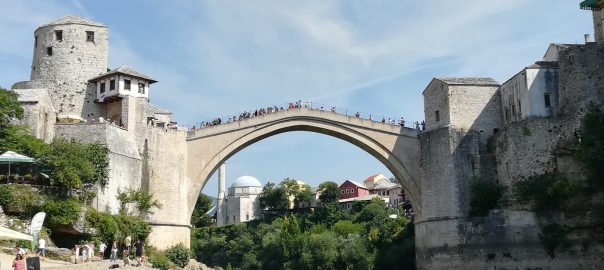 Rebuilding Bosnia and Herzegovina Cities
Rebuilding Bosnia and Herzegovina Cities
Jennifer Baljko, Barcelona
There is a sadness in Bosnia and Herzegovina that will follow me for a long time. Of all the wonders and troubles we have witnessed during our walk through Asia and Europe, the visible signs of this country’s post-war hardships break my heart the most in this multi-year journey. Our...
0 Comment(s)Join our Conversation
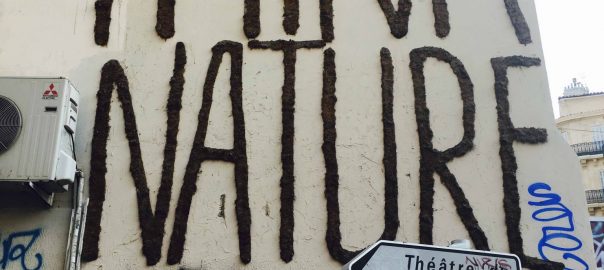 Many Small Changes Cascade into Big Change
Many Small Changes Cascade into Big Change
Leen Gorissen, Antwerp
How can cities accelerate transitions to sustainability? That was the central question in the collaborative EU-funded research project called ARTS, in which researchers, policy makers, citizens, artists, and entrepreneurs co-reflected on pathways to fast-forward urban sustainability. Upon the request of many urban changemakers, we translated the academic findings into an...
1 Comment(s)Join our Conversation
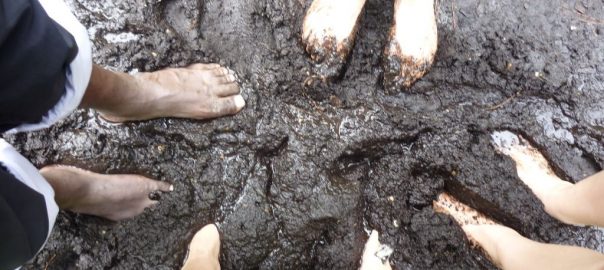 The Planet’s Gift to Humans: Soil Uncovered
The Planet’s Gift to Humans: Soil Uncovered
Chantal van Ham, Brussels
Soil is a unique living ecosystem that provides a wide range of services to people. It is the foundation of life on the planet, home to biodiversity, it regulates the water cycle, stores and filters water, is the basis for producing food and fuel, it facilitates the natural recycling of...
0 Comment(s)Join our Conversation
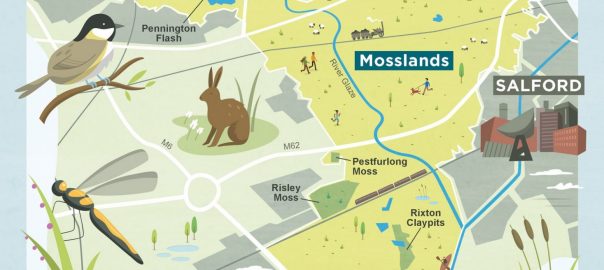 Nature Rebounding in the Peri-Urban Landscapes that the Industrial Revolution Left Behind: North West England’s Carbon Landscape
Nature Rebounding in the Peri-Urban Landscapes that the Industrial Revolution Left Behind: North West England’s Carbon Landscape
Janice Astbury, Buenos Aires Joanne Tippett, Manchester
Less than an hour cycling out of central Manchester along the Bridgewater Canal takes you into a green and blue landscape. It only becomes clear that this is a post-industrial area when the infrastructure of a coalfield pithead rises up behind the trees. Further along the canal you encounter attractive...
0 Comment(s)Join our Conversation
 Highlights from The Nature of Cities in 2018
Highlights from The Nature of Cities in 2018
David Maddox, New York
Today’s post celebrates some of the highlights from TNOC writing in 2018. These contributions—originating around the world—were one or more of widely read, offering novel points of view, and/or somehow disruptive in a useful way. All 1000+ TNOC essays and roundtables are worthwhile reads, of course, but what follows will give you a...
0 Comment(s)Join our Conversation
 Renaturing Malta through Collaborations for Nature-based Solutions
Renaturing Malta through Collaborations for Nature-based Solutions
Mario Balzan, Valletta
With an area of just 316 Km2and a population of more than 475,000, Malta is the smallest member country of the European Union (EU). This island state has been moulded through human action since the first recorded human settlement more than 7000 years ago. Today, more than 30 percent of...
0 Comment(s)Join our Conversation
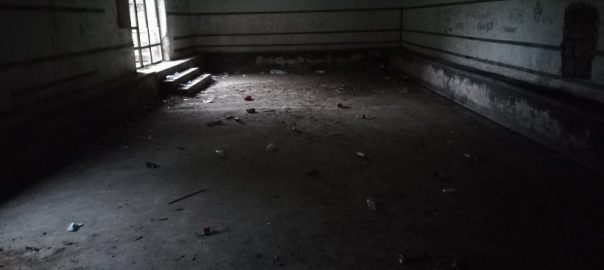 Signs of Depressed Urban Economies
Signs of Depressed Urban Economies
Jennifer Baljko, Barcelona
It has been raining all afternoon in Megali Sterna, a village in the north of Greece, and, from the empty and closed café we have been sitting in for hours, it looks like the rain will continue into the evening. We scan the neighborhood for a dry place to pitch...
0 Comment(s)Join our Conversation
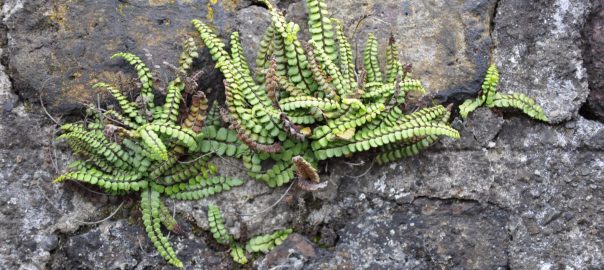 Our goal is to empower cities to plan for a positive natural future. What is one specific action that should be taken to achieve this goal?
Our goal is to empower cities to plan for a positive natural future. What is one specific action that should be taken to achieve this goal?
Graciela Arosemena, Panama City Marcus Collier, Dublin Marlies Craig, Durban Samarth Das, Mumbai Ana Faggi, Buenos Aires Sumetee Gajjar, Cape Town Gary Grant, London Eduardo Guerrero, Bogotá Fadi Hamdan, Athens Scott Kellogg, Albany Patrick M. Lydon, Daejeon Yvonne Lynch, Riyadh Emily Maxwell, New York Colin Meurk, Christchurch Ragene Palma, London Jennifer Rae Pierce, Vancouver Mary Rowe, Toronto Luis Sandoval, San José
7 Comment(s)
Join our Conversation
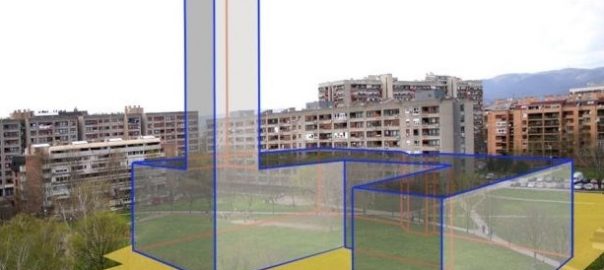 Legacy as Visioning Tool: Urban Greening in Zagreb
Legacy as Visioning Tool: Urban Greening in Zagreb
Neven Tandaric, Nottingham Chris Ives, Nottingham
When we consider planning for green infrastructure, we typically think forward to what kind of city we might imagine for the future. Far less frequently do we consider the history of the city and how past generations have shaped the green spaces and the activities and meanings related to them....
2 Comment(s)Join our Conversation
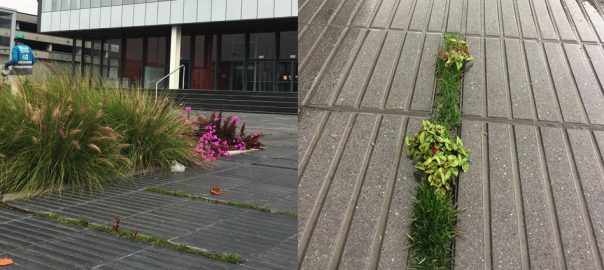 As a landscape architect, how do you interpret the word “biodiversity”? How does this meaning find expression in your design?
As a landscape architect, how do you interpret the word “biodiversity”? How does this meaning find expression in your design?
Gloria Aponte, Medellín AnaLuisa Artesi, Buenos Aires Andrew Grant, Bath Yun Hye HWANG, Singapore Maria E Ignatieva, Perth Jason King, Portland Victoria Marshall, Singapore Daniel Phillips, Lubbock Mohan Rao, Bangalore Sylvie Salles, Paris Kevin Sloan, Dallas-Fort Worth Diana Wiesner, Bogota
9 Comment(s)
Join our Conversation
 A Picture We Wished was Worth 1000 Words, But in Fact Only a Few
A Picture We Wished was Worth 1000 Words, But in Fact Only a Few
Hita Unnikrishnan, Warwick Harini Nagendra, Bangalore
Sustainable cities can be viewed from multiple perspectives. Each perspective can highlight or mute certain aspects, leading us to take different positions on complex issues. Take for example the recent floods in Kerala, the southernmost state of India. Unprecedented rainfall led to intense floods across the state. Over 400 people...
5 Comment(s)Join our Conversation
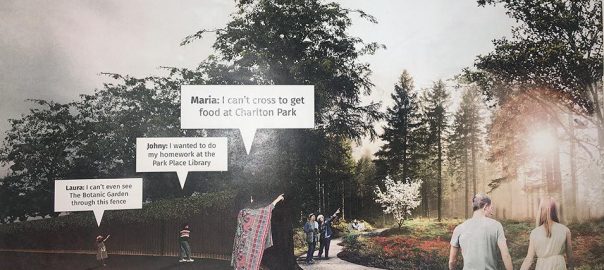 How Greening Strategies Are Displacing Minorities in Post-Harvey Houston
How Greening Strategies Are Displacing Minorities in Post-Harvey Houston
Isabelle Michele Sophie Anguelovski, Barcelona
On 14 June 2018, Isabelle Anguelovski participated in the panel Designing, Planning and Paying for Resilience at Rice University Kinder Institute for Urban Research, where she and other leading experts discussed flood mitigation strategies such as low impact design, green infrastructure and urban-scale greenspace preservation, and how they interact with a community’s broader planning efforts....
3 Comment(s)Join our Conversation
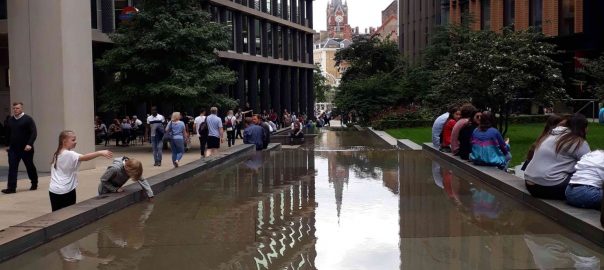 Tales from the London 2018 Heatwave. But Are We Listening?
Tales from the London 2018 Heatwave. But Are We Listening?
Paula Vandergert, London
The 2018 London heatwave lasted weeks! I know we Brits like to talk about the weather—but honestly, it has been really hot—and it’s unheard of to be able to go for weeks without worrying about bringing a cardigan, umbrella, or raincoat when you step outside your door. The parks have...
3 Comment(s)Join our Conversation
 Nature after Nature and the Animal Internet
Nature after Nature and the Animal Internet
Rob Pirani, New York
A review of the book Animal Internet: Nature and the Digital Revolution by Alexander Pschera (English translation from German by Elisabeth Lauffer). 2016. 209 pages.ISBN: 9781939931351. New Vessel Press. Buy the book. Apply the sunscreen, fill the water bottle, and put the damn phone at the bottom of the pack. My (precious)...
0 Comment(s)Join our Conversation
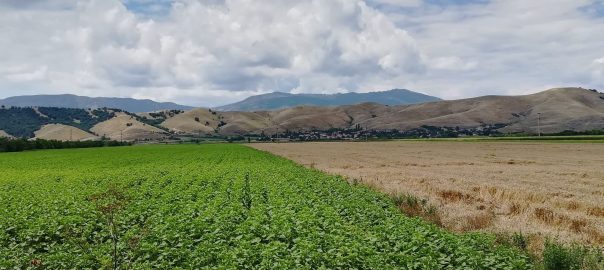 Farmers From the City
Farmers From the City
Jennifer Baljko, Barcelona
It’s a hot June day in rural Greece. We stop in a run-down gas station on a small secondary road cutting through wheat fields on both sides. We wipe the sweat from our brows. The gas station attendant opens the refrigerator and pulls out a crate of cherries. “Take what...
1 Comment(s)Join our Conversation
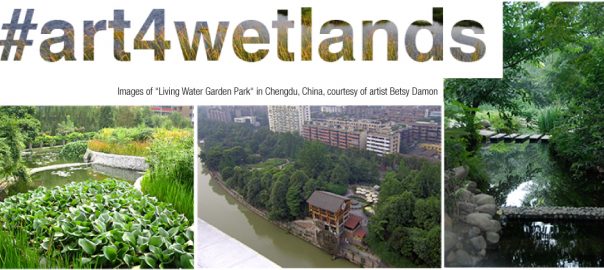 Ramsar COP 13: What can Artists Contribute to Urban Wetland Restoration?
Ramsar COP 13: What can Artists Contribute to Urban Wetland Restoration?
Chris Fremantle, Ayrshire, Scotland
The Ramsar Convention (also known as Convention on Wetlands) is the first of the major intergovernmental convention on biodiversity conservation and wise use. It was signed in 1971, in the City of Ramsar in Iran. This October, the 13th Ramsar Conference of the Parties (COP 13) will take place in...
0 Comment(s)Join our Conversation
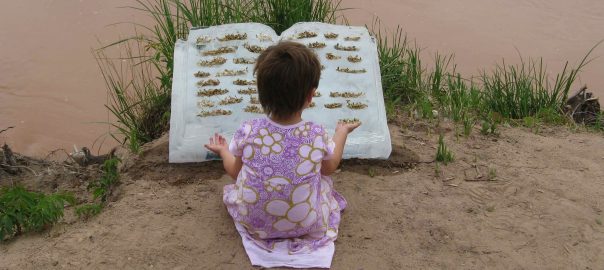 Artists in Conversation with Water in Cities
Artists in Conversation with Water in Cities
Carmen Bouyer, Paris Patrick M. Lydon, Daejeon Antonio José García Cano, Murcia Katrine Claassens, Montreal Claudia Luna Fuentes, Saltillo Nazlı Gürlek, Istanbul & Palo Alto Basia Irland, Albuquerque Robin Lasser, Oakland Mary Mattingly, Brooklyn Marguerite Perret, Topeka Bonnie Sherk, San Francisco Nadia Vadori-Gauthier, Paris Aloïs Yang, Prague
8 Comment(s)
Join our Conversation
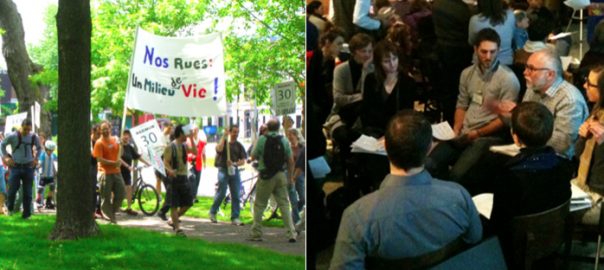 Civic Coproduction = Counterinstitutions + People: Make Participation Work by Focusing on the Possible
Civic Coproduction = Counterinstitutions + People: Make Participation Work by Focusing on the Possible
Nik Luka, Montreal and Uppsala
There is a common refrain in liberal democracies: local government is where participatory action is most likely to happen. Indeed, we often presume that neighbourhoods and towns and cities are privileged—perhaps even natural—spaces for the deliberative coproduction of plans, policies, strategies, and projects for sustainability and the common good. By...
0 Comment(s)Join our Conversation
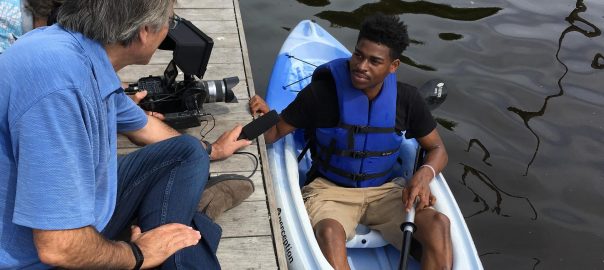 Ocean Cities: The Power of Documentary Filmmaking to Tell Stories About the Nature Around Us
Ocean Cities: The Power of Documentary Filmmaking to Tell Stories About the Nature Around Us
Tim Beatley, Charlottesville
At a recent film screening of our new documentary film Ocean Cities, about connecting cities and marine environments, the panel discussion and questions that followed demonstrated clearly the value of these kinds of films. Some of the comments reflected a sense of being inspired by what other cities were doing...
0 Comment(s)Join our Conversation
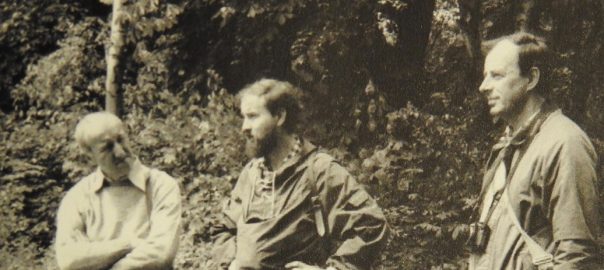 George Barker 1940-2018: A Tribute
George Barker 1940-2018: A Tribute
David Goode, Bath
George Barker, who died on 1 May 2018, will be remembered fondly by all who worked with him. He was a modest man, always full of fun, yet he was one of the most influential figures in the development of urban nature conservation in the UK and was held in...
1 Comment(s)Join our Conversation
 An urban planner and an urban ecologist walk into a bar. They chat about how (and maybe whether) “ecology” could play a bigger role in planning…
An urban planner and an urban ecologist walk into a bar. They chat about how (and maybe whether) “ecology” could play a bigger role in planning…
Will Allen, Chapel Hill Juan Azcarate, Bogotá Amy Chomowicz, Portland Katie Coyne, Austin Georgina Cullman, New York PK Das, Mumbai David Goode, Bath Mark Hostetler, Gainesville Elsa Limasset, Orléans Ragene Palma, London Diane Pataki, Salt Lake City Gil Penha-Lopes, Lisbon Lauren Smalls-Mantey, New York
15 Comment(s)
Join our Conversation
 New Integrated and Actionable Urban Knowledge for the Cities We Want and Need
New Integrated and Actionable Urban Knowledge for the Cities We Want and Need
Thomas Elmqvist, Stockholm Xuemei Bai, Canberra Niki Frantzeskaki, Utrecht Corrie Griffith, Tempe David Maddox, New York Timon McPhearson, New York Sue Parnell, Cape Town Paty Romero-Lankao, Boulder David Simon, London Mark Watkins, Phoenix
A preview of the book, Urban Planet: Knowledge Towards Sustainable Cities. 2018. Editors: Thomas Elmqvist, Xuemei Bai, Niki Frantzeskaki, Corrie Griffith, David Maddox, Timon McPhearson, Susan Parnell, Patricia Romero-Lankao, David Simon, Mark Watkins. Cambridge University Press. Available as an open source download here, or purchase as a physical book. We are living on an...
0 Comment(s)Join our Conversation
 Tracking Resilience Trade-offs: Let’s Build a Crowdsourced Global Database
Tracking Resilience Trade-offs: Let’s Build a Crowdsourced Global Database
Lorenzo Chelleri, Barcelona Sara Meerow, Tempe
In recent years, city plans, international organizations, private foundations, and policy discourse more broadly have presented resilience as a necessary characteristic for communities to cope with natural hazards and climate change. Numerous cities around the world are now developing resilience strategies or implementing policies with the stated aim of becoming more resilient. Resilience...
0 Comment(s)Join our Conversation
 Trees are Breath
Trees are Breath
Andreas Weber, Berlin
In the last days, with the air finally above the freezing point, and the grey silhouettes of the barren twigs dripping with fine silvery moisture against the faint morning light, I have been drawn into the forest. Every morning, I unlocked the chain securing my bike to a low metal...
4 Comment(s)Join our Conversation
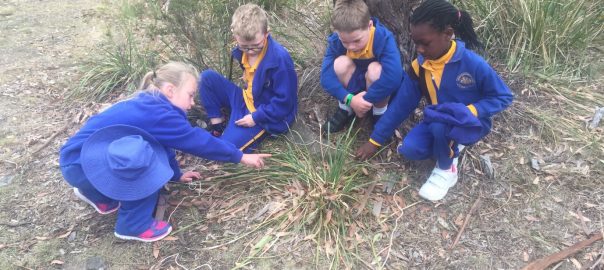 A Sense of Wonder: The Missing Ingredient to a Long-Term Value for Nature?
A Sense of Wonder: The Missing Ingredient to a Long-Term Value for Nature?
Bronwyn Cumbo, Sydney Marthe Derkzen, Arnhem/Nijmegen
“For the child….it is not half as important to know as to feel. If facts are the seeds that later produce knowledge and wisdom, then the emotions and the impressions of the senses are the fertile soil in which the seeds must grow.” —Rachel Carson, 1965, p.58. The natural world...
2 Comment(s)Join our Conversation
 The Sheffield Street Tree Massacre: Notes from a Public-Private Partnership Gone Wrong
The Sheffield Street Tree Massacre: Notes from a Public-Private Partnership Gone Wrong
Christine Thuring, Vancouver
Often described as Europe’s greenest city, Sheffield is reputed to have more trees per capita than any other, with over 100,000 trees spread across parks and open spaces, 10.4 percent woodland by area, and approximately 36,000 street trees. However, a public-private partnership (P3) is dramatically altering Sheffield’s urban forest. The various particulars of the...
16 Comment(s)Join our Conversation
 Smart cities are coming. Can they be as much about nature, health, and wellbeing as traffic flows, crime detection, and evermore efficient provision of utilities?
Smart cities are coming. Can they be as much about nature, health, and wellbeing as traffic flows, crime detection, and evermore efficient provision of utilities?
Helga Fassbinder, Amsterdam-Vienna Gary Grant, London Pratik Mishra, London Seema Mundoli, Bangalore Harini Nagendra, Bangalore Vishal Narain, Gurugram Eric Sanderson, New York Huda Shaka, Dubai Shaleen Singhal, New Delhi
6 Comment(s)
Join our Conversation
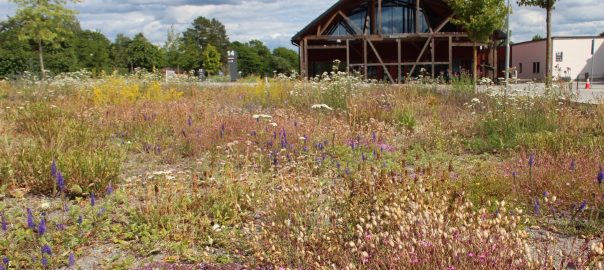 Searching for Sustainable Lawns in Sweden
Searching for Sustainable Lawns in Sweden
Maria E Ignatieva, Perth
The manual Lawn Alternatives in Sweden. From Theory to Practice shared the results of the transdisciplinary project “Lawn as ecological and cultural phenomenon: Searching for sustainable lawns in Sweden” (2013-2016, funded by FORMAS) and suggested practical implementation—guidelines for possible alternatives to existing contemporary lawns in Sweden. This essay excerpts some...
3 Comment(s)Join our Conversation
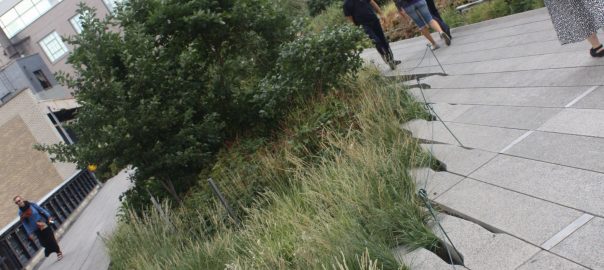 What is one thing every ecologist should know about urban ecology?
What is one thing every ecologist should know about urban ecology?
Pippin Anderson, Cape Town Erik Andersson, Stockholm Marc Barra, Paris Nathalie Blanc, Paris Marcus Collier, Dublin Paul Downton, Melbourne Ana Faggi, Buenos Aires Niki Frantzeskaki, Utrecht Dagmar Haase, Berlin Steven Handel, New Brunswick Nadja Kabisch, Hannover Timon McPhearson, New York Harini Nagendra, Bangalore Steward Pickett, Poughkeepsie Philip Silva, New York Mike Wells, Bath Weiqi Zhou, Beijing
16 Comment(s)
Join our Conversation
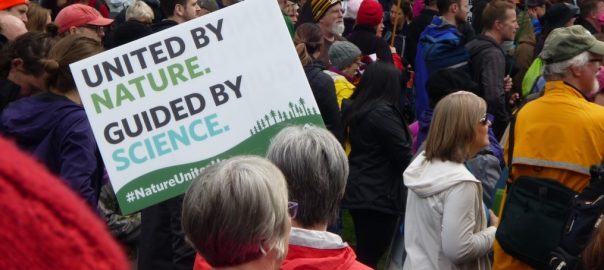 In the Spirit of Nature, Everything is Connected
In the Spirit of Nature, Everything is Connected
Chantal van Ham, Brussels
Earth’s ecosystems have evolved for millions of years, resulting in diverse and complex biological communities living in balance with their environment (WWF Living Planet Report, 2016). Since the 16th century, human activity has impacted nature in practically every part of the world, wild plants and animals are at risk of...
3 Comment(s)Join our Conversation
 Blandscaping that Erases Local Ecological Diversity
Blandscaping that Erases Local Ecological Diversity
Stuart Connop, London Caroline Nash, London
Ecological gentrification (Dooling, 2009) is a negative social process in which ecological improvements to neighbourhoods lead to gentrification and displacement of the neighbourhood’s original inhabitants. There is an analogous process of ecological gentrification at the level of ecological communities: many vulnerable ecological communities that persist (and in some cases, thrive)...
1 Comment(s)Join our Conversation
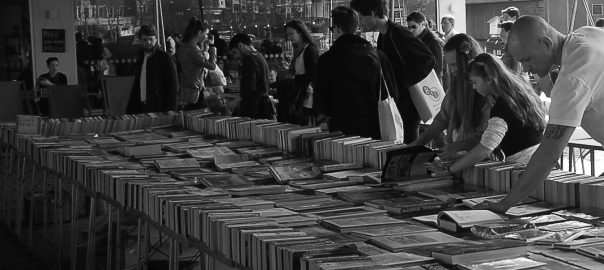 Read This! For Every Continent, Must-Read and Continent-Specific Books About Cities
Read This! For Every Continent, Must-Read and Continent-Specific Books About Cities
David Maddox, New York
AFRICA ASIA AUSTRALIA and NEW ZEALAND EUROPE LATIN AMERICA NORTH AMERICA (not including Mexico)
3 Comment(s)Join our Conversation
 Can Smart Cities be Smart Green Cities? We’ll See
Can Smart Cities be Smart Green Cities? We’ll See
Gary Grant, London
As yet, there are no smart cities. I read of plenty of people and organisations working hard to create them. However, so far, we have had initiatives, policies, strategies, and some projects, but no examples of cities where it all comes together in a genuinely city-wide way. In addition, most...
4 Comment(s)Join our Conversation
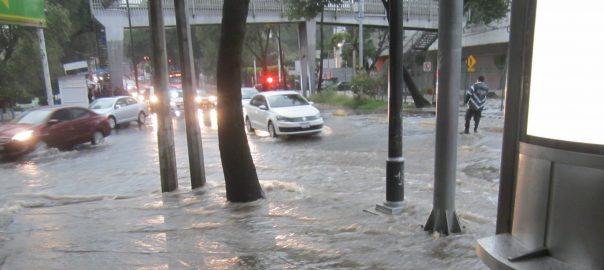 Thinking Like a Lake in Mexico City
Thinking Like a Lake in Mexico City
Janice Astbury, Buenos Aires
A satirical video circulated this past summer announcing Mexico City as the country’s newest and most exciting water park, featuring waterfalls in the metro and an airport runway turned waterway.[1] I thought they might have included the geyser spouting out of a drain that I saw next to the sign...
1 Comment(s)Join our Conversation
 Let go of some urban domestication: How would you convince the mayor to re-wild the city?
Let go of some urban domestication: How would you convince the mayor to re-wild the city?
Juan Azcarate, Bogotá Keith Bowers, Charleston Katrine Claassens, Montreal Don Dearborn, Lewiston Ian Douglas, Manchester Ana Faggi, Buenos Aires Lincoln Garland, Bath Amy Hahs, Ballarat Mark Hostetler, Gainesville Keitaro Ito, Fukutsu City Louise Lezy-Bruno, Paris Jala Makhzoumi, Beirut Juliana Montoya, Bogota Daniel Phillips, Lubbock Mohan Rao, Bangalore Kevin Sloan, Dallas-Fort Worth Kati Vierikko, Helsinki
Juliana Montoya and Juan Azcárate, Bogotá (To read this post in English, see here.) Asilvestrando ciudades: Una perspectiva desde la biodiversidad latinoamericana Analizando la idea de asilvestramiento de las ciudades (re-wilding cities) como espacios que permiten la vida de especies de forma natural y espontánea en lugares diferentes a su...
35 Comment(s)Join our Conversation
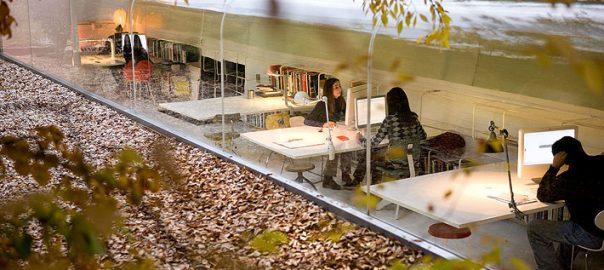 Biophilic Benefits or Bio-baloney? (Probably) the Former
Biophilic Benefits or Bio-baloney? (Probably) the Former
Lincoln Garland, Bath
Regular readers of TNOC will be familiar with the biophilia hypothesis, which supposes an innate emotional link between humans and the natural world that positively impacts our psychological wellbeing. In other words, we feel most at home in naturalistic surroundings, as this is where we evolved and have spent the...
1 Comment(s)Join our Conversation
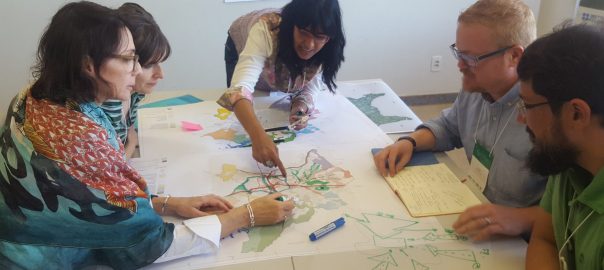 Re-naturing Cities: Theories, Strategies and Methodologies
Re-naturing Cities: Theories, Strategies and Methodologies
Fabiano Lemes de Oliveira, Portsmouth Heather Rumble, Portsmouth Mark Goddard, Newcastle Fabio Angeoletto, Rondonópolis Pedro Britto, Goiânia Silvio Caputo, Portsmouth Stuart Connop, London Karla Emmanuela Ribeiro Hora, Goiânia Caroline Nash, London Braulio Romeiro, Goiânia
There is strong interest in the theme of re-naturing cities, since “naturalizing” cities can help address multiple global societal challenges and generate benefits, such as the enhancement of health and well-being, sustainable urbanisation, the provision of ecosystems and their services, and resilience to climate change. But, what are the theories,...
0 Comment(s)Join our Conversation
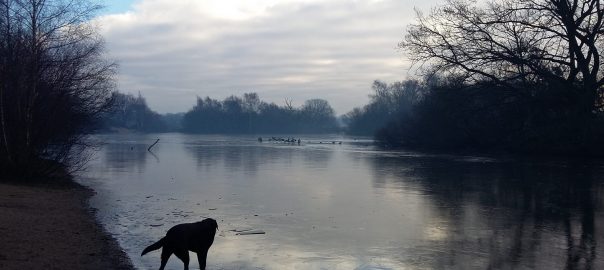 A Hymn to Nature in My City
A Hymn to Nature in My City
Paula Vandergert, London
Warning: What follows is entirely personal and non-scientific. This is a good thing. I live and work in a global city. Here’s my justification for being here. I work on scaling up greening in cities across Europe. My global city—London—has been a leader in urban greening initiatives for many years....
6 Comment(s)Join our Conversation
 Where Did the Rivers Go? The Hidden Waterways beneath London
Where Did the Rivers Go? The Hidden Waterways beneath London
David Goode, Bath
A review of The Lost Rivers of London, by Nicholas Barton and Stephen Myers, 2016. ISBN:1905286511. Historical Publications Ltd . 224 pages. Buy The Lost Rivers of London. …and London’s Lost Rivers, by Paul Talling. ISBN: 184794597X. Random House UK. 192 pages. Buy London’s Lost Rivers. The Lost Rivers of London by Nicholas Barton...
1 Comment(s)Join our Conversation
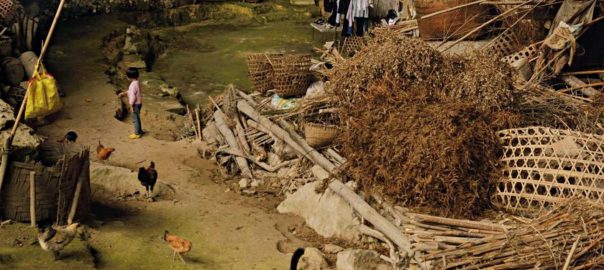 Past and Future? Living and Growing Food Underground
Past and Future? Living and Growing Food Underground
Francois Mancebo, Paris
In previous TNOC posts I wrote about two apparently different topics: urban agriculture and living underground. Let’s combine them now into a new urban object: Farming underground. You may very well think that I am playing smart-aleck here, and that this paper is just a piece of bravura, since farming...
2 Comment(s)Join our Conversation
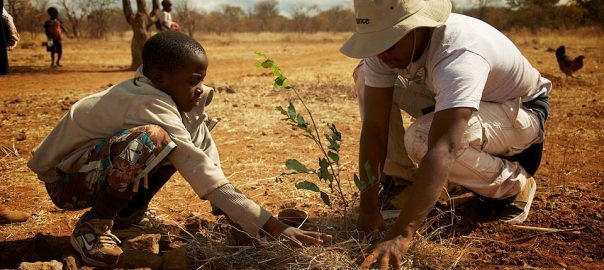 Ecosystems for everyone: Who should have access to the myriad benefits of ecosystem services and urban nature? Everyone. Does everyone? No. How will we achieve this moral imperative?
Ecosystems for everyone: Who should have access to the myriad benefits of ecosystem services and urban nature? Everyone. Does everyone? No. How will we achieve this moral imperative?
Isabelle Michele Sophie Anguelovski, Barcelona Georgina Avlonitis, Cape Town Julie Bargmann, Charlottesville Nathalie Blanc, Paris PK Das, Mumbai Marthe Derkzen, Arnhem/Nijmegen Maggie Scott Greenfield, New York Fadi Hamdan, Athens Nadja Kabisch, Hannover Jim Labbe, Portland Francois Mancebo, Paris Harini Nagendra, Bangalore Flaminia Paddeu, Paris Steward Pickett, Poughkeepsie Andrew Rudd, New York City Suraya Scheba, Cape Town Marcelo Lopes de Souza, Rio de Janeiro Hita Unnikrishnan, Warwick Diana Wiesner, Bogota Pengfei XIE, Beijing
9 Comment(s)
Join our Conversation
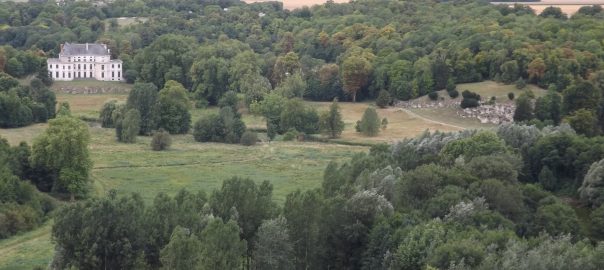 Thinking About the Concept of “Cultural Nature” while Walking the Gardens of Méréville
Thinking About the Concept of “Cultural Nature” while Walking the Gardens of Méréville
Louise Lezy-Bruno, Paris
The first time I visited the Méréville Estate and its Anglo-Chinese garden, created south of Paris at the end of the 18th century, I was struck by the interlinking of nature and culture in this amazing place. This National Heritage Site is the work of the Marquis de Laborde, who...
0 Comment(s)Join our Conversation
 Urban Farming for Everyone / La Agricultura Urbana para Todos
Urban Farming for Everyone / La Agricultura Urbana para Todos
Francois Mancebo, Paris
A review of: Agricultura Urbana – Espacios de Cultivo para una Ciudad Sostenibles / Urban Agriculture – Spaces of Cultivation for a Sustainable City by Graciela Arosemena. 2012. 128 pages. ISBN: 9788425224232. Buy the book. Urbanization has gone hand-in-hand with agriculture from the beginning. Even in medieval times, when walls and defensive structures left...
0 Comment(s)Join our Conversation
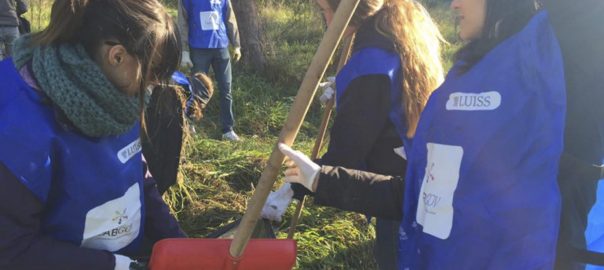 Ostrom in the City: Design Principles for the Urban Commons
Ostrom in the City: Design Principles for the Urban Commons
Sheila Foster, Washington, DC Christian Iaione, Rome
Elinor Ostrom’s groundbreaking research established that it is possible to collaboratively manage common pool resources, or commons, for economic and environmental sustainability. She identified the conditions or principles which increase the likelihood of long-term, collective governance of shared resources. Although these principles have been widely studied and applied to a...
3 Comment(s)Join our Conversation
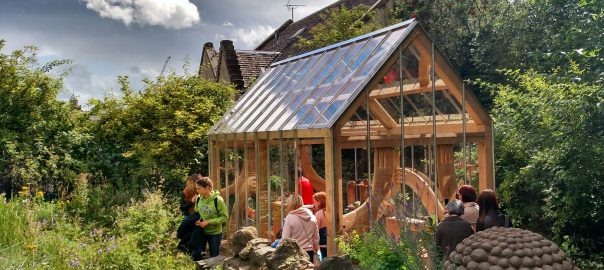 Patrick Geddes’ 19th Century “Pocket Park” Inspires Art Installation
Patrick Geddes’ 19th Century “Pocket Park” Inspires Art Installation
Allison Palenske, Edinburgh
A review of “Palm House”, a commissioned project on view at the Edinburgh Art Festival until 27 August 2017. The year is 1880; the place is Edinburgh, Scotland. Edinburgh’s Old Town is internationally known for its squalid conditions; its tenement slums plagued by poor sanitation and overcrowded housing. The medieval...
0 Comment(s)Join our Conversation
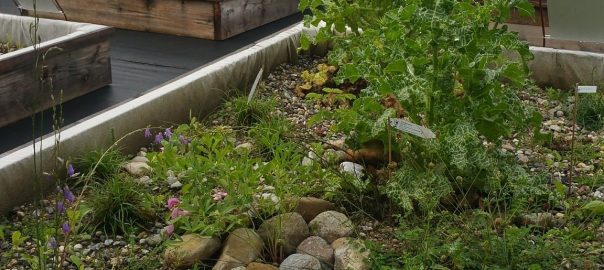 Swiss Green Roof Standards: Experiences and Exchanges from Three Years of Practice
Swiss Green Roof Standards: Experiences and Exchanges from Three Years of Practice
Nathalie Baumann, Zurich
Some weeks ago my colleagues (from the University of Applied Sciences in Geneva and the City of Lausanne, Nature and City Department) and I organized a half-day event: an exchange of experiences on the Swiss green roof standards practice with the Swiss Society of Engineers and Architects (SIA) in Lausanne....
2 Comment(s)Join our Conversation
 The Smart (Cyborg) City Needs Smarter Ecological Resilience Thinking
The Smart (Cyborg) City Needs Smarter Ecological Resilience Thinking
Stephan Barthel, Stockholm Johan Colding, Stockholm
Recently, Colding and Barthel (2017) critiqued how the Smart City-model is taken more or less as a given good for creating sustainable cities. This view is deeply rooted in seductive visions of the future, where the digital revolution stands as the primary force for change (for a critical perspective, see...
0 Comment(s)Join our Conversation
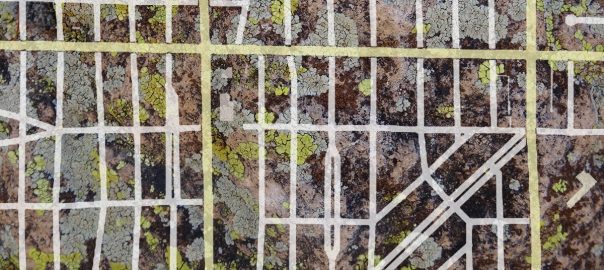 Are cities ecosystems—analogous to natural ones—of nature, infrastructure and people? Does thinking about cities in this way help us think about urban design?
Are cities ecosystems—analogous to natural ones—of nature, infrastructure and people? Does thinking about cities in this way help us think about urban design?
Marina Alberti, Seattle Erik Andersson, Stockholm Sarah Dooling, Austin/Boston Paul Downton, Melbourne Thomas Elmqvist, Stockholm Nancy Grimm, Phoenix Dagmar Haase, Berlin Dominique Hes, Melbourne Kristina Hill, Berkeley Madhusudan Katti, Raleigh Francois Mancebo, Paris Clifford Ochs, Oxford Steward Pickett, Poughkeepsie Stephanie Pincetl, Los Angeles Rob Pirani, New York Richard Register, Berkeley Eric Sanderson, New York Alexis Schaffler, Berkeley/Johannesburg/Cape Town Vivek Shandas, Portland David Simon, London Jane Toner, Melbourne Yolanda van Heezik, Dunedin Ken Yeang, Kuala Lumpur David Maddox, New York
16 Comment(s)
Join our Conversation
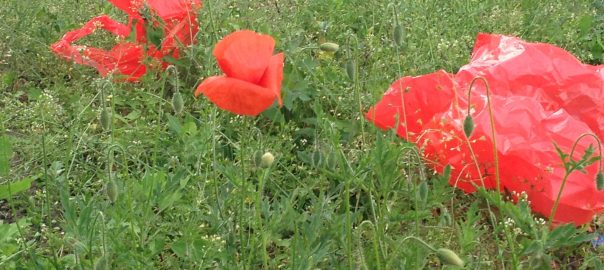 Time of the Poppies
Time of the Poppies
Andreas Weber, Berlin
“Do you seek the highest, the greatest? The plant can teach you to do so. What it is without will of its own, that you should be with intent – that’s the point!” —Friedrich Schiller Some days ago, after giving a lecture in a west German city, I arrived back...
4 Comment(s)Join our Conversation
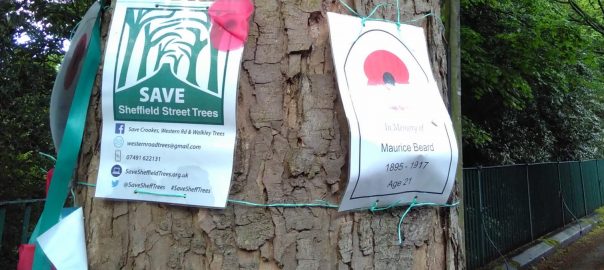 Trees Are More than Just Trees: the Good, the Bad, and the Ugly
Trees Are More than Just Trees: the Good, the Bad, and the Ugly
Christine Thuring, Vancouver
Most of us know how “good” trees are for the urban environment, and for the planet overall. Whether you’re a human, an insect, a fungus, a bat, a bird, a four-legged omnivore, or an amphibian, we all love trees. Trees are symbols of health, vitality, and goodness. For the greater...
12 Comment(s)Join our Conversation
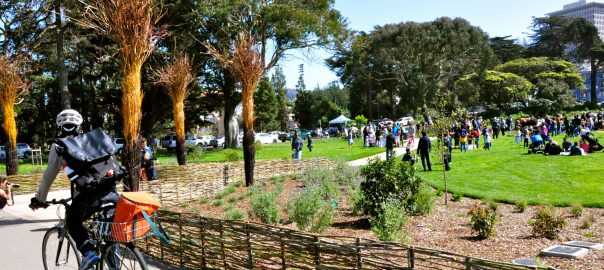 To whom does a city’s nature belong? Is it a common pool resource, or a public good? And who decides?
To whom does a city’s nature belong? Is it a common pool resource, or a public good? And who decides?
Amita Baviskar, Delhi Lindsay Campbell, New York James Connolly, Barcelona Sheila Foster, Washington, DC Phil Ginsburg, San Francisco Jeff Hou, Seattle Marianne Krasny, Ithaca Mary Mattingly, Brooklyn Oona Morrow, Berlin Harini Nagendra, Bangalore Raul Pacheco-Vega, Aguascalientes Michael Sarbanes, Baltimore Philip Silva, New York Diana Wiesner, Bogota
5 Comment(s)
Join our Conversation
 The Nature of Universities and Sustainability
The Nature of Universities and Sustainability
Lorenzo Chelleri, Barcelona Giulia Sonetti, Turin
Through their educational and experimental roles in society, universities can play a unique and vital role in cities’ transitions to sustainability. Although life itself is a learning process and education can happen anywhere, from the streets to virtual places, the temples of educations in our minds were—and still are—schools and...
1 Comment(s)Join our Conversation
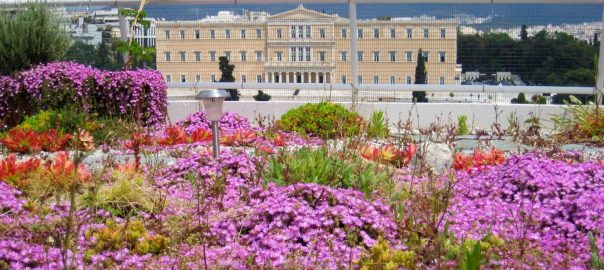 The Models are not Prescriptions—Applying Green Roof Technology in New Places
The Models are not Prescriptions—Applying Green Roof Technology in New Places
Andrew Clements, Corinth
Greek green roofs—Oikosteges, or OS for short—were born when I discovered that the existing conventional Northern and Central European green roofing systems could not be applied to our situation because they had been designed for the climate and building situations in those countries. Greece has many differences. Greece is in...
0 Comment(s)Join our Conversation
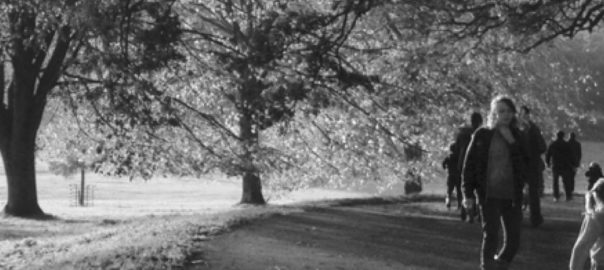 What are we trying to accomplish with biophilic cities? What are ambitious goals and targets, and measures of success?
What are we trying to accomplish with biophilic cities? What are ambitious goals and targets, and measures of success?
Pippin Anderson, Cape Town Tim Beatley, Charlottesville Lena Chan, Singapore Paul Downton, Melbourne Ian Douglas, Manchester Dusty Gedge, London David Goode, Bath Bram Gunther, New York Chris Ives, Nottingham Tania Katzschner, Cape Town Steve Maslin, Bristol Peter Newman, Perth Phil Roös, Geelong Eric Sanderson, New York Jana Söderlund, Perth Fleur Timmer, Bristol Chantal van Ham, Brussels Mike Wells, Bath Ken Yeang, Kuala Lumpur
23 Comment(s)
Join our Conversation
 Are We Truly Connected in Today’s High Frequency World?
Are We Truly Connected in Today’s High Frequency World?
Chantal van Ham, Brussels
In September last year, the IUCN World Conservation Congress—Planet at the Crossroads—brought together in Hawai’i more than 10,000 participants from 180 countries, including top scientists and academics, world leaders and decision makers from governments, civil society, indigenous peoples, and business. It presented a unique opportunity to discuss the unprecedented challenges...
0 Comment(s)Join our Conversation
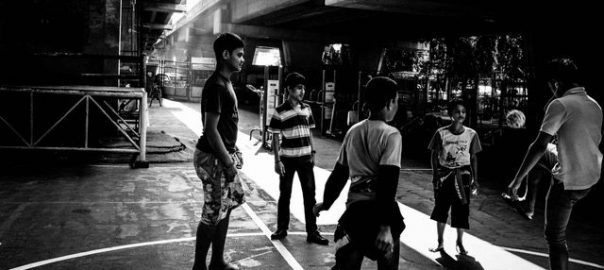 Shaped by Urban History—Reflections on Bangkok
Shaped by Urban History—Reflections on Bangkok
Richard Friend, York
It takes distance to gain a sense of perspective, and so I find myself sitting in a small market town in the north of England looking halfway across the world at my time living in one of the world’s great emerging megacities, Bangkok. From this market town there is a...
0 Comment(s)Join our Conversation
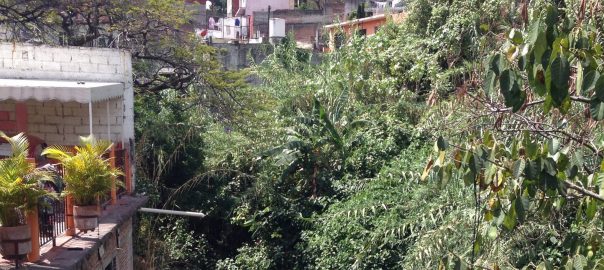 The Barrancas of Cuernavaca: Rescuing Lost Landscapes Hidden by Garbage
The Barrancas of Cuernavaca: Rescuing Lost Landscapes Hidden by Garbage
Janice Astbury, Buenos Aires
The first five people we spoke to in the San Anton neighborhood of the Mexican city of Cuernavaca didn’t know the location of the Salto Chico (small waterfall). The neighborhood’s larger waterfall, referred to as the Salto Grande or Salto San Anton, is known as a place to buy ceramic...
3 Comment(s)Join our Conversation
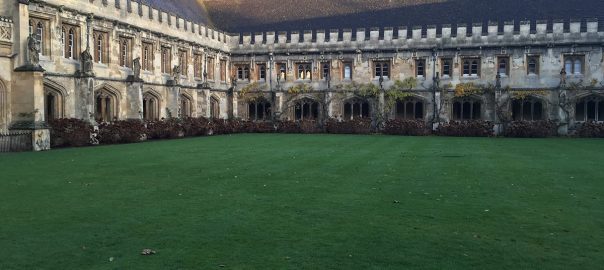 The Nature of Green
The Nature of Green
Gary Grant, London
I was looking at an infographic on Twitter recently. It was in the form of a wheel of words, listing dozens of objectives and issues relating to urban design. Hoping that soil, water, vegetation, habitat, or biodiversity would be featured, I looked for some mention of these terms. I did...
0 Comment(s)Join our Conversation
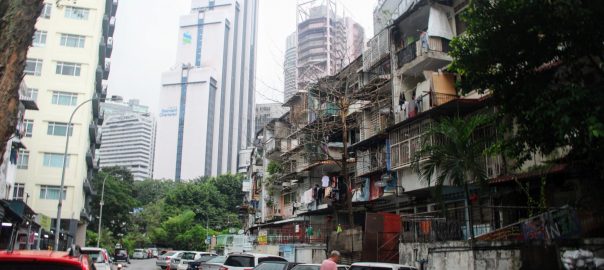 Southeast Asia’s Urban Future: A Snapshot of Kuala Lumpur
Southeast Asia’s Urban Future: A Snapshot of Kuala Lumpur
Chris Ives, Nottingham Alex Lechner, Kuala Lumpur
We found ourselves scrambling along the slippery, vine-entangled slope, ducking under branches and contorting ourselves around fallen trees. The air was hot and thick with humidity, causing us to sweat after just a few minutes on the trail. As we walked, the noise of the busy highway slowly subsided and...
2 Comment(s)Join our Conversation
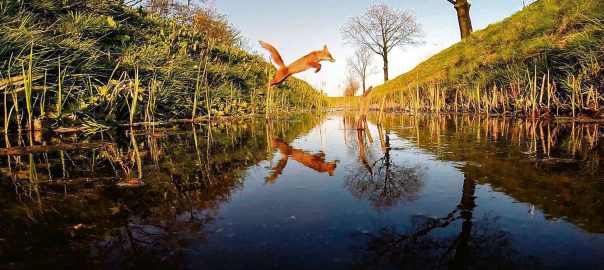 Take a Walk on the Wild Side: Evolution in the Streets
Take a Walk on the Wild Side: Evolution in the Streets
Marthe Derkzen, Arnhem/Nijmegen
I read this article by Menno Schilthuizen, a Dutch evolutionary biologist and ecologist, about the evolution of animal and plant species taking place in cities. In cities, evolution is propelled by two forces: the known laws of ecology AND the social dynamics of human society. The article concludes that we...
1 Comment(s)Join our Conversation
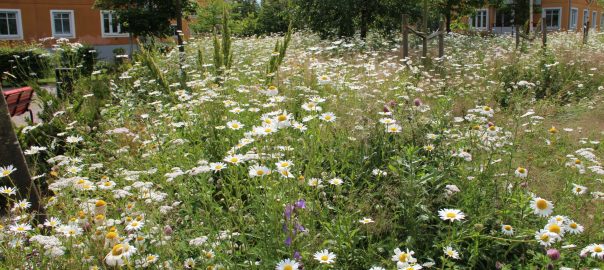 How to Make Urban Green Verdant and Sustainable: Designing “Wild” Swedish Lawns
How to Make Urban Green Verdant and Sustainable: Designing “Wild” Swedish Lawns
Maria E Ignatieva, Perth
Sweden, especially its capital, Stockholm, is a very famous “green” city. Indeed, Stockholm’s green infrastructure wedges system is one of the most recognized and cited around the world because of the significant ecosystem services that it provides and because it acts as a source of natural biodiversity for an urban...
4 Comment(s)Join our Conversation
 You say po-TAY-to. What ecologists and landscape architects don’t get about each other, but ought to.
You say po-TAY-to. What ecologists and landscape architects don’t get about each other, but ought to.
Ana Faggi, Buenos Aires Mark Hostetler, Gainesville Maria E Ignatieva, Perth Amy Hahs, Ballarat Jürgen Breuste, Salzburg Susannah Drake, New York City Marcus Hedblom, Uppsala Andrew Grant, Bath Mike Wells, Bath Steven Handel, New Brunswick Diane Pataki, Salt Lake City Ian MacGregor-Fors, Xalapa Anne Trumble, Los Angeles Christine Thuring, Vancouver Kevin Sloan, Dallas-Fort Worth Gloria Aponte, Medellín Nina-Marie Lister, Toronto Sarah Hinners, Salt Lake City AnaLuisa Artesi, Buenos Aires Jala Makhzoumi, Beirut Jason King, Portland Yun Hye HWANG, Singapore Danielle Dagenais, Montreal Mary Cadenasso, Davis Veronica Fabio, Buenos Aires Peter Werner, Darmstadt
43 Comment(s)
Join our Conversation
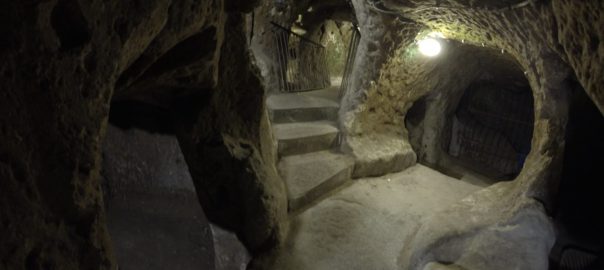 Future Cities Live Underground—And That’s Not a Pile of Schist
Future Cities Live Underground—And That’s Not a Pile of Schist
Francois Mancebo, Paris
Winter is here in the north—not the slightest allusion here to any famous TV series or any recent election, of course. And in the wintertime, life goes underground in a literal sense: tubers and roots reign while most of the aboveground parts of plants are dormant; animals hibernate or at...
3 Comment(s)Join our Conversation
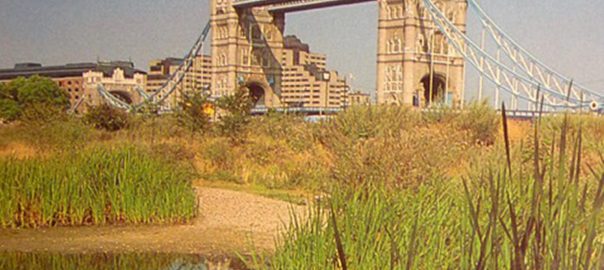 Celebrating the First Ecology Parks in London
Celebrating the First Ecology Parks in London
David Goode, Bath
In November 2016 there was a celebration in London: it had been 40 years since the idea of creating an Ecology Park in central London was first suggested. The event provided opportunities to share memories of those early days and to see how the concept has taken root and proliferated....
9 Comment(s)Join our Conversation
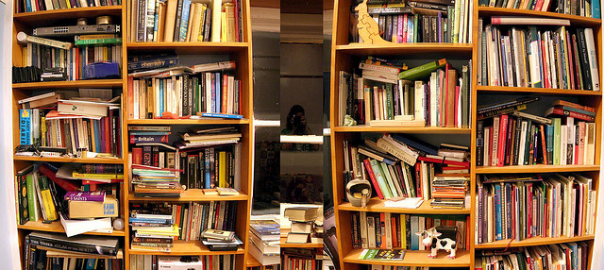 Read this! 90 recommendations for the one book about (or relevant to) cities that everyone should read
Read this! 90 recommendations for the one book about (or relevant to) cities that everyone should read
David Maddox, New York
,
6 Comment(s)Join our Conversation
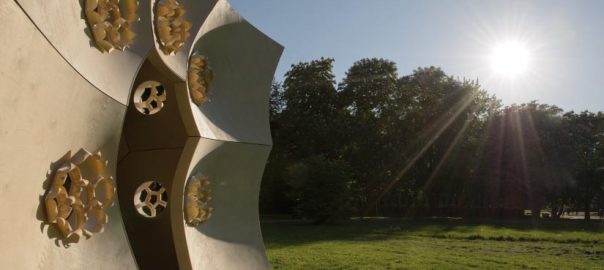 From Biomimicry to Ecomimicry: Reconnecting Cities—and Ourselves—to Earth’s Balances
From Biomimicry to Ecomimicry: Reconnecting Cities—and Ourselves—to Earth’s Balances
Olivier Scheffer, Bordeaux
One reason we should care about biodiversity is that it might be the solution to our environmental impact: after 3.8 billion years on planet Earth, Nature certainly has some sustainability and resilience lessons to teach us—that is, before it gets driven mostly to extinction. Will we care to listen? As...
0 Comment(s)Join our Conversation
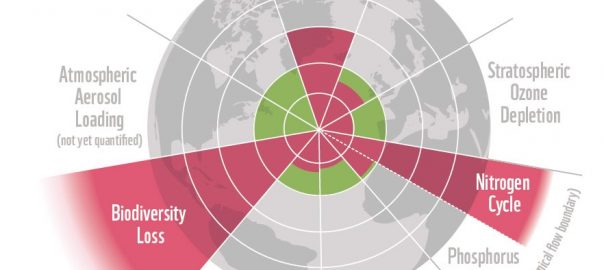 Why Should an Urbanist Care About Biodiversity?
Why Should an Urbanist Care About Biodiversity?
Olivier Scheffer, Bordeaux
Let’s face the facts. Despite laudable international initiatives for climate change mitigation and environmental preservation [i], major changes in Earth’s balances have been set in motion and we’re starting to experience their consequences: heat records; increased droughts; increased wildfire intensity and frequency; melting of landlocked ice; increased sea level and coastal...
2 Comment(s)Join our Conversation
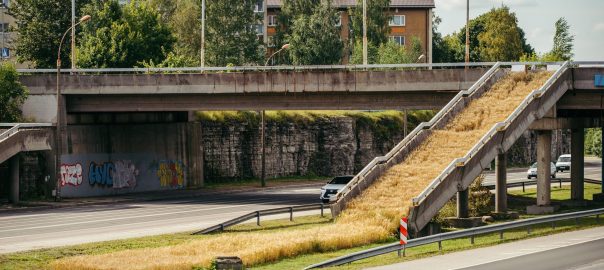 A Barley Field Grows on Soviet Concrete
A Barley Field Grows on Soviet Concrete
Andrea Tamm and Ann Press, Tallinn
In the summer of 2016, the largest Soviet-era residential area of Estonia was living a new life. The district Lasnamäe, including Estonia’s capital city, Tallinn, was built in the late 70s, but it has fallen into stagnation. Little has changed since its inception, and those big plans are still unfinished....
4 Comment(s)Join our Conversation
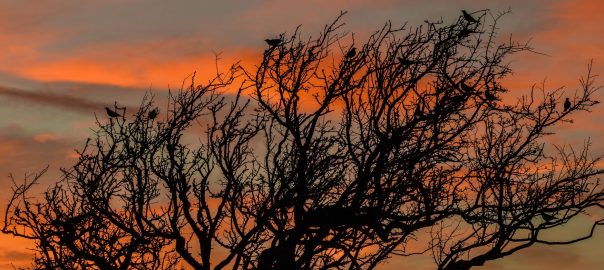 Tim Ingold’s “Sustainability of Everything”
Tim Ingold’s “Sustainability of Everything”
Chris Fremantle, Ayrshire, Scotland
A review of Tim Ingold‘s lecture event “The Sustainability of Everything” at the Centre for Human Ecology, Pearce Institute, Glasgow, Scotland Sustainability is an overused word. It is much diminished by its occurrence in too many documents purporting to suggest that transport, local government or this tea or those coffee...
1 Comment(s)Join our Conversation
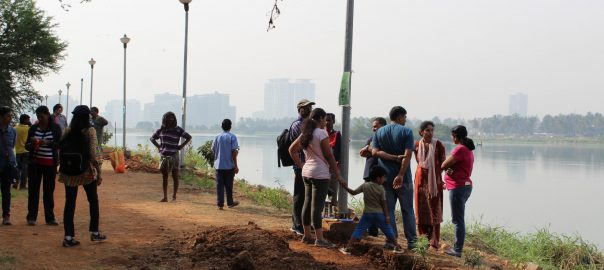 Resilience isn’t only about infrastructure. How can we better support community-based environmental stewardship in readiness, response, and recovery from disturbance?
Resilience isn’t only about infrastructure. How can we better support community-based environmental stewardship in readiness, response, and recovery from disturbance?
Weston Brinkley, Seattle Katerina Elias, São Paulo Sumetee Gajjar, Cape Town Jonathan Halfon, New York City Heather McMillen, Honolulu Luciana Nery, Rio de Janeiro Raul Pacheco-Vega, Aguascalientes Renae Reynolds, New York City Hita Unnikrishnan, Warwick Paula Villagra, Valdivia Karen Zumach, Minneapolis
3 Comment(s)
Join our Conversation
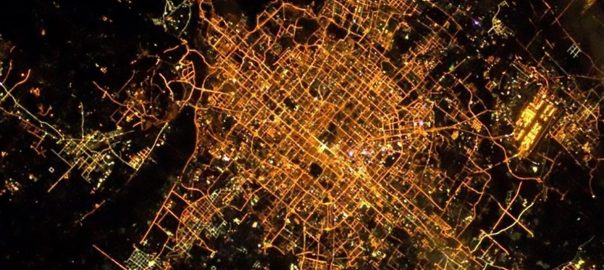 Building Urban Science to Achieve the New Urban Agenda
Building Urban Science to Achieve the New Urban Agenda
Timon McPhearson, New York Sue Parnell, Cape Town David Simon, London Thomas Elmqvist, Stockholm Xuemei Bai, Canberra Owen Gaffney, Stockholm Debra Roberts, Durban Aromar Revi, Bangalore
The New Urban Agenda, being adopted at Habitat III, requires a coherent and legible global urban scientific community to provide expertise to direct and assess progress on urban sustainability transformations. As we have commented in Nature’s special section on Habitat III, the urban research community is currently institutionally marginalized and...
1 Comment(s)Join our Conversation
 Viola Has an Acorn in Her Pocket
Viola Has an Acorn in Her Pocket
Stephan Barthel, Stockholm
I live in Stockholm, Sweden. I enjoy talking walks in the autumn, inhaling the scent from degrading debris, kicking around dead leaves, and gazing at the vivid colors. This fall, my baby daughter has often followed me on my walks. Her name is Viola, and she is 4 years old....
2 Comment(s)Join our Conversation
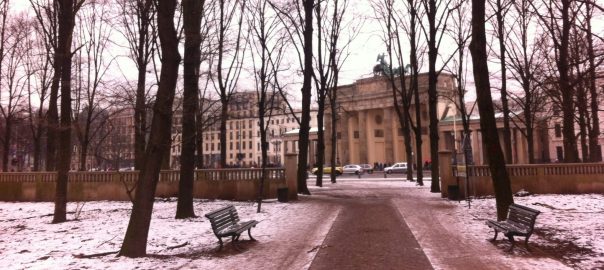 Embedding Urban Ecology into Policy: West Berlin as a Case Study
Embedding Urban Ecology into Policy: West Berlin as a Case Study
Katharine Burgess, Washington, D.C
A review of Greening Berlin: The Co-Production of Science, Politics and Urban Nature. By Jens Lachmund. 2013. MIT Press. ISBN: 9780262018593. 320 pages. Buy the book. The overgrown train tracks of Gleisdreieck Park. The community gardens and art installations of Tempelhofer Feld. The flora and fauna of Südgelände Nature Park....
1 Comment(s)Join our Conversation
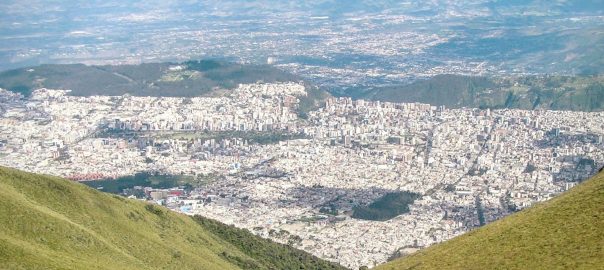 Habitat III is finally a reality. From your perspective, what would be the single most important tangible outcome (not output) of the event—short or long term—and what will it take to achieve this outcome?
Habitat III is finally a reality. From your perspective, what would be the single most important tangible outcome (not output) of the event—short or long term—and what will it take to achieve this outcome?
Yunus Arikan, Bonn Xuemei Bai, Canberra Genie Birch, Philadelphia & New York Maruxa Cardama, Brussels Bharat Dahiya, Bangkok PK Das, Mumbai David Dodman, London William Dunbar, Tokyo Anjali Mahendra, Chapel Hill & New Delhi Jose Puppim, São Paulo David Satterthwaite, London Huda Shaka, Dubai David Simon, London Pengfei XIE, Beijing Lorena Zárate, Ottawa
24 Comment(s)
Join our Conversation
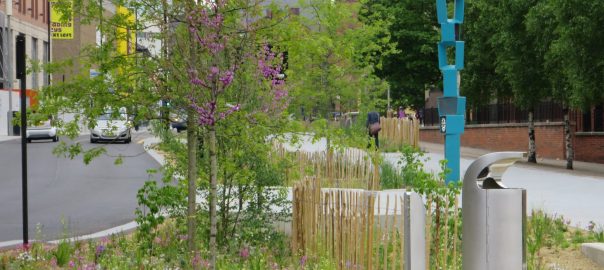 Designing Ecologically Sensitive Green Infrastructure that Serves People and Nature
Designing Ecologically Sensitive Green Infrastructure that Serves People and Nature
Christine Thuring, Vancouver
“Cities separate us from nature, do they not?” —Light, 2003 No, they don’t; or at least they don’t have to. The good news: green infrastructure is expanding and gradually softening a proportion of our planet’s increasingly urban surface. It appears we’re on the right track, as recent years have witnessed...
9 Comment(s)Join our Conversation
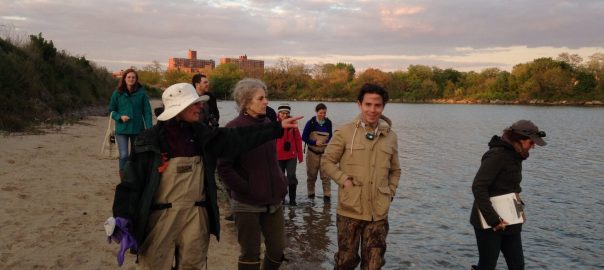 How can we make urban nature and its value more apparent, more “visible” to people?
How can we make urban nature and its value more apparent, more “visible” to people?
Simone Borelli, Rome Sarah Charlop-Powers, New York Marcus Collier, Dublin Sven Eberlein, San Francisco David Goode, Bath Leen Gorissen, Antwerp Cecilia Herzog, Rio de Janeiro Seth Magle, Chicago Polly Moseley, Liverpool Ragene Palma, London Jennifer Sánchez, San José Richard Scott, Liverpool Chantal van Ham, Brussels Gavin Van Horn, Chicago Mark Weckel, New York Mike Wetter, Portland Niki Frantzeskaki, Utrecht Hastings Chikoko, Johannesburg
7 Comment(s)
Join our Conversation
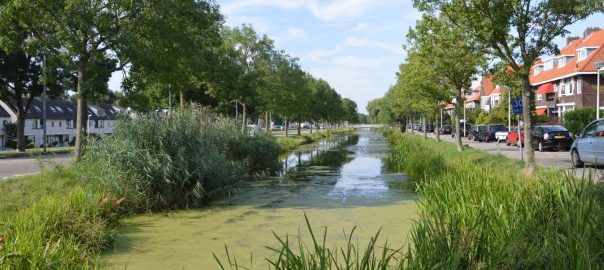 What Do Rotterdammers Want in Green Infrastructure? We Asked Them
What Do Rotterdammers Want in Green Infrastructure? We Asked Them
Marthe Derkzen, Arnhem/Nijmegen
Now that urban greening is increasingly seen as a climate adaptation strategy, the question is how to best provide the necessary green space. Where, at which scale, and what type of greenery? Which design is preferred? And how can municipalities increase public support for green adaptation measures? To find answers...
4 Comment(s)Join our Conversation
 Urban agriculture has many benefits. Is one of them a contribution to urban sustainability?
Urban agriculture has many benefits. Is one of them a contribution to urban sustainability?
Jane Battersby, Cape Town Katrin Bohn, Brighton Christopher Bryant, Montreal Easther Chigumira, Harare Evan Fraser, Guelph Kelly Hodgins, Guelph Patrick Hurley, Collegeville, PA Francois Mancebo, Paris Idah Mbengo, Harare Innisfree McKinnon, Menomonie Leslie McLees, Eugene Geneviève Metson, Vancouver Navin Ramankutty, Vancouver Kristin Reynolds, New York City Esther Sanyé-Mengual, Bologna Shaleen Singhal, New Delhi Kathrin Specht, Müncheberg Naomi Tsur, Jerusalem Andre Viljoen, Brighton Claudia Visoni, São Paulo
16 Comment(s)
Join our Conversation
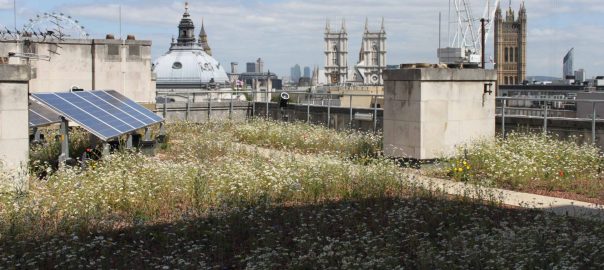 Towards the Water-Sensitive City
Towards the Water-Sensitive City
Gary Grant, London
From the very beginning, with the first urban settlements of Mesopotamia around 4500 BC, cities have required a clean water supply and some form of sanitation. As cities grew in size, the water supply tended to be sourced from further afield, with examples of aqueducts bringing clean water great distances...
0 Comment(s)Join our Conversation
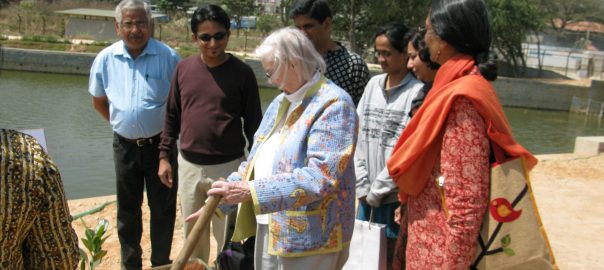 Common threads: connections among the ideas of Jane Jacobs and Elinor Ostrom, and their relevance to urban socio-ecology
Common threads: connections among the ideas of Jane Jacobs and Elinor Ostrom, and their relevance to urban socio-ecology
Paul Downton, Melbourne Johan Enqvist, Cape Town Sheila Foster, Washington, DC Lisa Gansky, San Francisco Mathieu Hélie, Montréal Mark Hostetler, Gainesville Michelle Johnson, New York City Marianne Krasny, Ithaca David Maddox, New York Michael Mehaffy, Portland Harini Nagendra, Bangalore Raul Pacheco-Vega, Aguascalientes Mary Rowe, Toronto Alex Russ, Ithaca Laura Shillington, Montreal Anne Trumble, Los Angeles Arjen Wals, Wageningen Abigail York, Tempe
11 Comment(s)
Join our Conversation
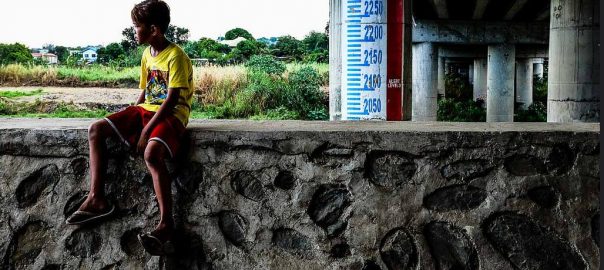 Market-Based Solutions Cannot Forge Transformative and Inclusive Urban Futures
Market-Based Solutions Cannot Forge Transformative and Inclusive Urban Futures
Richard Friend, York
There is an advertisement that is played with great frequency on television in Dhaka, Bangladesh. Even without the language, the imagery is powerful and vivid; the meaning seems unambiguous. In the setting of a sparklingly clean, modern kitchen, a young pregnant woman goes to drink a glass of what appears...
0 Comment(s)Join our Conversation
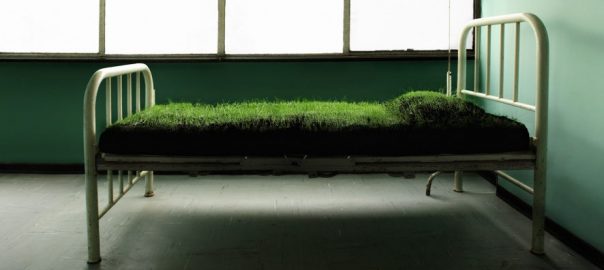 Visions of resilience: Eighteen artists say or show something in response to the word “resilience”
Visions of resilience: Eighteen artists say or show something in response to the word “resilience”
Juan Carlos Arroyo, Bogotá David Brooks, New York City Katrine Claassens, Montreal Emilio Fantin, Milan Ganzeer, Los Angeles Lloyd Godman, Melbourne Fran Ilich, New York City Frida Larios, Antiguo Cuzcatlán, Copán, and Washington Todd Lester, Säo Paulo Patrick M. Lydon, Daejeon Mary Mattingly, Brooklyn David Maddox, New York E. J. McAdams, New York City Mary Miss, New York City Edna Peres, Johannesburg Caroline Robinson, Auckland Finzi Saidi, Pretoria Keijiro Suzuki, Yamaguchi & Nagoya
15 Comment(s)
Join our Conversation
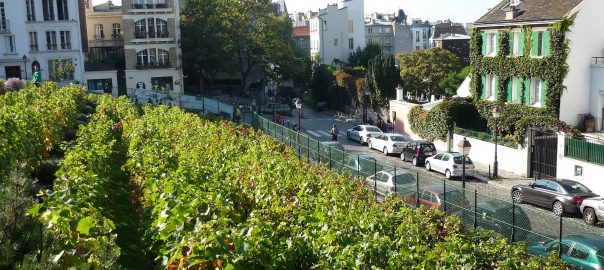 Confronting the Dark Side of Urban Agriculture
Confronting the Dark Side of Urban Agriculture
Francois Mancebo, Paris
How do you like roller coaster rides? I love them—provided that I am sitting in the operator’s cabin and not in one of the small, shaken carts frantically moving up and down. In two of my last posts, The Nurtured Golem: A Nantes Neighborhood Transforms Environmental Bad into Good, and...
10 Comment(s)Join our Conversation
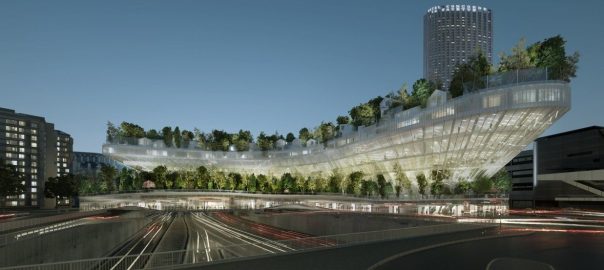 Réinventer Paris: A Competition to Write History with Nature in Paris
Réinventer Paris: A Competition to Write History with Nature in Paris
Nathalie Baumann, Zurich
“Réinventer Paris”, or “Reinventing Paris”, the architectural program initiated by Anne Hildago (the Socialist mayor of the French capital) in autumn 2014 does not lack ambition. When I first heard about it, I was surprised and couldn’t really believe it until spring 2015, when I was convoked by two teams...
1 Comment(s)Join our Conversation
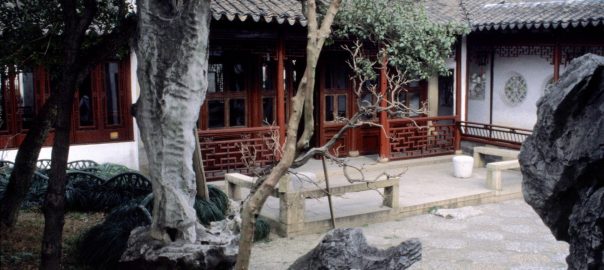 What Can We Learn from Chinese Classical Gardens?
What Can We Learn from Chinese Classical Gardens?
David Goode, Bath
Step off the street in Suzhou through a small door and you leave behind the bustling cacophony of a modern Chinese city to enter a different world of tranquility and calm, where natural features create a sense of being surrounded by nature in a tiny oasis that is a scholar’s...
3 Comment(s)Join our Conversation
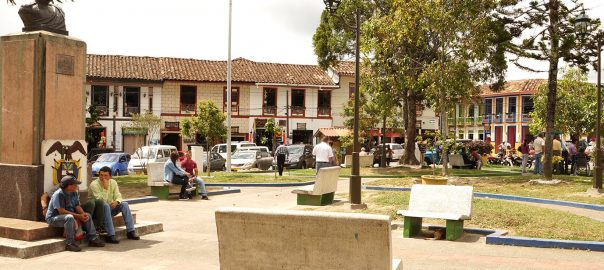 Landscape initiatives are in operation or in development in many parts of the world. What is key to making them work and be useful? How are they good for cities?
Landscape initiatives are in operation or in development in many parts of the world. What is key to making them work and be useful? How are they good for cities?
Steve Brown, Sydney Martha Fajardo, Bogota Carla Gonçalves, Porto, Portugal Monica Luengo, Madrid Claudia Misteli, Barcelona Osvaldo Moreno, Santiago Liana Jansen, Cape Town Laura Spinadel, Vienna Kenneth Taylor, Canberra Menno Welling, Zomba
4 Comment(s)
Join our Conversation
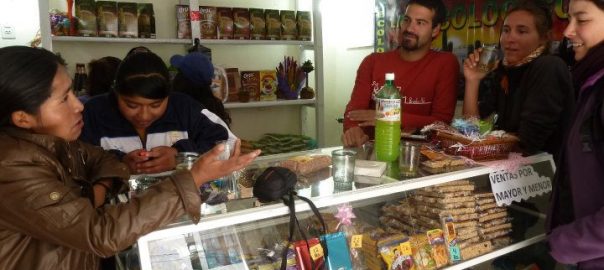 Resilience and the Butterfly Effect: Could a Grain of Quinoa from Bolivia Influence Barcelona City Resilience?
Resilience and the Butterfly Effect: Could a Grain of Quinoa from Bolivia Influence Barcelona City Resilience?
Lorenzo Chelleri, Barcelona
Edward Lorenz’s application of chaos theory to weather forecasting is better known to the general public as “the butterfly effect”, thanks to his conference presentation, “Does the flap of a butterfly’s wings in Brazil set off a tornado in Texas?” Lorenz’s law explains to us that there are unknown and...
0 Comment(s)Join our Conversation
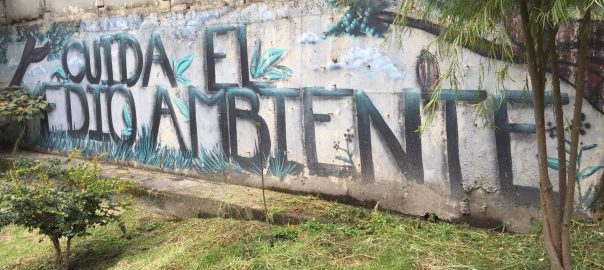 Creative Place-Making—This is The Nature of Graffiti
Creative Place-Making—This is The Nature of Graffiti
David Maddox, New York Pippin Anderson, Cape Town Paul Downton, Melbourne Emilio Fantin, Milan Germán Gomez, Bogotá Julie Goodness, Stockholm Mike Houck, Portland Todd Lester, Säo Paulo Patrick M. Lydon, Daejeon Patrice Milillo, Los Angeles Laura Shillington, Montreal
Nature is all around us. Plants, animals, soil, air and water inhabit and animate our daily lives, whether you live in the country or in the city. We are invigorated by nature. We are inspired by its creatures, their beauty, and their existential meaning. We depend on nature’s services and...
2 Comment(s)Join our Conversation
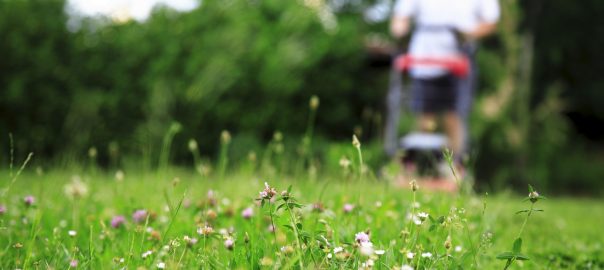 Can cities save bees? How can urban habitats be made to serve pollinator conservation? How can that story be better told?
Can cities save bees? How can urban habitats be made to serve pollinator conservation? How can that story be better told?
Katherine Baldock, Bristol Alison Benjamin, London Sarah Bergmann, Seattle Mark Goddard, Newcastle Damon Hall, St. Louis Tina Harrison, New Brunswick Scott MacIvor, Toronto Denise Mouga, Joinville Matt Shardlow, Peterborough Caragh Threlfall, Melbourne
16 Comment(s)
Join our Conversation
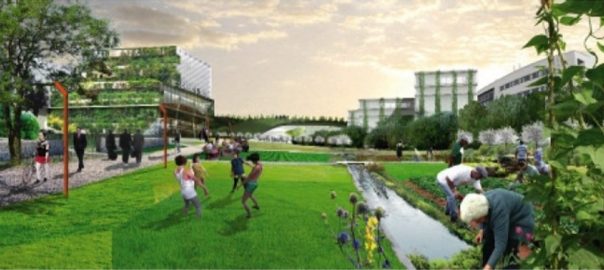 Social-Ecological Urbanism and the Life of Baltic Cities
Social-Ecological Urbanism and the Life of Baltic Cities
Stephan Barthel, Stockholm
Jane Jacobs critiqued modernist city planning in the now classic book The Death and Life of Great American Cities (1961). This book is now inspiring an urban renaissance. Jacobs proposed that a city must be understood as a system of organized complexity—in other words, as an ecosystem—and that any intervention...
1 Comment(s)Join our Conversation
 Photo Essay: Untold Stories of Change, Loss and Hope Along the Margins of Bengaluru’s Lakes
Photo Essay: Untold Stories of Change, Loss and Hope Along the Margins of Bengaluru’s Lakes
Marthe Derkzen, Arnhem/Nijmegen
Before becoming India’s information technology hub, Bengaluru was known for its numerous lakes and green spaces. Rapid urbanization has led to the disappearance of many of these ecosystems. Those that remain face a range of challenges: residential and commercial construction, pollution and waste dumping, privatization, and so on. Today, Bengaluru’s...
2 Comment(s)Join our Conversation
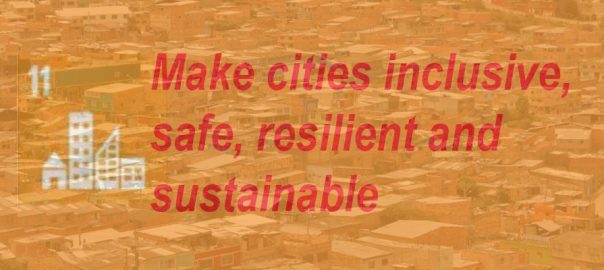 An explicitly urban Sustainable Development Goal has been adopted by the UN (#11). Now what? Where could it go wrong?
An explicitly urban Sustainable Development Goal has been adopted by the UN (#11). Now what? Where could it go wrong?
Genie Birch, Philadelphia & New York Ben Bradlow, Boston William Dunbar, Tokyo Peter Head, London Mark Hostetler, Gainesville Hui Ling Lim, Prague Shuaib Lwasa, Kampala Jose Puppim, São Paulo Andrew Rudd, New York City Karen Seto, New Haven David Simon, London Bolanle Wahab, Ibadan Lorena Zárate, Ottawa
6 Comment(s)
Join our Conversation
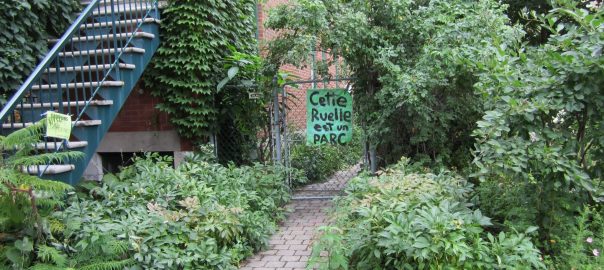 Discounting Our Engagement and Betraying Our Affections for Urban Nature
Discounting Our Engagement and Betraying Our Affections for Urban Nature
Janice Astbury, Buenos Aires
When Montréal’s Parc Oxygène was bulldozed in June 2014, a local newspaper article aptly spoke of a ‘neighborhood in mourning.’ The narration of its destruction by a neighbor is heart-wrenching (1). This small park in the midst of high rises was an urban oasis made and looked after by its...
0 Comment(s)Join our Conversation
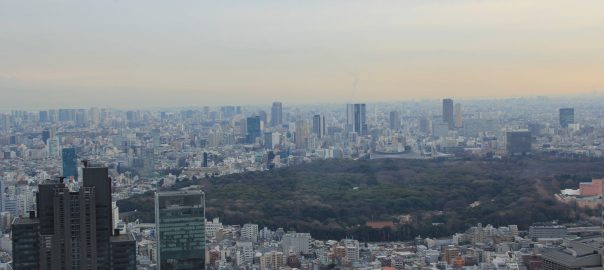 Can Large Parks be Urban Green Saviors?
Can Large Parks be Urban Green Saviors?
Maria E Ignatieva, Perth Richard Murray, Stockholm Henrik Waldenström, Stockholm
A review of the Large Parks in Large Cities conference, Stockholm, 2-4 September 2015. The prognosis for urbanization is challenging—in the next 40 years, urban population will double. Under the growing pressure of modern urban development, large parks are valued by people more than ever. From the beginning of city...
2 Comment(s)Join our Conversation
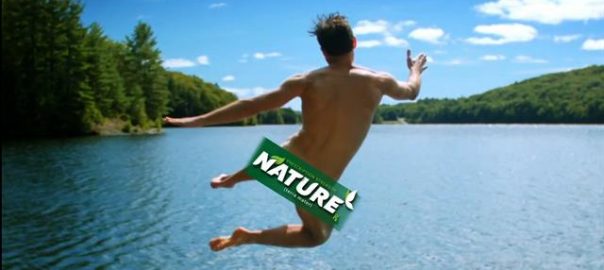 Nature: Medicine for Cities and People
Nature: Medicine for Cities and People
Chantal van Ham, Brussels
Whilst urbanization has brought many benefits to society, it increasingly denies people of opportunities for the mental, spiritual and physical health benefits from nature. Over the last decade, there has been an alarming global increase in diseases such as heart diseases, cancer, chronic respiratory diseases and diabetes [Note 1]. The...
0 Comment(s)Join our Conversation
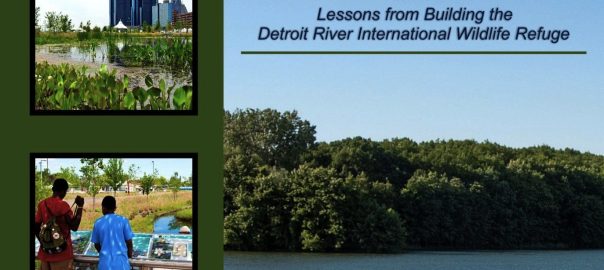 History, the Detroit River and Building an International Wildlife Refuge Right
History, the Detroit River and Building an International Wildlife Refuge Right
David Goode, Bath
A review of Bringing Conservation to Cities: Lessons from Building the Detroit River International Wildlife Refuge, by John H. Hartig. 2014. ISBN: 978-0-9921007-4-2. Michigan State University Press, East Lansing, MI. Ecovision World Monograph Series. 282 pages. John Hartig is currently the refuge manager for the Detroit River International Wildlife Refuge....
0 Comment(s)Join our Conversation
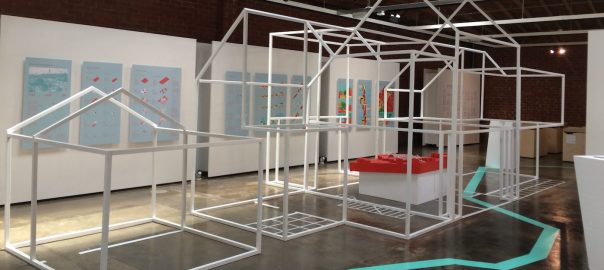 Granny Flats and a Sponge House: Rethinking Necessities for the Future of Communities Along the Los Angeles River
Granny Flats and a Sponge House: Rethinking Necessities for the Future of Communities Along the Los Angeles River
Allison Palenske, Edinburgh
A review of “Shelter,” an exhibition on view at the Architecture and Design Museum Los Angeles until Nov. 6, 2015. Although recent efforts to mitigate the characteristic poor air quality and largely suburban character of Los Angeles have been the focus of much debate and action, the city still faces...
0 Comment(s)Join our Conversation
 Ceci n’est pas une pipe: Unpacking Injustice in Paris
Ceci n’est pas une pipe: Unpacking Injustice in Paris
Francois Mancebo, Paris
“We all know the sound of two hands clapping. But what is the sound of one hand clapping?” says a famous Zen Koan. At first consideration, it seems impossible to conjecture about the “just city” without having already in mind what is an “unjust city,” and vice versa. But my opinion is that this...
2 Comment(s)Join our Conversation
 The Quest for Governance Modes on Sustainable Urbanization
The Quest for Governance Modes on Sustainable Urbanization
Buyana Kareem, Kampala Olumuyiwa Adegun, Johannesburg Collins Adjei Mensah, Cape Coast, Ghana Saleh Ahmed, Tucson Isabelle Michele Sophie Anguelovski, Barcelona Ruishan Chen, Shanghai Uchendu Chigbu, Munich Aakriti Grover, Delhi Alice Hertzog-Fraser, Zurich Tracy-Ann Hyman, West Indies, Jamaica George Kinyashi, Dodoma, Tanzania Hayley Leck, London Karolina Łukasiewicz, Kraków Martin Maldonado, Cordoba Andre Ortega, Manila Lorena Pasquini, Cape Town Alisa Zomer, New Haven
However complex the urban sustainability question is, the facts are clear to all. Over the next four decades, the global urban population is expected to nearly double, with the vast majority of this happening in Asian and African cities; if we do not rethink and coalesce our approaches and practices,...
1 Comment(s)Join our Conversation
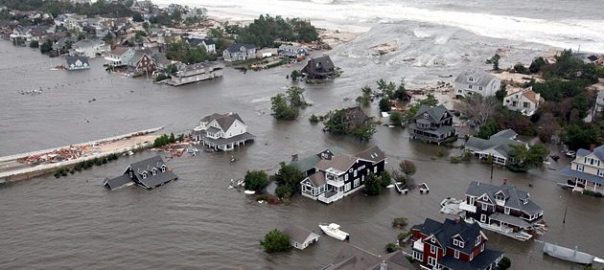 What is the insurance value of urban ecosystems and their services?
What is the insurance value of urban ecosystems and their services?
Victor Beumer, Delft Henry Booth, West Chester Mitchell Chester, Miami Thomas Elmqvist, Stockholm Alexandros Gasparatos, Tokyo Jaroslav Mysiak, Venice Rob Tinch, Brussels Henrik von Wehrden, Lüneburg Francis Vorhies, Divonne-les-Bains Koko Warner, Bonn
4 Comment(s)
Join our Conversation
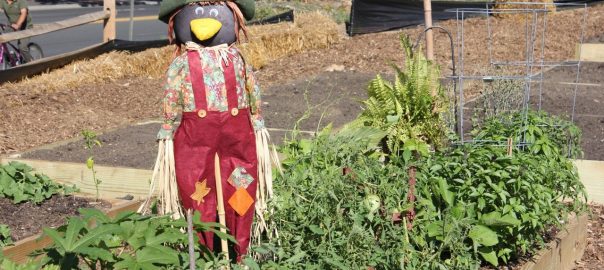 The Nurtured Golem: A Nantes Neighborhood Transforms Environmental Bad into Good
The Nurtured Golem: A Nantes Neighborhood Transforms Environmental Bad into Good
Francois Mancebo, Paris
At the end of my last post, Unintended Consequences: When Environmental “Goods” Turn Bad, I raised the idea that sometimes environmental “bads” can also turn good, and that it usually works better when nobody “looks”. I mean that this process works better when the inhabitants take ownership of their living...
0 Comment(s)Join our Conversation
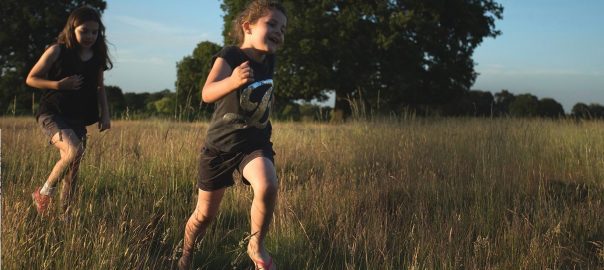 London: A National Park City
London: A National Park City
David Goode, Bath
Something very significant is happening in London. It’s a plan to make London the world’s first National Park City. Now that’s an idea that could catch on in a very big way. Over the past 18 months, a movement has been growing, drawing together Londoners who want to apply National...
8 Comment(s)Join our Conversation
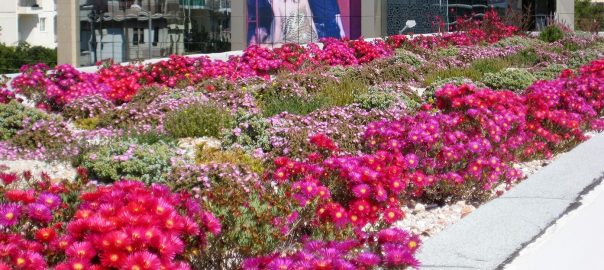 Why don’t all public buildings have green roofs? Or all large private buildings (e.g. businesses)? Would this be a good idea? What would it take to make it happen and to make it worthwhile?
Why don’t all public buildings have green roofs? Or all large private buildings (e.g. businesses)? Would this be a good idea? What would it take to make it happen and to make it worthwhile?
Maryam Akbarian, Tehran Wolfgang Ansel, Nürtingen Nathalie Baumann, Zurich Michael Berkshire, Chicago Rebecca Bratspies, New York Amy Chomowicz, Portland Andrew Clements, Corinth Karla Dakin, Denver Stuart Gaffin, New York Dusty Gedge, London André Gonçalves, Goiânia Ulrike Grau, Mexico City Angela Loder, Denver Amosh Neupane, Middlebury Matt Palmer, New York City Kerry Ross, Calgary Kaveh, Julie Santos, London & Buenos Aires Kate Scherer, New York Mark Simmons, Austin Kevin Songer, Jacksonville Christine Thuring, Vancouver
18 Comment(s)
Join our Conversation
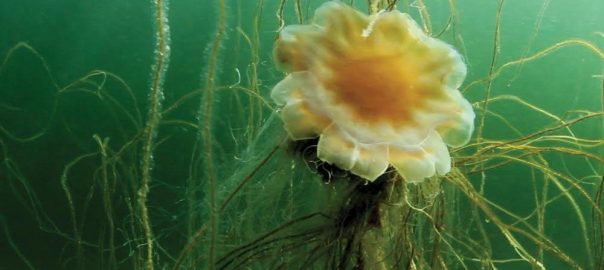 Glasgow Made the Clyde and the Clyde Made Glasgow
Glasgow Made the Clyde and the Clyde Made Glasgow
Allison Palenske, Edinburgh
A review of “Clyde Reflections,” an art film by Stephen Hurrel and Ruth Brennan, on exhibition at the Gallery of Modern Art in Glasgow, Scotland. The west coast of Scotland has been known to enchant, with its rough coastal edges, intricately carved islands, charming towns, and an aquatic landscape that...
1 Comment(s)Join our Conversation
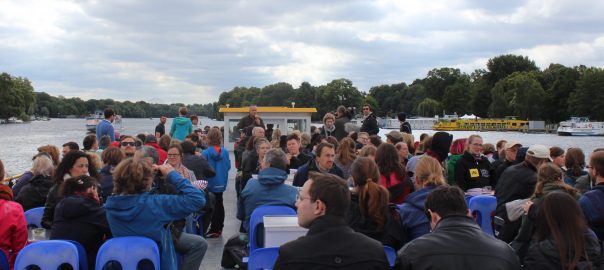 Urban Nature as Festival: Berlin’s Long Day of Urban Nature
Urban Nature as Festival: Berlin’s Long Day of Urban Nature
Katharine Burgess, Washington, D.C
Just before 10 am one Sunday this June, 300 people prepared for a boat ride on the River Spree, lining up in a park next to the longest surviving stretch of the Berlin Wall. The boat was a cheerful blue and yellow passenger vessel, mostly used for river tourist excursions...
4 Comment(s)Join our Conversation
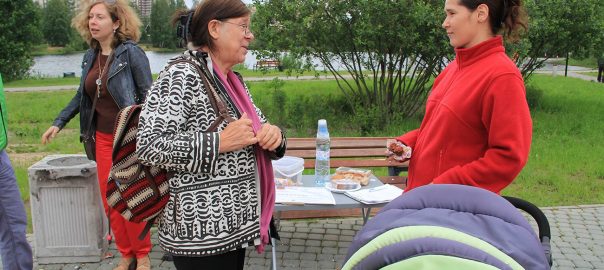 10 scientists and 10 practitioners walk into a bar…what would they talk about? How can research and knowledge generation be co-created to better support practitioners and evidence-based decision making?
10 scientists and 10 practitioners walk into a bar…what would they talk about? How can research and knowledge generation be co-created to better support practitioners and evidence-based decision making?
Myla Aronson, New Brunswick Georgina Avlonitis, Cape Town Keith Bowers, Charleston Sarah Charlop-Powers, New York Haripriya Gundimeda, Mumbai Bram Gunther, New York Ana Faggi, Buenos Aires Amy Hahs, Ballarat Fadi Hamdan, Athens John Hartig, Windsor Mark Hostetler, Gainesville Maria E Ignatieva, Perth Michael Jemtrud, Montreal Deborah Lev, Portland Louise Lezy-Bruno, Paris Yvonne Lynch, Riyadh Ian MacGregor-Fors, Xalapa Charlie Nilon, Columbia Diane Pataki, Salt Lake City Jose Puppim, São Paulo Rebecca Salminen Witt, Detroit Eric Sanderson, New York Philip Silva, New York
32 Comment(s)
Join our Conversation
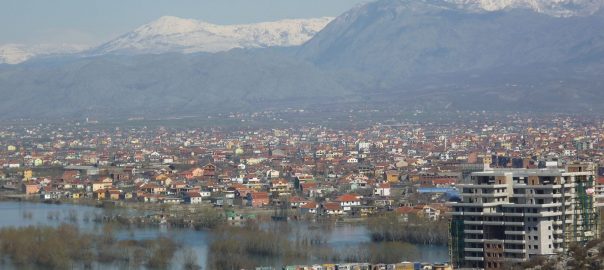 Cities, People, Business and Nature: In Search of Innovative Models of Engagement
Cities, People, Business and Nature: In Search of Innovative Models of Engagement
Chantal van Ham, Brussels
Seek the silent places where no jarring sound is heard and nothing breaks the stillness but the singing of a bird. Nature tells her secrets not to those who hurry by, but to those who walk with quiet heart and seeing eye. —Chinese proverb I recently discovered that the word...
3 Comment(s)Join our Conversation
 An Urban Journey to the Bottom of the Sea
An Urban Journey to the Bottom of the Sea
Taida Garibovic, Zadar, Croatia
A review of Blue Urbanism: Exploring Connections between Cities and Oceans by Timothy Beatley. 2014. ISBN 13: 978-1-61091-405-5 / ISBN 10: 1-61091-405-8. Island Press, Washington. 165 pages. Timothy Beatley, a recognized environmental urbanist and planner, has recently been working on the concept of sustainable communities and resilient cities. In particular, the author’s...
0 Comment(s)Join our Conversation
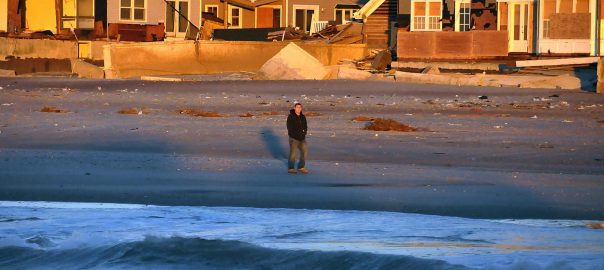 Taking “resilience” out of the realm of metaphor. How do you measure resilience in cities? How would you know if your city or your community was resilient?
Taking “resilience” out of the realm of metaphor. How do you measure resilience in cities? How would you know if your city or your community was resilient?
Keren Bolter, Fort Lauderdale Cezar Busatto, Porto Alegre Lorenzo Chelleri, Barcelona William Dunbar, Tokyo Thomas Elmqvist, Stockholm Antoine Faye, Dakar Richard Friend, York Lance Gunderson, Atlanta Tom Henfrey, Bristol Patricia Holly, Barcelona and Nairobi Dan Lewis, Barcelona and Nairobi Rachna Leveque, London Shuaib Lwasa, Kampala Timon McPhearson, New York Franco Montalto, Philadelphia and Venice Luciana Nery, Rio de Janeiro Henk Ovink, The Hague Elisabeth Peyroux, Paris Catherine Sutherland, Durban Pakamas Thinphanga, Bangkok Claire Weisz, New York Daniel Zarrilli, New York
21 Comment(s)
Join our Conversation
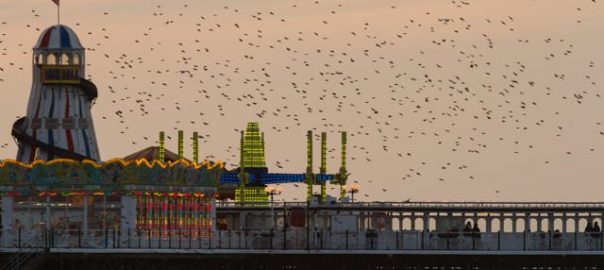 Imaging the urban wild: Fourteen photographers and artists show and talk about their work
Imaging the urban wild: Fourteen photographers and artists show and talk about their work
Joshua Burch, London Emilio Fantin, Milan Mike Feller, New York City Andrés Flajszer, Barcelona Mike Houck, Portland Chris Jordan, Seattle Robin Lasser, Oakland Monika Lawrence, Bemidji Patrick M. Lydon, Daejeon David Maddox, New York Chris Payne, New York City Eric Sanderson, New York Jonathan Stenvall, Stockholm Benjamin Swett, New York City
4 Comment(s)
Join our Conversation
 Chinese Urban Green Areas: Classic Gardens to a Globalized Landscape
Chinese Urban Green Areas: Classic Gardens to a Globalized Landscape
Maria E Ignatieva, Perth Na Xiu, Uppsala & Xi’an Fengping Yang, Uppsala
In October 2014, we had a great opportunity to explore different green areas of several Chinese cities within the project “Sustainable green infrastructure in urban-rural areas of China based on eco-civilization,” which was sponsored by the Chinese Government. It was particularly interesting to see different types of greenery that reflects...
2 Comment(s)Join our Conversation
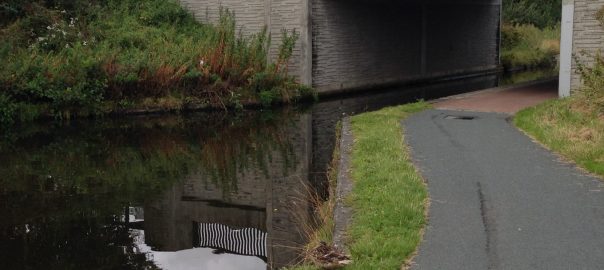 Green Transport Routes Are Social-Cultural-Ecological Corridors
Green Transport Routes Are Social-Cultural-Ecological Corridors
Janice Astbury, Buenos Aires
Since moving from Edinburgh to London, I have greatly missed my bicycle commute along the former’s Union Canal. There are similar routes in London, but they’re unfortunately not on my way to work. I have always sought out such corridors and they have sometimes influenced my destinations. In response to...
1 Comment(s)Join our Conversation
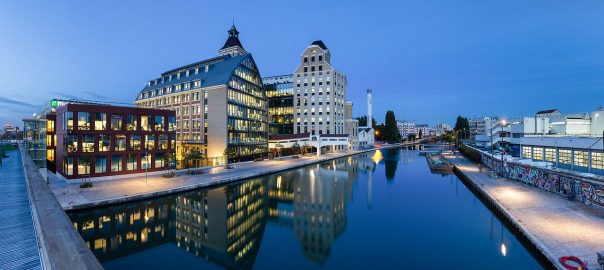 Unintended Consequences: When Environmental “Goods” Turn Bad
Unintended Consequences: When Environmental “Goods” Turn Bad
Francois Mancebo, Paris
After a hectic start to 2015, I finally managed to slow down the pace. A few days ago, I attempted to catch up on some overdue readings—my way to keep in the loop. Among the many documents piling up on my computer desktop was this short podcast from TNOC: “Closing...
3 Comment(s)Join our Conversation
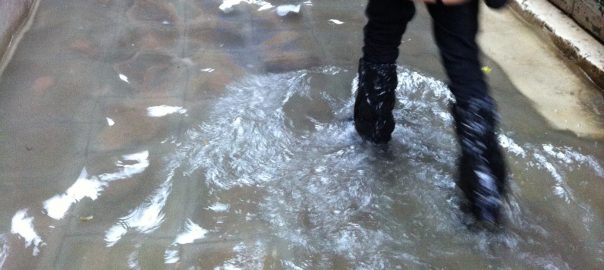 Lessons on Post-Resilience from Venice, 2015
Lessons on Post-Resilience from Venice, 2015
Franco Montalto, Philadelphia and Venice
“Stronger than the storm.” I can’t get this phrase out of my head, nearly one week into my sabbatical move to Venice, Italy. It so happens that we arrived on a week when the moon and the winds lined up to create acqua alta (high water) for six days in...
4 Comment(s)Join our Conversation
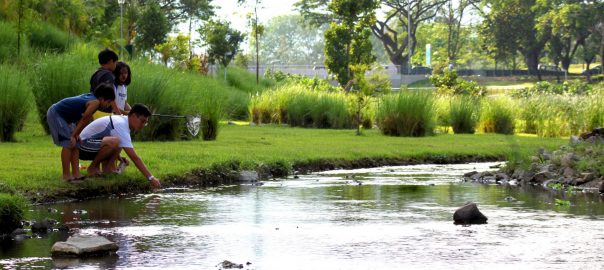 Daylighting and restoring urban streams, ponds and wetlands can provide huge ecological and social benefits. Are such restorations “worth it”? What are the pitfalls? How can we demonstrate these benefits and elevate them in the public discourse so that urban wetlands become urban planning priorities?
Daylighting and restoring urban streams, ponds and wetlands can provide huge ecological and social benefits. Are such restorations “worth it”? What are the pitfalls? How can we demonstrate these benefits and elevate them in the public discourse so that urban wetlands become urban planning priorities?
Adrian Benepe, New York Keith Bowers, Charleston Meredith Dobbie, Victoria Susannah Drake, New York City Herbert Dreiseitl, Überlingen Marit Larson, New York Chan-Won Lee, Changwon Kaitlin Lovell, Portland Alberto Tacón, Valdivia
16 Comment(s)
Join our Conversation
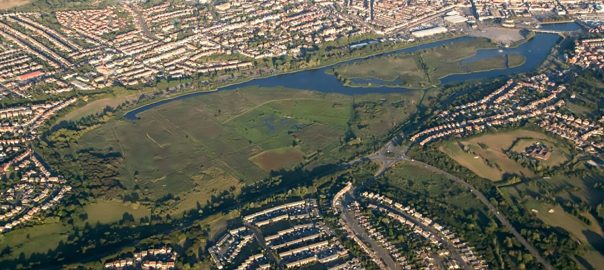 Unintended Consequences Can Be Opportunities for Conservation
Unintended Consequences Can Be Opportunities for Conservation
David Goode, Bath
In reviewing the wildlife habitats of British towns and cities for my recent book Nature in Towns and Cities (Harper Collins 2014) I became acutely aware that many of the UK’s most spectacular urban wetlands resulted from industrial activities. The most extensive of these are newly created lakes that formed...
1 Comment(s)Join our Conversation
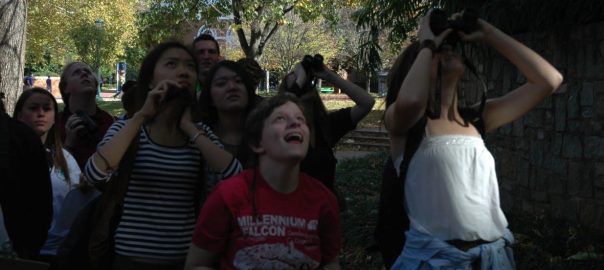 Is there such a thing as a “bird friendly city”? What does it look like? What does it not look like? Why bother?
Is there such a thing as a “bird friendly city”? What does it look like? What does it not look like? Why bother?
Tim Beatley, Charlottesville Luke Engleback, Tunbridge Wells Dusty Gedge, London David Goode, Bath Madhusudan Katti, Raleigh John Marzluff, Seattle Bongani Mnisi, Cape Town Glenn Phillips, New York City Kaveh, Ken Smith, New York Yolanda van Heezik, Dunedin Maxime Zucca, Paris
27 Comment(s)
Join our Conversation
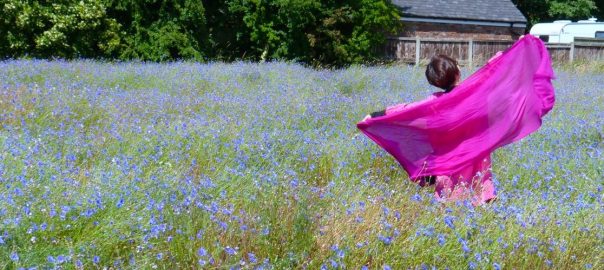 Seeing and Seeding the Potential of Urban Life
Seeing and Seeding the Potential of Urban Life
Richard Scott, Liverpool
Land really is the best art. I think having land and not ruining it is the most beautiful art that anybody could ever want. —Andy Warhol The new year is a good time to look back before looking forward: this blog offers opportunity to take stock of 2014, which was...
1 Comment(s)Join our Conversation
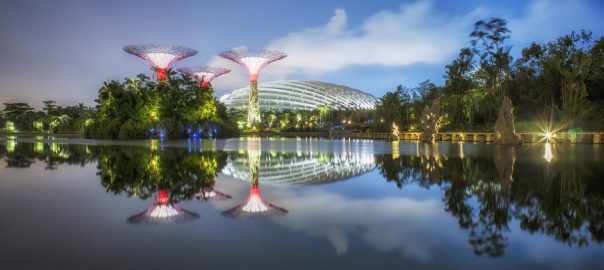 Urban water fronts have typically been sites of heavy development and often are sites of pollution or exclusive access. But they have enormous potential benefits. How can we unlock these benefits for everyone? Are there ecological vs. social vs. economic tradeoffs?
Urban water fronts have typically been sites of heavy development and often are sites of pollution or exclusive access. But they have enormous potential benefits. How can we unlock these benefits for everyone? Are there ecological vs. social vs. economic tradeoffs?
Mitchell Chester, Miami PK Das, Mumbai Ana Faggi, Buenos Aires Andrew Grant, Bath John Hartig, Windsor Roland Lewis, New York Joe Lobko, Toronto Robert Morris-Nunn, Hobart Rob Pirani, New York Elizabeth Plater-Zyberk, Miami Andréa Albuquerque G. Redondo, Rio de Janeiro Bradley Rink, Cape Town Hita Unnikrishnan, Warwick Jay Valgora, New York Mike Wells, Bath
12 Comment(s)
Join our Conversation
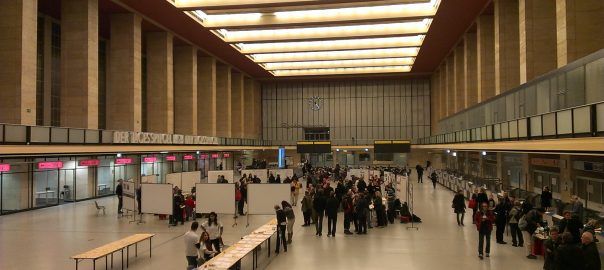 Community Participation in Parks Development: Two Examples from Berlin
Community Participation in Parks Development: Two Examples from Berlin
Katharine Burgess, Washington, D.C
On a Friday night at the end of November 2014, nearly 200 people arrived in the departures zone of Berlin’s former Tempelhof Airport for five hours of presentations, working groups and community-led exhibitions. A projection screen stood on the baggage carousel, and former glass-walled airport offices held bulletin boards and...
3 Comment(s)Join our Conversation
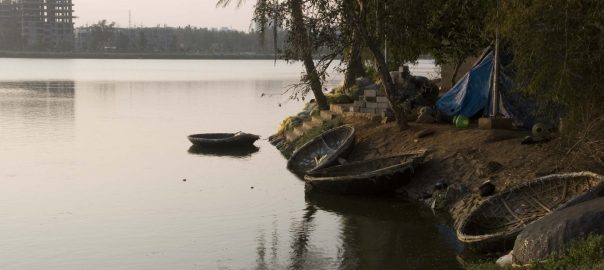 How can different ways of knowing—and of producing knowledge—be useful for understanding and managing urban ecosystems?
How can different ways of knowing—and of producing knowledge—be useful for understanding and managing urban ecosystems?
Doreen Adengo, Kampala Adrina Bardekjian, Toronto Sadia Butt Sadia Butt, Toronto Lindsay Campbell, New York Luke Drake, New Brunswick, New Jersey Bryce Dubois, New York City Johan Enqvist, Cape Town Nate Gabriel, New Brunswick, New Jersey Tischa Muñoz-Erickson, Río Piedras, Puerto Rico Camilo Ordóñez, Melbourne Philip Silva, New York James Steenberg, Toronto
31 Comment(s)
Join our Conversation
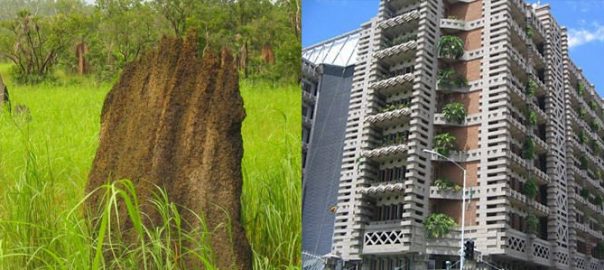 Building Ecological Services: Restoring the Ecosystem Services of the Habitats We Are Replacing with Human Development
Building Ecological Services: Restoring the Ecosystem Services of the Habitats We Are Replacing with Human Development
Whitney Hopkins, London
Every year, new scientific advances indicate life is more interwoven than we ever imagined. From recent reports that reveal the cascading effects of wolves’ reintroduction to Wyoming to current studies that track the dire impact of Washington dams on the decreasing nutrient loads in Montana forests, evidence builds of a...
1 Comment(s)Join our Conversation
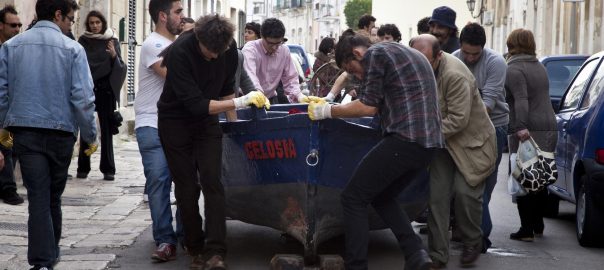 How can art (in all its forms), exhibits, installations and provocations be a better catalyst to raise awareness, support and momentum for urban nature and green spaces?
How can art (in all its forms), exhibits, installations and provocations be a better catalyst to raise awareness, support and momentum for urban nature and green spaces?
Jennifer Adams, New York City Pippin Anderson, Cape Town Marielle Anzelone, New York City Stephanie Britton, Byron Bay, NSW Pauline Bullen, Harare Tim Collins, Glasgow Emilio Fantin, Milan Lloyd Godman, Melbourne Julie Goodness, Stockholm Noel Hefele, Brooklyn Todd Lester, Säo Paulo Patrick M. Lydon, Daejeon Elliott Maltby, New York City Mary Miss, New York City Lorenza Perelli, Chicago Stephanie Radok, Adelaide Lisa Terreni, Wellington Shawn Van Sluys, Guelph
32 Comment(s)
Join our Conversation
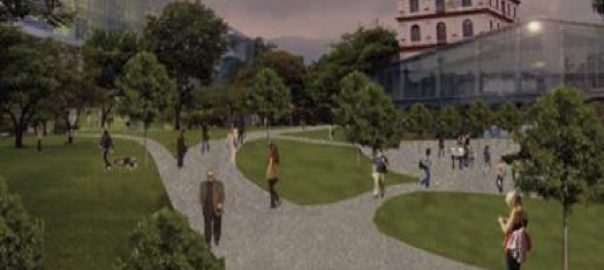 Do urban green corridors “work”? It depends on what we want them to do. What ecological and/or social functions can we realistically expect green corridors to perform in cities? What attributes define them, from a design and performance perspective?
Do urban green corridors “work”? It depends on what we want them to do. What ecological and/or social functions can we realistically expect green corridors to perform in cities? What attributes define them, from a design and performance perspective?
Diego Borrero, Cali Kelly Brenner, Seattle Lena Chan, Singapore Geoffrey Davison, Singapore Susannah Drake, New York City Marcus Hedblom, Uppsala Mark Hostetler, Gainesville Chris Ives, Nottingham Tori Kjer, Los Angeles Kathryn Lwin, London Pierre-André Martin, Rio de Janeiro Colin Meurk, Christchurch Toni Pujol, Barcelona Glenn Stewart, Christchurch Marten Wallberg, Stockholm Na Xiu, Uppsala & Xi’an Irene Guida, Venice
31 Comment(s)
Join our Conversation
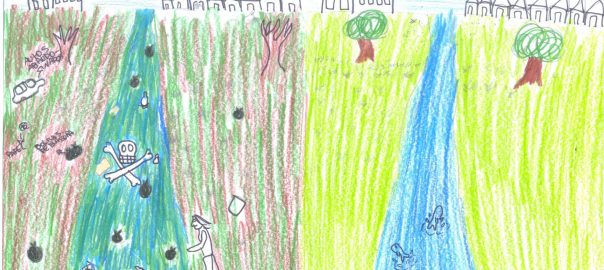 We Should Look at Urban Nature More Through the Eyes of Children
We Should Look at Urban Nature More Through the Eyes of Children
Ana Faggi, Buenos Aires Jürgen Breuste, Salzburg
Environmental perception by people is complex and dynamic. Individuals are active agents in their perceptions of nature—not passive receivers of information—while the environment is a global unity on which environmental processes within cities are based. Cognitive, interpretive and evaluative components are all incorporated into the perceptual processes of individuals. The...
3 Comment(s)Join our Conversation
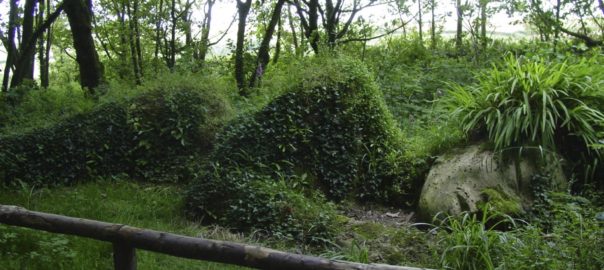 What is the meaning and role of the “sacred” in the design and management of urban green space and the building of cities that are both green and livable?
What is the meaning and role of the “sacred” in the design and management of urban green space and the building of cities that are both green and livable?
Pedro Camarena, Mexico City Lindsay Campbell, New York Jayne Engle, Montreal Emilio Fantin, Milan Mickey Fearn, Raleigh Divya Gopal, Berlin Patrick M. Lydon, Daejeon Jimena Martignoni, Buenos Aires Erika Svendsen, New York Maria Tengö, Stockholm Naomi Tsur, Jerusalem Gavin Van Horn, Chicago Shawn Van Sluys, Guelph Diana Wiesner, Bogota Kathleen Wolf, Seattle Mary Wyatt, Annapolis
17 Comment(s)
Join our Conversation
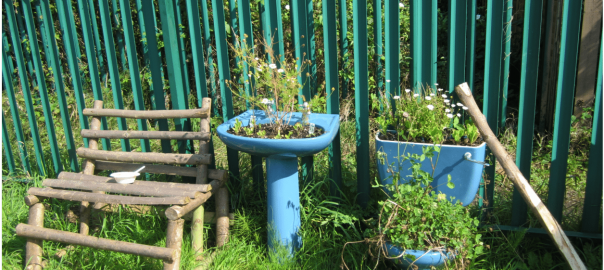 Inviting You to Collaborate with Nature to Transform Your City
Inviting You to Collaborate with Nature to Transform Your City
Janice Astbury, Buenos Aires
In the many current discussions about how to make cities more resilient, the potential roles of citizens and urban nature are largely overlooked. There are exceptions, including Krasny and Tidball’s work on civic ecology and that of a number of people associated with the Stockholm Resilience Centre (cf. Andersson, Barthel,...
2 Comment(s)Join our Conversation
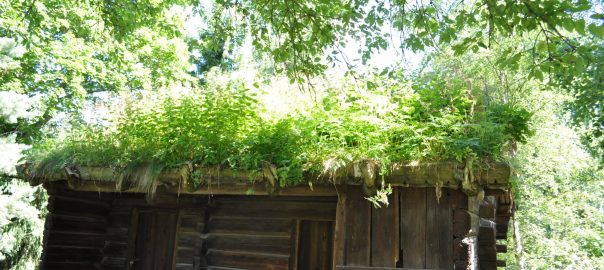 The New Is Well Forgotten Old: Scandinavian Vernacular Experience on Biodiverse Green Roofs
The New Is Well Forgotten Old: Scandinavian Vernacular Experience on Biodiverse Green Roofs
Maria E Ignatieva, Perth Anna Bubnova, St. Petersburg
Green roofs are becoming more popular around the globe and are considered to be a very progressive landscape design devise in urban areas. The green roof has started to become fashionable—it is even considered as one of the “compulsory” sustainable buildings features and an important part of urban green infrastructure....
8 Comment(s)Join our Conversation
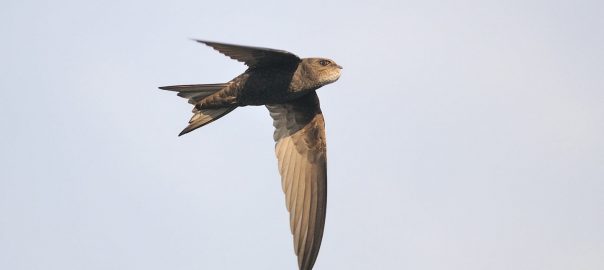 Swift Action Needed
Swift Action Needed
David Goode, Bath
The swifts have gone. They left about a week ago and the sky is silent over British towns and cities. By now they will be well on their way south, quartering marshes in the south of France and Spain, making for Gibraltar where they cross to Africa; airborne now until...
2 Comment(s)Join our Conversation
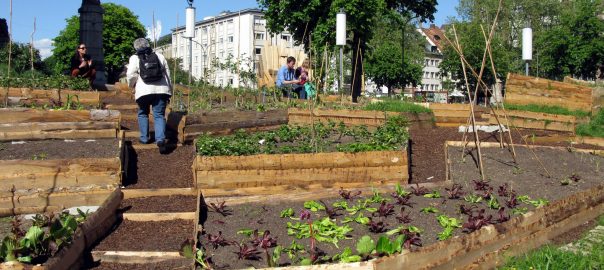 Is There Any Type of Urban Greenspace that Addresses the Urban-Rural Continuum? Urban Agriculture
Is There Any Type of Urban Greenspace that Addresses the Urban-Rural Continuum? Urban Agriculture
Francois Mancebo, Paris
In my last post, I wrote that efficient urban sustainability policy should be inclusive, in the sense that it should address sustainability in an area large enough to encompass urban centers, but suburban, periurban and dependent rural, or natural places. I called for planners to abandon the “false dichotomy between...
0 Comment(s)Join our Conversation
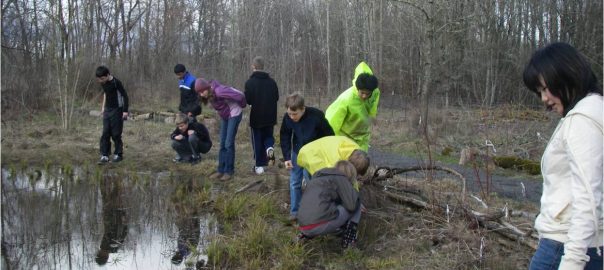 How much should we worry about exotic species in urban zones? How do we reduce damage from exotic invasives when management resources are limited? Are there conflicts between management or eradication efforts and building general support for urban biodiversity?
How much should we worry about exotic species in urban zones? How do we reduce damage from exotic invasives when management resources are limited? Are there conflicts between management or eradication efforts and building general support for urban biodiversity?
Pippin Anderson, Cape Town David Burg, New York City Mark Davis, Saint Paul Ana Faggi, Buenos Aires Katie Holzer, Davis Peter Head, London Madhusudan Katti, Raleigh Deborah Lev, Portland Timon McPhearson, New York Matt Palmer, New York City Toby Query, Portland Glenn Stewart, Christchurch Peter Werner, Darmstadt Paula Villagra, Valdivia Carmen Silva, Los Rios
22 Comment(s)
Join our Conversation
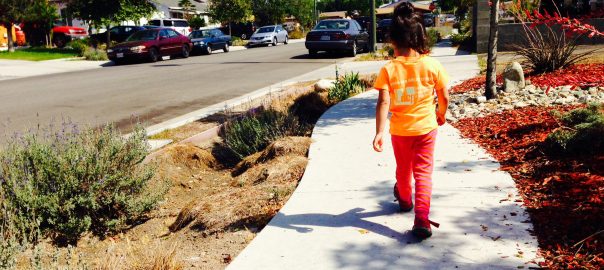 Environmental education in cities focuses on youth and community development, restoring ecosystems, building green infrastructure, and more. But is urban environmental education really anything new? What should its goals and practices look like?
Environmental education in cities focuses on youth and community development, restoring ecosystems, building green infrastructure, and more. But is urban environmental education really anything new? What should its goals and practices look like?
Janice Astbury, Buenos Aires Chankook Kim, Cheongju, South Korea Marianne Krasny, Ithaca Alex Russ, Ithaca Miguel Luna, Los Angeles Pepe Marcos-Iga, Tucson Candice Russell, Los Angeles Soul Shava, Johannesburg Philip Silva, New York Shubhalaxmi Vaylure, Mumbai
22 Comment(s)
Join our Conversation
 A Sustainable Development Goal (SDG) on Cities and Human Settlements is competing for a place among the final United Nations SDGs that will be approved in 2014. If there were an explicitly Urban SDG, what would it look like? What should it say?
A Sustainable Development Goal (SDG) on Cities and Human Settlements is competing for a place among the final United Nations SDGs that will be approved in 2014. If there were an explicitly Urban SDG, what would it look like? What should it say?
Yunus Arikan, Bonn Genie Birch, Philadelphia & New York Ben Bradlow, Boston Maruxa Cardama, Brussels Thomas Elmqvist, Stockholm Julian Goh, Singapore Shuaib Lwasa, Kampala Anjali Mahendra, Chapel Hill & New Delhi Mary Rowe, Toronto Andrew Rudd, New York City Kaveh, Karen Seto, New Haven Lorena Zárate, Ottawa
8 Comment(s)
Join our Conversation
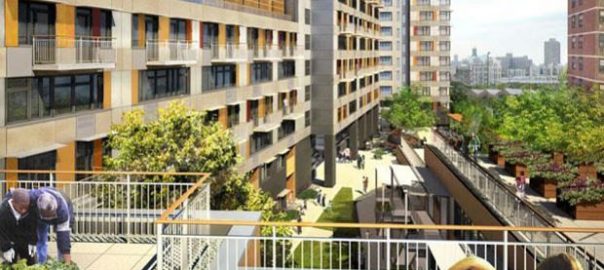 The sky is the limit for urban agriculture. Or is it? What can cities hope to get from community gardens and urban agriculture?
The sky is the limit for urban agriculture. Or is it? What can cities hope to get from community gardens and urban agriculture?
Lindsay Campbell, New York Joana Chan & Bryce DuBois, New York City David Dixon, London Alexandre Guertin, Montreal Gareth Haysom, Cape Town Madhumitha Jaganmohan, Leipzig Marianne Krasny, Ithaca Jenga Mwendo, New Orleans Mary Rowe, Toronto Naomi Tsur, Jerusalem Darlene Wolnik, New Orleans
25 Comment(s)
Join our Conversation
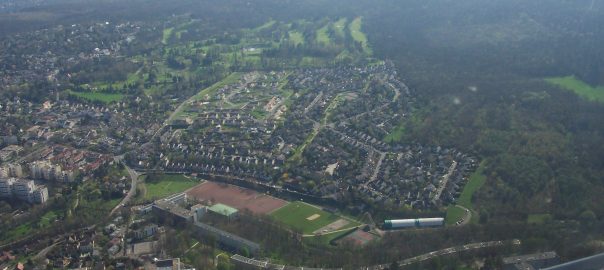 It’s Not Only City Design—We Need To Integrate Sustainability Across the Rural-Urban Continuum
It’s Not Only City Design—We Need To Integrate Sustainability Across the Rural-Urban Continuum
Francois Mancebo, Paris
Nearly 70% of the world population lives in urban areas and nearly 75% of economic activity is located therein. Urban areas concentrate not only wealth but also extreme poverty and environmental degradation. Despite the significant progress in urbanization, still a billion people live in the slums of urban areas. Thus...
2 Comment(s)Join our Conversation
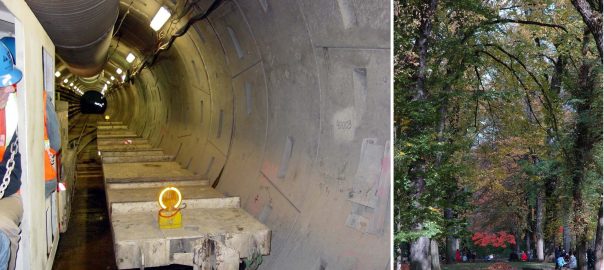 Many believe that better information on the monetary value of ecosystem services is critical for getting cities to adopt more green infrastructure solutions to issues such as storm water management, heat island, storm surge, etc. True? What are the key knowledge gaps for convincing cities to invest in ecosystems services?
Many believe that better information on the monetary value of ecosystem services is critical for getting cities to adopt more green infrastructure solutions to issues such as storm water management, heat island, storm surge, etc. True? What are the key knowledge gaps for convincing cities to invest in ecosystems services?
Taylor Britt, Houston Nette Compton, New York City Thomas Elmqvist, Stockholm Mike Houck, Portland Haripriya Gundimeda, Mumbai Patrick M. Lydon, Daejeon Rob McInnes, London Timon McPhearson, New York Franco Montalto, Philadelphia and Venice Steve Whitney, Seattle
0 Comment(s)
Join our Conversation
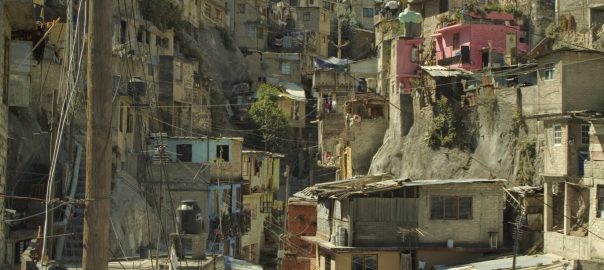 Why We Need an Urban Sustainable Development Goal
Why We Need an Urban Sustainable Development Goal
Thomas Elmqvist, Stockholm
Next year, the Millennium Development Goals (MDGs), adopted by the United Nations after the Millennium Declaration, are set to expire. The next set of global development goals, which are supposed to be even more environmentally focused — the Sustainable Development Goals — are currently under discussion at the UN and...
1 Comment(s)Join our Conversation
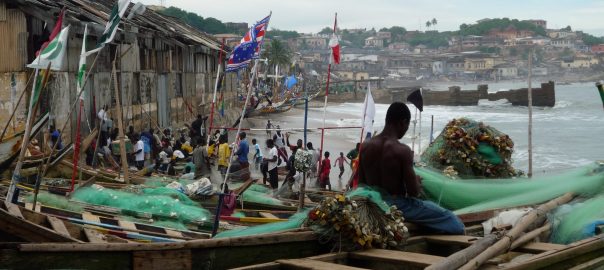 The UN in the Urban Anthropocene
The UN in the Urban Anthropocene
Oliver Hillel, Montreal Jose Puppim, São Paulo
Today, we live in the ‘Urban Anthropocene’. This expression combines the global trend towards urbanization and the neologism ‘Anthropocene’, the term an ecologist would be forced to use these days to describe Homo sapiens as the key structuring species that could determine, alone, the fate of Earth’s life forms. For...
2 Comment(s)Join our Conversation
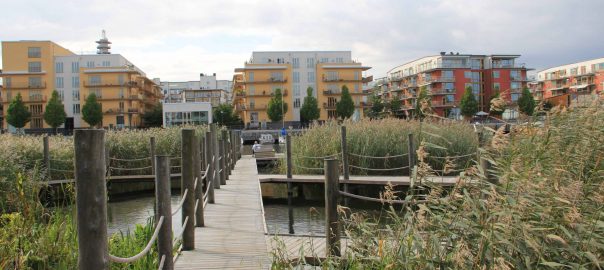 Hammarby Sjöstad — A New Generation of Sustainable Urban Eco-Districts
Hammarby Sjöstad — A New Generation of Sustainable Urban Eco-Districts
Maria E Ignatieva, Perth Per Berg, Stockholm
Hammarby sjöstad (Hammarby Lake City) is an urban development project directly south of Stockholm’s South Island. This is no doubt the most referenced and visited spot among Scandinavian examples of implemented eco-friendly urban developments. Hammarby is included in many publications, for example in the recent Ecological Design by Nancy Rottle...
12 Comment(s)Join our Conversation
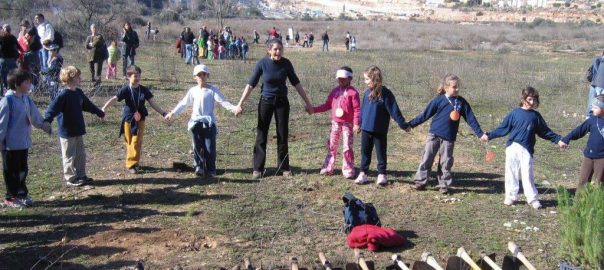 What are the social justice implications of urban ecology, and how can we make sure that “green cities” are not synonymous with “gentrified” or “exclusive” cities?
What are the social justice implications of urban ecology, and how can we make sure that “green cities” are not synonymous with “gentrified” or “exclusive” cities?
Harini Nagendra, Bangalore Stephanie Pincetl, Los Angeles Jim Labbe, Portland Rebecca Bratspies, New York PK Das, Mumbai Cecilia Herzog, Rio de Janeiro Charlie Nilon, Columbia Brian McGrath, New York Pengfei XIE, Beijing
13 Comment(s)
Join our Conversation
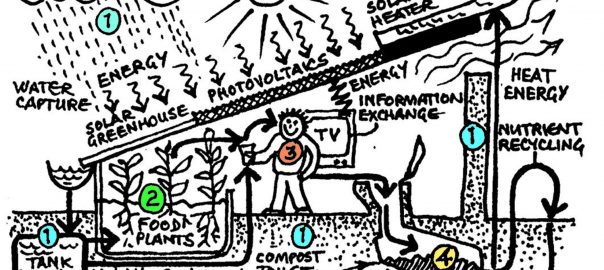 Should programs in architecture, urban design, and landscape architecture require a certain minimum level of learning about the fundamentals of ecology? Why?
Should programs in architecture, urban design, and landscape architecture require a certain minimum level of learning about the fundamentals of ecology? Why?
Paul Downton, Melbourne Barbara Deutsch, Washington, DC Martha Fajardo, Bogota Noboru Kawashima, Bogotá Norbert Mueller, Erfurt Kaveh,
23 Comment(s)
Join our Conversation
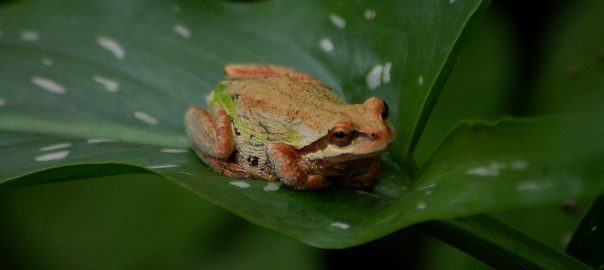 Money for urban biodiversity is scarce. What is the single most important idea, program or action any city should undertake to promote biodiversity?
Money for urban biodiversity is scarce. What is the single most important idea, program or action any city should undertake to promote biodiversity?
Pippin Anderson, Cape Town Ana Faggi, Buenos Aires Bram Gunther, New York Peter Head, London John Kostyack, Washington, D.C. David Maddox, New York Andre Mader, Montreal Peter Werner, Darmstadt
20 Comment(s)
Join our Conversation
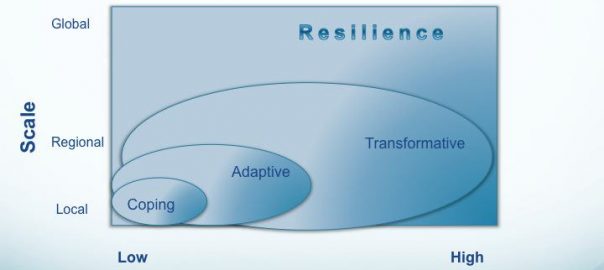 Urban Sustainability and Resilience—Why We Need to Focus on Scales
Urban Sustainability and Resilience—Why We Need to Focus on Scales
Thomas Elmqvist, Stockholm
Two of the most debated and challenging concepts in urban development are sustainability and resilience. How are they related? Do they mean approximately the same thing or are they distinctly different and can misunderstandings lead to undesired outcomes? In this essay I will try to clarify the concepts, discuss two...
6 Comment(s)Join our Conversation
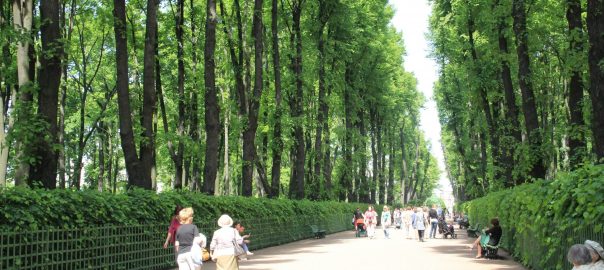 Historic Gardens – Where Nature Meets Culture – Can be Urban Biodiversity Hotspots
Historic Gardens – Where Nature Meets Culture – Can be Urban Biodiversity Hotspots
Maria E Ignatieva, Perth
I was lucky to be born in St. Petersburg, Russia, the city of museums and parks. My first scientific passion was exactly historical imperial gardens. Traditionally gardens have been seen as very special places, as paradises where people can enjoy sounds of water and birds, can rest their eyes on...
0 Comment(s)Join our Conversation
 Can Smartphones Save Urban Natural History?
Can Smartphones Save Urban Natural History?
David Goode, Bath
In 2008 the London Natural History Society celebrated its 150th anniversary with a conference on ‘London’s Natural History: past, present and future’. I was asked to consider future prospects. What changes might we expect in London’s natural history in fifty year’s time, and what are the prospects for the Society?...
0 Comment(s)Join our Conversation
 Cities and Biodiversity Outlook—Unprecedented Opportunities Lie Ahead in Greening Urban Expansion
Cities and Biodiversity Outlook—Unprecedented Opportunities Lie Ahead in Greening Urban Expansion
Thomas Elmqvist, Stockholm
The world is increasingly urban, interconnected, and changing. If current trends continue, by 2050 the global urban population is estimated to double and be around 6.5 billion. Most of future urban growth is expected to happen in small and medium-sized cities, not in megacities, and approximately 60% of the projected...
6 Comment(s)Join our Conversation
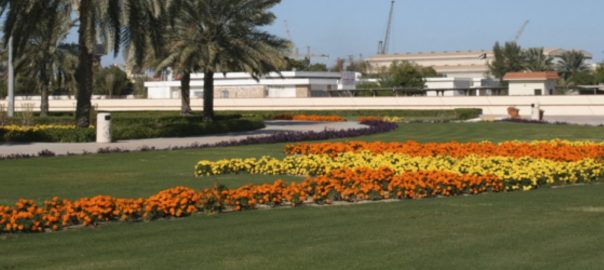 Let us champion “Biodiversinesque” landscape design for the 21st century
Let us champion “Biodiversinesque” landscape design for the 21st century
Maria E Ignatieva, Perth
I started my research as a landscape architect and urban ecologist in St. Petersburg, Russia. My home town is one of the biggest European cities and it is famous for numerous historical landscapes. In that time (1990’s) investigation of urban biotopes was a novelty. Passion for the history of landscape...
21 Comment(s)Join our Conversation
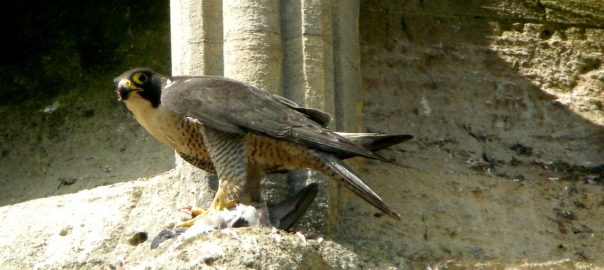 Colonisation and Creativity: Two of the Drivers in Urban Ecology
Colonisation and Creativity: Two of the Drivers in Urban Ecology
David Goode, Bath
Over the past two weeks I have experienced two very different aspects of urban ecology. The first centered on a pair of peregrine falcons nesting close to where I live in the city of Bath. The second was a visit to the Olympic Parklands which have been created for the...
1 Comment(s)Join our Conversation

